- Ruhr-Universität Bochum
Expertise in Materials Research
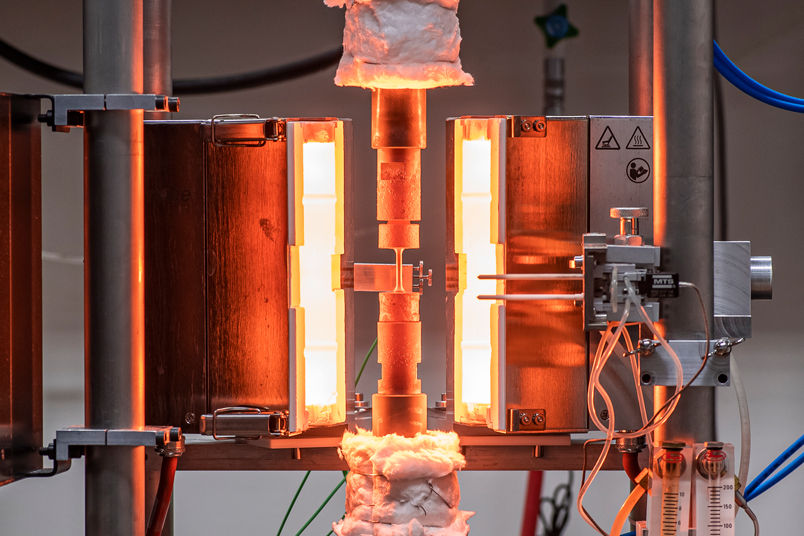
- Prof. Dr.-Ing. Andreas Ostendorf
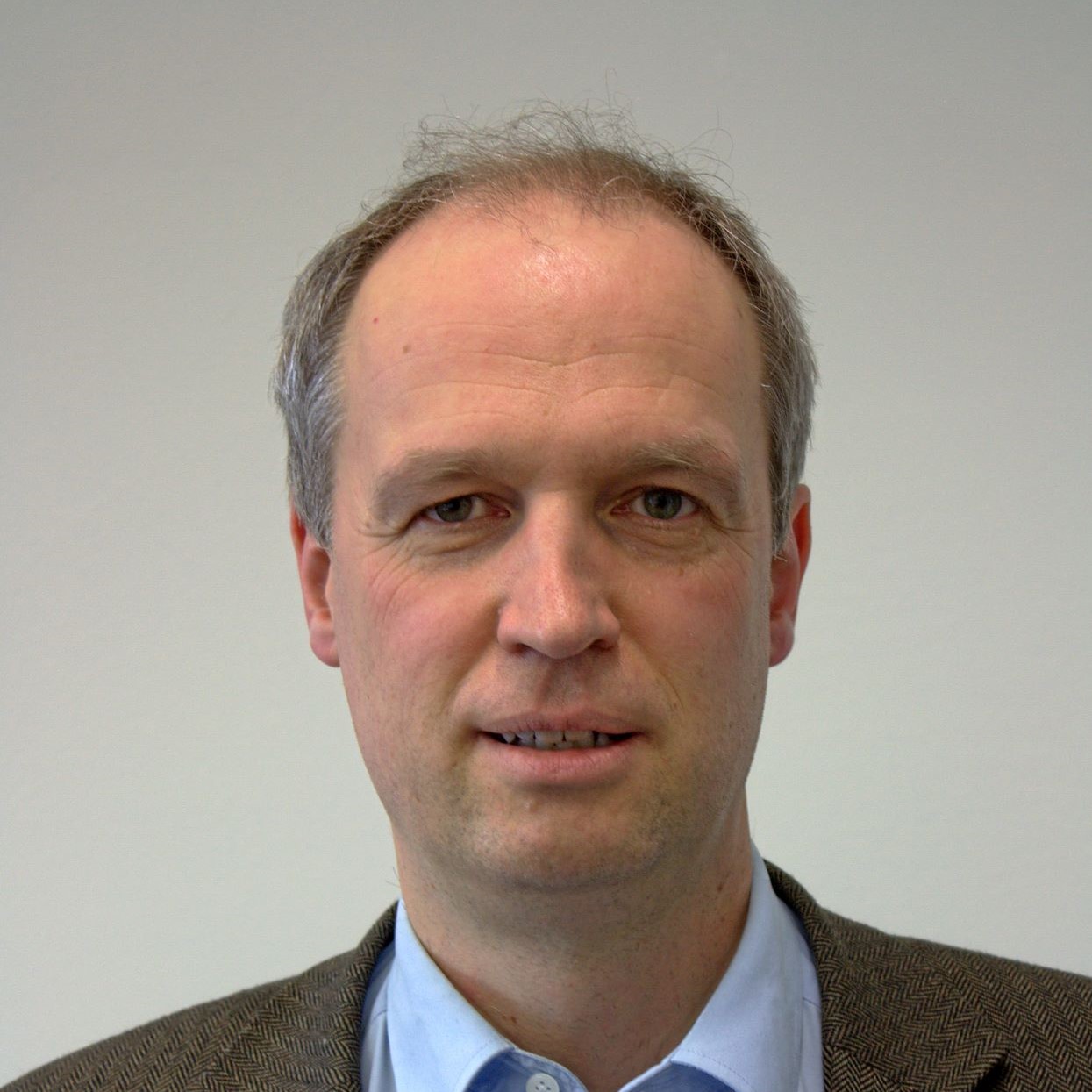
Contact
Personal website
Email: andreas[dot]ostendorf[at]rub[dot]deAbstract
At the Chair of Applied Laser Technologies (LAT) we focus on the two main application directions of laser technology, precision metrology and materials processing. In the area of laser materials processing we have strong and long term expertise in the use of ultrashort laser pulses and their interaction with different kind of materials in order to pattern surfaces or to generate structures with smallest dimensions of a few micrometer. Especially, our current research addresses the functionalization of surfaces by laser ablation and/or modification (e.g. flexible electronics based on graphene or other 2D materials which can be tailored according to the surrounding materials). Also we have made significant contribution to the research in additive manufacturing. Based on the two processes Selective Laser Melting (SLM) and Laser Materials Deposition (LMD) scientists at our chair were able to generate first components of high entropy alloys (HEA) with up to five equally distributed (refractory) elements in the powder blend. Also material systems composing of metals and polymers have been used in LMD to generate hybrid or graded components. Besides we work on further automation of these processes to make them more reliable and precise. - Prof. Dr.-Ing. Arne Röttger

Contact
Personal website
Phone: +49 212 231340110Email: roettger[at]uni-wuppertal[dot]deAbstract
Since 2011 I have been working as a research group leader at the Institute of Materials Technology of the Ruhr University Bochum. My research focusses on the development of new materials containing hard phases with improved mechanical, tribological and chemical properties. Material development takes into account aspects of metallurgy as well as technological constraints such as resource efficiency, cost-effectiveness and processability. For material development I use both computer-based and experimental methods. In principle, I consider the question of the relationship between the chemical composition and the stability of individual phases, the production-related structure formation processes and the associated material properties. - Prof. Dr.-Ing. Jan Sehrt

Contact
Personal website
Phone: +49 234 32 26162Email: jan[dot]sehrt[at]ruhr-uni-bochum[dot]deAbstract
Prof. Dr.-Ing. Jan T. Sehrt started his research activities in the field of additive manufacturing in 2003. He and his employees at the chair Hybrid Additive Manufacturing (HAM) – which was established at RUB in 2018 – offer an extensive expertise along the complete process chain of additive manufacturing. The chair deals with material modifications and investigations and has a high level of expertise in beam-matter interaction within the additive manufacturing process. Furthermore, the process qualification of new materials, the improvement of mechanical properties by influencing the material structure on the one hand and optimization of the surface structure on the other hand as well as hybrid part concepts and their qualification are within the R&D scope of HAM. Additionally research activities implement additive part design (e.g. optimization of topology, lightweight structures and integration of functionalities) and quality control within the additive manufacturing process as well as applied to the produced parts. Prof. Dr.-Ing. Jan T. Sehrt also implements into standardization work such as the VDI Technical Committee Additive Manufacturing (FA105), or as a German expert in other standardization committees for Additive Manufacturing such as ISO/TC 261 AM and NA 145-04-01 AA (DIN). - Prof. Dr.-Ing. Heinz Voggenreiter
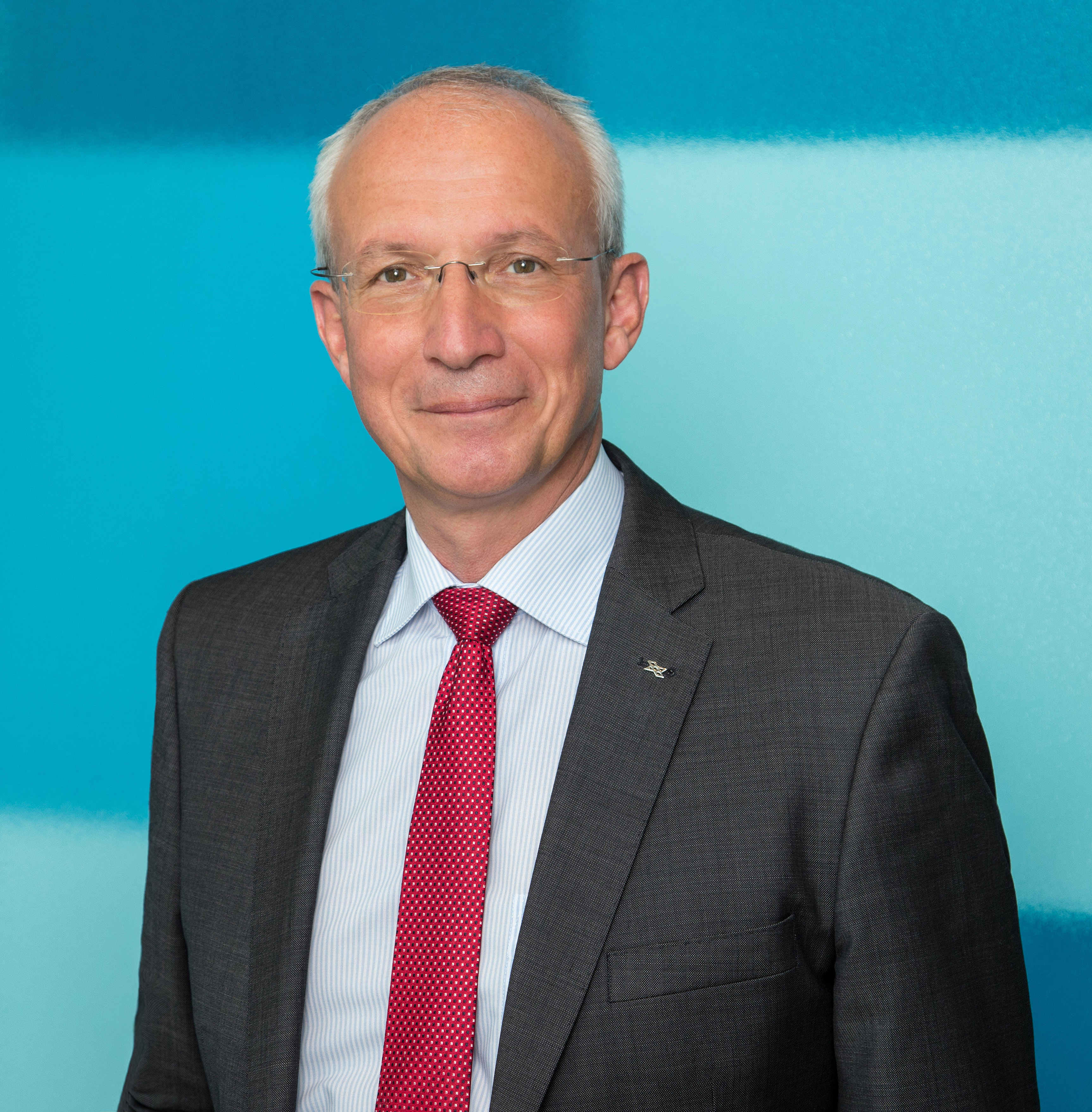
Contact
Personal website
Phone: +49 (0)711 68 62 444Email: heinz[dot]voggenreiter[at]dlr[dot]deAbstract
Professor Heinz Voggenreiter joined the German Aerospace Center (DLR) in 2005. He heads the Institute of Materials Research in Cologne and the Institute of Structures and Design in Stuttgart and Augsburg. The research portfolio spreads across the fields of metallic, ceramic and hybrid structures and materials, aerogels and aerogel-composites, thermoelectric systems and high-temperature and functional coatings. The development of numerical methods to simulate the behavior of materials and components completes these competencies. Beforehand, Voggenreiter worked for Airbus Group, formerly EADS, and Daimler AG. As founding member and vice chairman of the youth research center AEROSPACE LAB in Herrenberg, he actively promotes young pupils and students. Since 2005 Voggenreiter is a Professor at the University of Stuttgart for Lightweight Design in Aeronautics. In 2018 he became honorary member at the School of Engineering at the University of British Columbia in Kelowna (Canada). - Prof. Dr. Sebastian Weber
Contact
Personal website
Phone: +49 (0)234 32-22410Email: sebastian-ludger[dot]weber[at]ruhr-uni-bochum[dot]deAbstract
Since April 2020, Sebastian Weber is head of the Chair for Materials Technology at RUB. He obtained his PhD at RUB in 2005 and conducted research at MPIE and HZB afterwards, followed by a full professorship at Bergische Universität Wuppertal (BUW) in 2014. At BUW he was responsible for the establishment of a new foundation chair “Novel Manufacturing Technologies and Materials”, related to pronounced transfer activities with a particular emphasis on circular economy and sustainable development. His research is focused on metallic materials, particularly iron-base alloys. A key aspect of his research are processes and materials related to powder metallurgy, including sintering, hot-isostatic pressing and additives manufacturing technologies. In these fields of research, correlations between processing, material and energy consumption, resulting microstructures and properties are addressed by him, always under consideration of technical applications.
- Dr.-Ing. Claudia Bock

Contact
Personal website
Phone: +492343223072Email: claudia[dot]bock[at]rub[dot]deAbstract
Within the chair of microsystems technology my research focuses on the electrical properties of new semiconductor materials (e.g. graphene, MoS2, solution processed metal oxides) for next generation electronics. Devices are prepared, characterized and optimized in terms of electrical performance, long-term stability, high scalability and functional reliability via interface modification, suitable choice of the materials and process conditions. I am interested in new device concepts, state-of-the-art semiconductor technology and flexible, transparent electronics. - Prof. Dr. Anna Böhmer
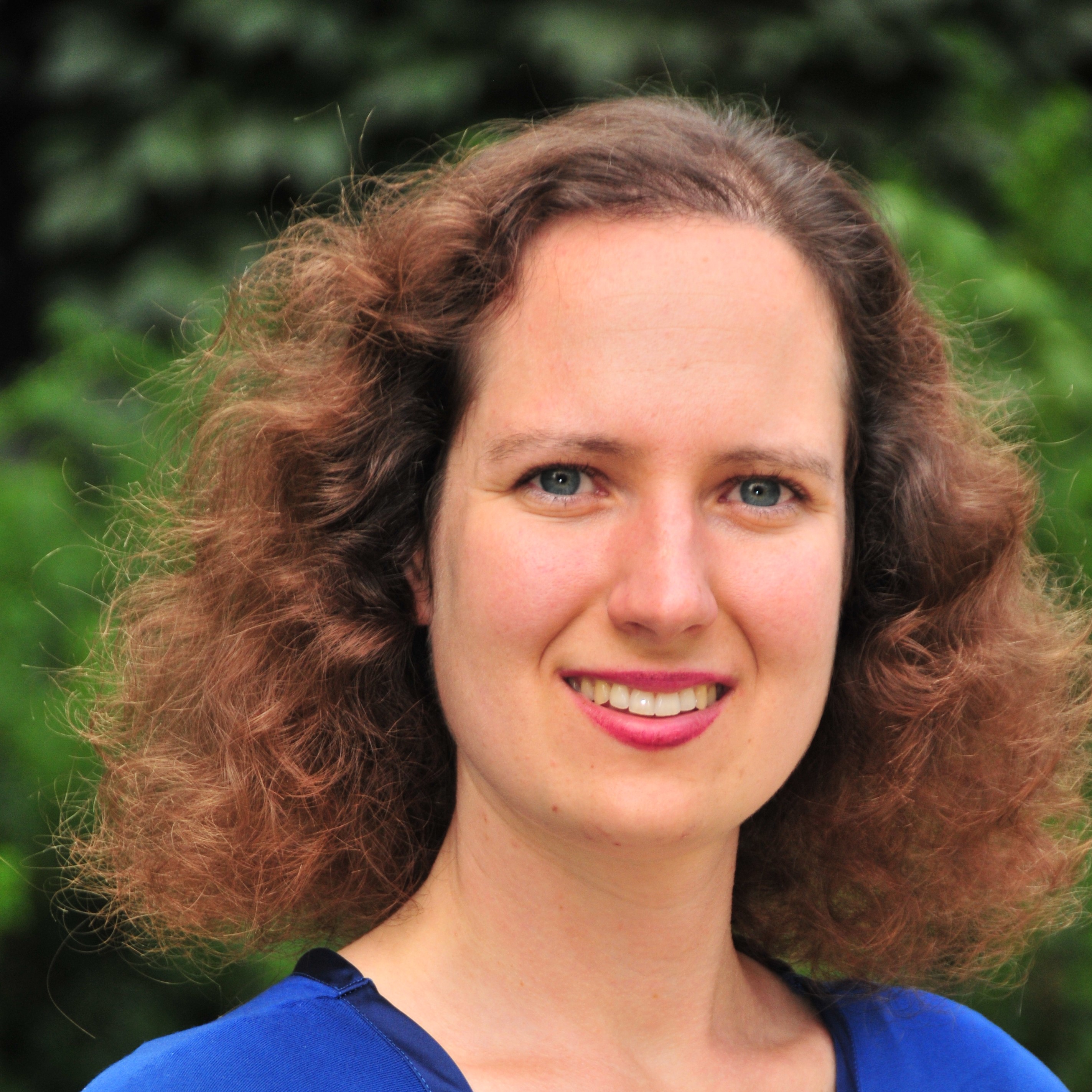
Contact
Personal website
Phone: +49 234 32 23649Email: boehmer[at]physik[dot]ruhr-uni-bochum[dot]deAbstract
I am currently building up a new quantum materials group at the physics department of the Ruhr-University. Our goal is to elucidate the interaction of correlated electronic phases with each other, with the crystal lattice and with the environment by a variety of experimental techniques. We will prepare singly-crystalline samples and study their structural, electrical, thermodynamic and mechanical properties in a wide and cryogenic temperature range and also in high magnetic fields. By manipulating these materials, we aim to discover new physics and interesting functional properties. - Prof. Dr. Silvana Botti
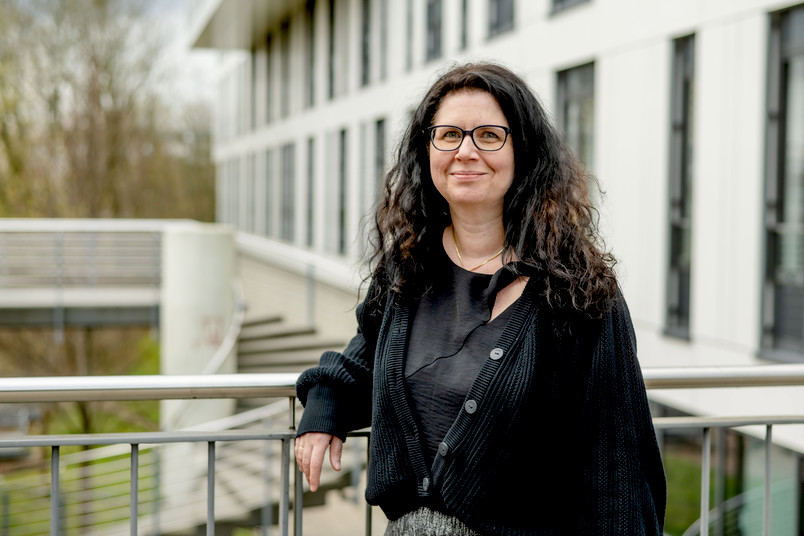
Contact
Personal website
Phone: +49 234 32 28773Email: silvana[dot]botti[at]rub[dot]deAbstract
I am an expert in the first-principles simulation of electronic excitations and optical properties of complex materials. My team works in close collaboration with experimental groups on groundbreaking topics in condensed matter physics and optics, but we also engage in the development of theories, methods and scientific software. We use computational material modelling to search for improved electronic and quantum materials and to understand how they can be combined to create heterostructures, alloys, doped crystals or simply new compounds. My studies contribute to the exciting research field of computational materials design, an emerging multidisciplinary topic that brings together innovative work from condensed matter physics, materials chemistry and computer science. My main research efforts are currently focused on the design of functional interfaces and high-throughput engineering of dopants and alloys for energy generation, storage and saving. - Prof. Dr. Ilya Eremin
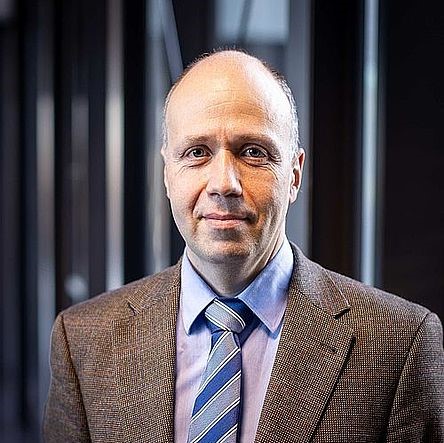
Contact
Personal website
Phone: +49 0234 32 26604Email: ilya[dot]eremin[at]rub[dot]deAbstract
My group research activity lie in general field of quantum many-body theory and its application in condensed matter and related systems. Our particular interests are related to the investigation of strongly correlated low-dimensional electronic and magnetic systems, unconventional superconductivity, non-equilibrium phenomena, topological field theories in topological insulators and novel states of matter forming at the interfaces. - Prof. Dr. Anna Grünebohm
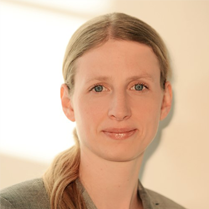
Contact
Personal website
Phone: +49 234 32 29377Email: anna[dot]gruenebohm[at]rub[dot]deAbstract
Anna Grünebohm is head of the group Scale-bridging Simulation of Functional Composites at the Interdisciplinary Centre for Advanced Materials Simulation (ICAMS) and a junior professor in the Departments for Mechanical Engineering and Physics and Astronomy at RUB. Currently, she is member of the MRD board and course director of the graduate school Scale-bridging Materials Modelling. Her work focuses on the computer aided design of functional ferroelectric materials for energy technology. In particular she is interested in the coupling between microstructure, phase transitions and the magnitude and reversibility of functional responses. Anna obtained her Ph.D. at the Faculty of Physics at the University of Duisburg-Essen and before coming to Bochum she worked in the priory program Ferroic cooling. - Prof. Dr. Evgeny Gurevich
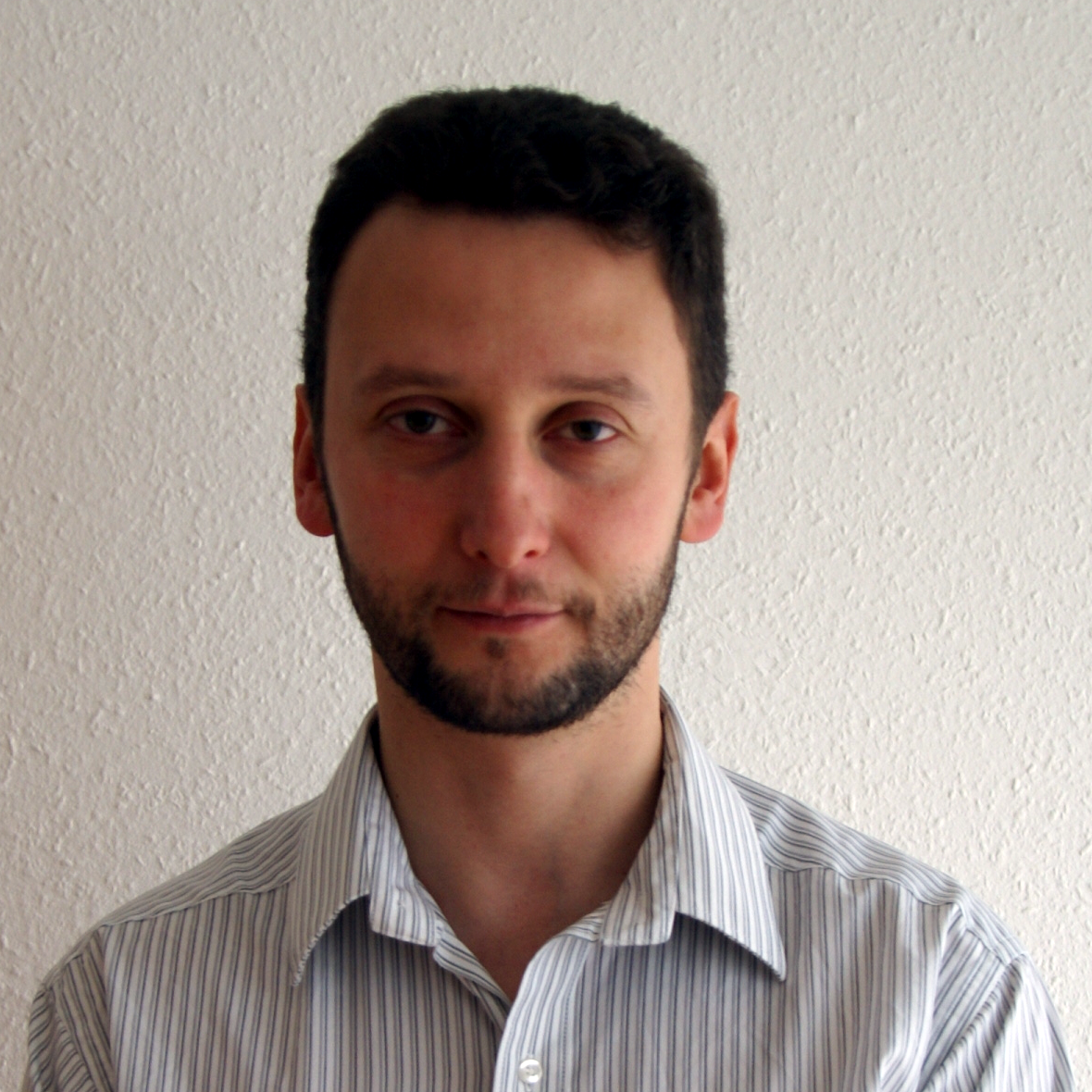
Contact
Personal website
Phone: +49 2551 9-62322Email: gurevich[at]fh-muenster[dot]deAbstract
Evgeny Gurevich graduated in plasma physics at the Technical University of St.-Petersburg (Russia) and prepared his PhD in nonlinear Physics at the University of Münster in 2004. After two postdoctoral stays in the Max Planck Institute for Dynamics and Self-Organization in Göttingen and in ISAS - Institute of Analytical Sciences in Dortmund he was appointed as Assistant professor at the Ruhr-Universität Bochum in 2012. His research is focused on interaction between ultrasort laser pulses with solids, laser ablation in liquids and self-organized surface structures. His scientific interests also include generation of nanoparticles by femtosecond laser ablation in liquids and application of such particles in physics and engineering. - Prof. Dr. Daniel Hägele

Contact
Personal website
Phone: +49 234 32 28327Email: daniel[dot]haegele[at]rub[dot]deAbstract
Daniel Hägele is leading the work group Spectroscopy of Condensed Matter as a professor at the Department for Physics and Astronomy at RUB. He uses time-resolved laser spectroscopy for investigating semiconductor materials for their potential use in spin-electronics and spin-optoelectronics. The electron spin dynamics is directly monitored with a temporal resolution down to picoseconds. His group is also active in the field of magneto- and electro-caloric materials for energy efficient refrigeration. A new experimental method developed in Bochum allows for the measurement of caloric effects with very high precision even in materials where only thin samples are available. As part of a more fundamental approach to measurements he contributes to signal processing methods (lock-in amplifier, higher order spectrometer) and to evaluation-schemes that correctly treat quantum mechanical effects of the measurement. - Prof. Dr. Martin Hofmann

Contact
Personal website
Phone: +49 234 32 22259Email: martin[dot]hofmann[at]rub[dot]deAbstract
The Chair for Photonics and Terahertz Technology performs research and teaching on optoelectronic devices, in particular semiconductor lasers, and on photonic and Terahertz (THz) systems. The main research areas are spin-controlled lasers, new semiconductor laser materials, diode laser system development, THz and optical measurement and imaging systems and their applications. These include 3D high resolution imaging approaches for material characterization and biomedical applications. The Chair for Photonics and Terahertz Technology collaborates with national and international partners in research and development projects. Please do not hesitate to contact us if you have any questions. - Dr. Andreas Kreyssig

Contact
Personal website
Phone: +49 (0) 234 32 - 23648Email: andreas[dot]kreyssig[at]rub[dot]de - Prof. Dr. Christian Liebscher

Contact
Personal website
Email: christian[dot]liebscher[at]rub[dot]de - Dr. Arne Ludwig
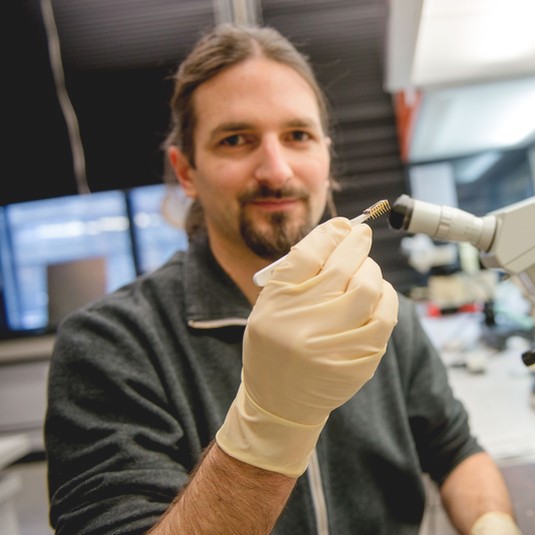
Contact
Personal website
Phone: +49 234 32 25864Email: arne[dot]ludwig[at]rub[dot]deAbstract
I am responsible for the epitaxial growth of gallium arsenide based semiconductor heterostructures for different types of electronic and optoelectronic research activities. A particular highlight is the growth of ultrahigh quality self-assembled quantum dots; Few nanometer sized crystalline inclusions in a matrix material that can emit indistinguishable single photons. I am interested in studying diverse electronic, photonic and phononic quantum phenomena in these solid state materials for fundamental research and possible future applications. - Prof. Dr. Miguel Marques
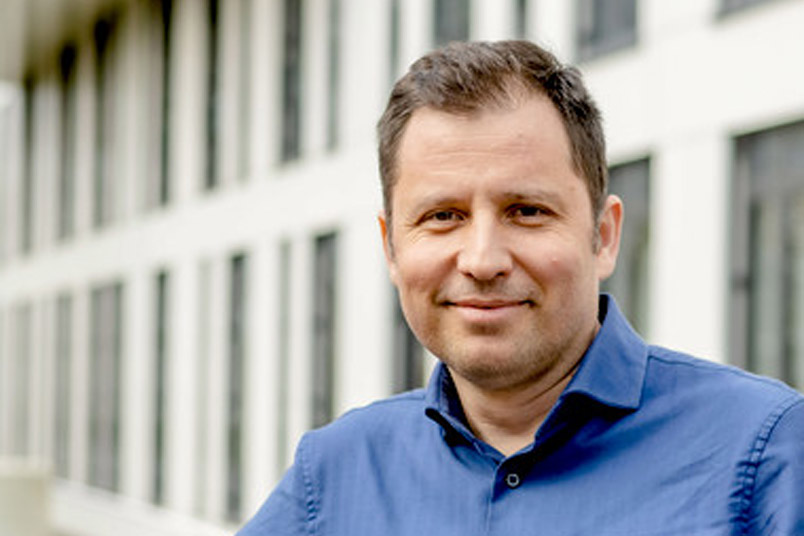
Contact
Personal website
Phone: +49 234 32 26370Email: miguel[dot]marques[at]rub[dot]deAbstract
Our group works in the development and application of state-of-the-art ab-initio methods to systems of both fundamental and technological interest. - Prof. Dr. Simon Moser
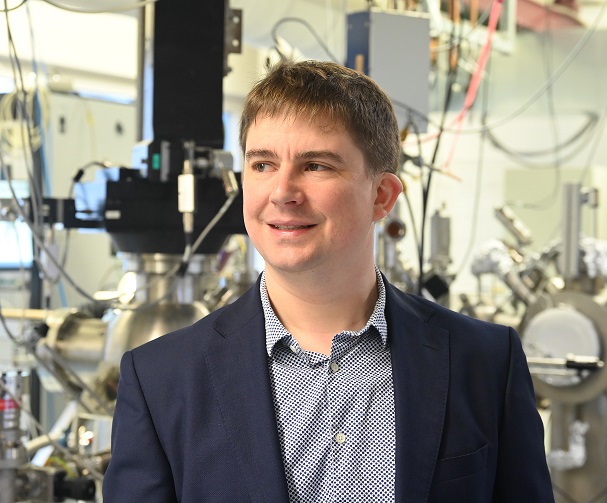
Contact
Email: simon[dot]moser[at]ruhr-uni-bochum[dot]deAbstract
My research aims to develop a fundamental understanding of the electronic structure of complex transition-metal oxides and topological materials—systems that underpin both exciting quantum phenomena and emerging technological applications. I primarily investigate these materials using synchrotron-based spectroscopies such as angle-resolved photoemission (ARPES), for which I also develop intuitive yet predictive theoretical models and analysis methodologies. Currently, my work focuses on electron correlation and altermagnetism in the non-symmorphic Dirac semimetals RuO₂ and IrO₂, as well as the topological properties of atomic monolayers grown on SiC. These efforts span the full materials pipeline, from epitaxial synthesis to the exploration of surface electronic and catalytic properties. - Prof. Dr.-Ing. Thomas Mussenbrock
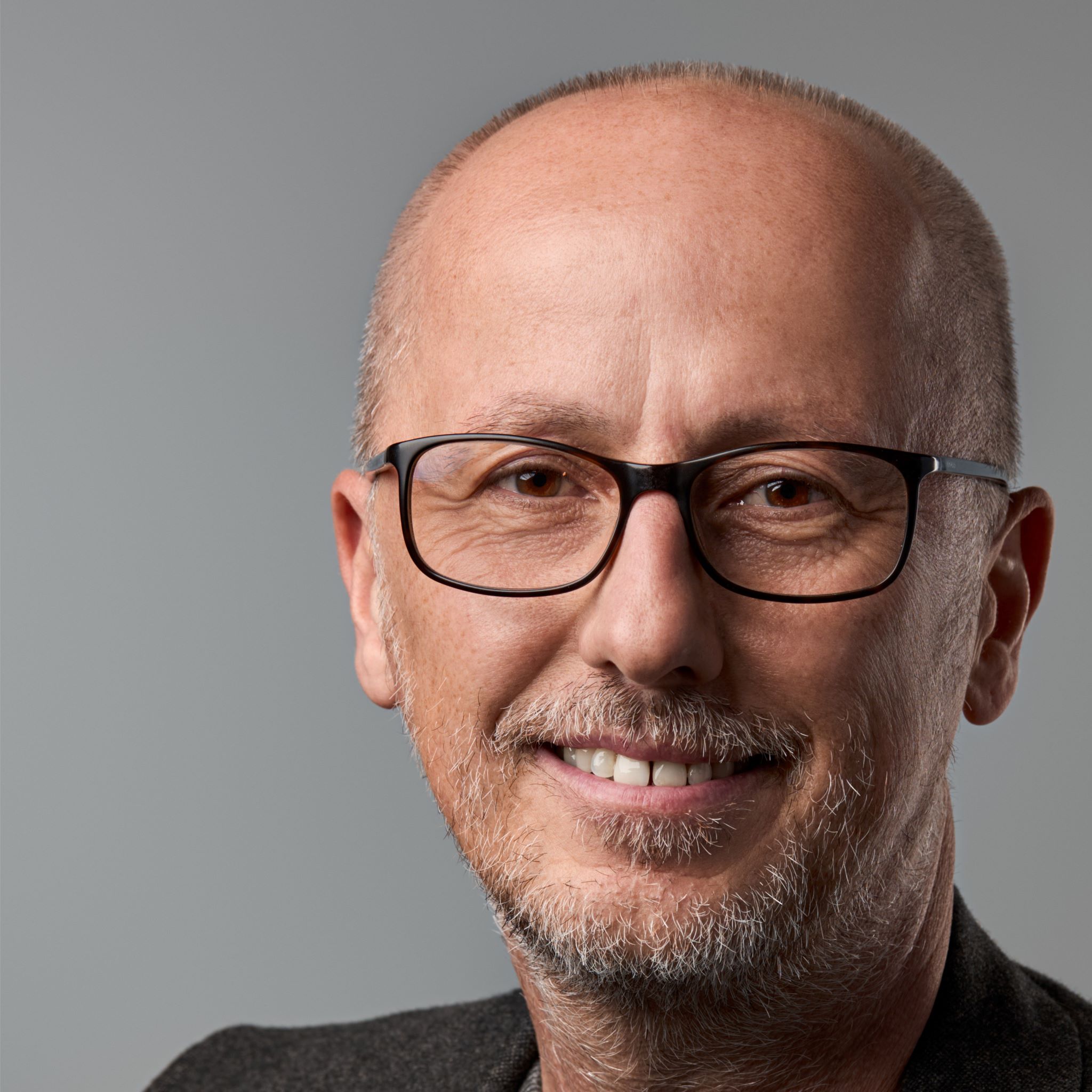
Contact
Personal website
Phone: +49 234 32 22488Email: thomas[dot]mussenbrock[at]rub[dot]deAbstract
I am a full professor of electrical engineering in the Department of Electrical Engineering and Information Sciences at Ruhr University Bochum, Germany. I hold the Chair of Applied Electrodynamics and Plasma Technology (AEPT). My research interests are in the area of modeling and simulation of low-temperature plasmas and plasma processes. I am also interested in transport phenomena at the nanoscale, in particular in nanoelectronic and nanoionic resistive switching devices. I received both the PhD and the venia legendi from Ruhr University Bochum, Germany. Prior to my current position (2016-2020), I was a full professor at Brandenburg University of Technology where I held the Chair of Electrodynamics and Physical Electronics in the Faculty of Mathematics, Computer Science, Physics and Electrical Engineering. - Prof. Dr.-Ing. Andreas Ostendorf

Contact
Personal website
Email: andreas[dot]ostendorf[at]rub[dot]deAbstract
At the Chair of Applied Laser Technologies (LAT) we focus on the two main application directions of laser technology, precision metrology and materials processing. In the area of laser materials processing we have strong and long term expertise in the use of ultrashort laser pulses and their interaction with different kind of materials in order to pattern surfaces or to generate structures with smallest dimensions of a few micrometer. Especially, our current research addresses the functionalization of surfaces by laser ablation and/or modification (e.g. flexible electronics based on graphene or other 2D materials which can be tailored according to the surrounding materials). Also we have made significant contribution to the research in additive manufacturing. Based on the two processes Selective Laser Melting (SLM) and Laser Materials Deposition (LMD) scientists at our chair were able to generate first components of high entropy alloys (HEA) with up to five equally distributed (refractory) elements in the powder blend. Also material systems composing of metals and polymers have been used in LMD to generate hybrid or graded components. Besides we work on further automation of these processes to make them more reliable and precise. - Prof. Dr. Michael Scherer
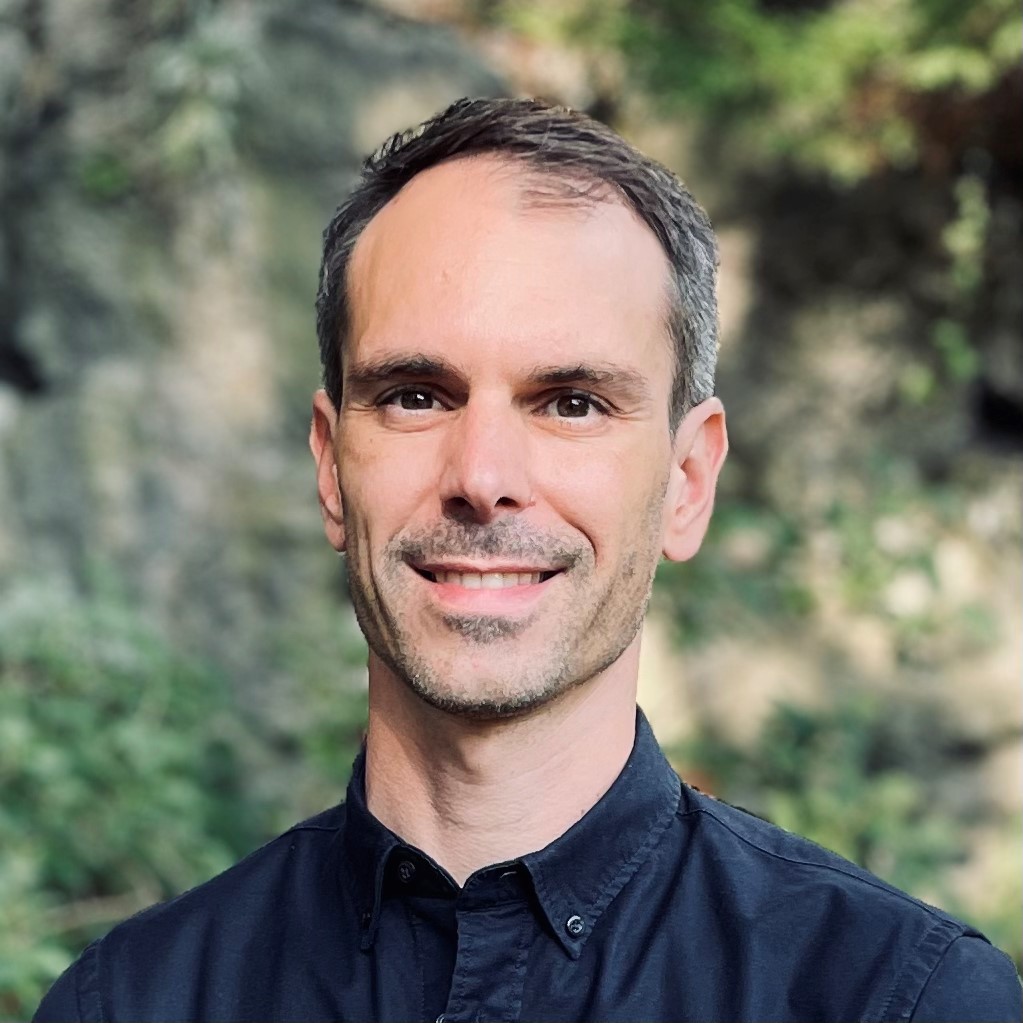
Contact
Email: michael[dot]scherer-u7e[at]ruhr-uni-bochum[dot]deAbstract
The research of my group is focused on the exploration of emergent phenomena and correlated behavior of quantum matter and quantum materials. We develop and employ modern quantum field theoretical methods to understand and predict novel effects in a broad field ranging from condensed matter to particle physics - Prof. Dr. Ingo Steinbach
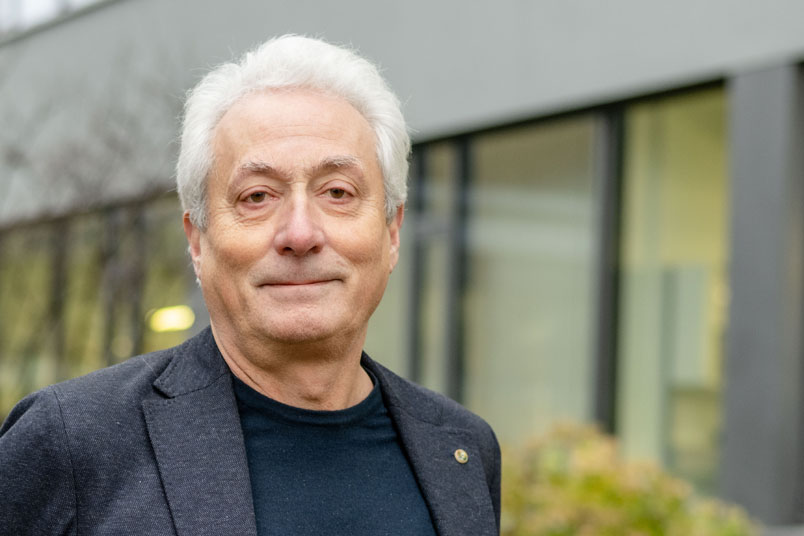
Contact
Personal website
Email: ingo[dot]steinbach[at]rub[dot]deAbstract
Ingo Steinbach is director of the Department for “Scale-bridging Thermodynamic and Kinetic Simulation (STKS)” at the Interdisciplinary Centre for Advanced Materials Simulation (ICAMS), professor in the Department of Mechanical Engineering and associated for Physics and Astronomy at RUB. He is one of the pioneers in “Phase-Field Modelling and Simulation”, an advance technique to simulate microstructure evolution and phase-transformations at the mesoscopic scale. Based on a solid ground in thermodynamically consistent continuum models, it uses accurate numerics for solving the moving boundary problem of evolving interfaces coupled to transport phenomea in the bulk phases, such as multicomponent diffusion, elastic and plastic interaction in solid and fluid flow in liquid and gas. Also electrical and magnetic effects are accessible by the method. Mostly focusing on metallic systems, also minerals and polymers are investigated in close collaboration with experimental groups. - Prof. Dr. Sebastian Weber
Contact
Personal website
Phone: +49 (0)234 32-22410Email: sebastian-ludger[dot]weber[at]ruhr-uni-bochum[dot]deAbstract
Since April 2020, Sebastian Weber is head of the Chair for Materials Technology at RUB. He obtained his PhD at RUB in 2005 and conducted research at MPIE and HZB afterwards, followed by a full professorship at Bergische Universität Wuppertal (BUW) in 2014. At BUW he was responsible for the establishment of a new foundation chair “Novel Manufacturing Technologies and Materials”, related to pronounced transfer activities with a particular emphasis on circular economy and sustainable development. His research is focused on metallic materials, particularly iron-base alloys. A key aspect of his research are processes and materials related to powder metallurgy, including sintering, hot-isostatic pressing and additives manufacturing technologies. In these fields of research, correlations between processing, material and energy consumption, resulting microstructures and properties are addressed by him, always under consideration of technical applications. - Prof. Dr. Andreas Wieck

Contact
Personal website
Phone: +492343226726Email: andreas[dot]wieck[at]rub[dot]deAbstract
Andreas Wieck is the director of the Institute of Experimental Physics and professor in the Department for Physics and Astronomy at RUB, holding since 1993 the Chair of Applied Solid State Physics. He performs Molecular Beam Epitaxy in ultra-high vacuum of IIIV-compounds as AlxGa1-xAs and InyGa1-yAs with thicknesses of sub-atomic layers up to 10µm, using band-gap engineering and dopants as Si and C to create on 3”-wafers High-Electron-Mobility-Transistors, Quantum Wells and Quantum Dots to produce light emitting diodes, laser diodes, transistors and single photon sources for quantum informatics and cryptography. He pioneered Focused Ion Beams for maskless doping and sputtering. Andreas obtained his PhD with experiments at the High-Field Magnet Laboratory in Grenoble/France at the University of Hamburg, was 8years tenure researcher at the Max-Planck-Institute for Solid-State-Research/Stuttgart and 1year at the NTT Basic Research Labs in Tokyo/Japan before joining RUB.
- Prof. Dr. Ulf-Peter Apfel
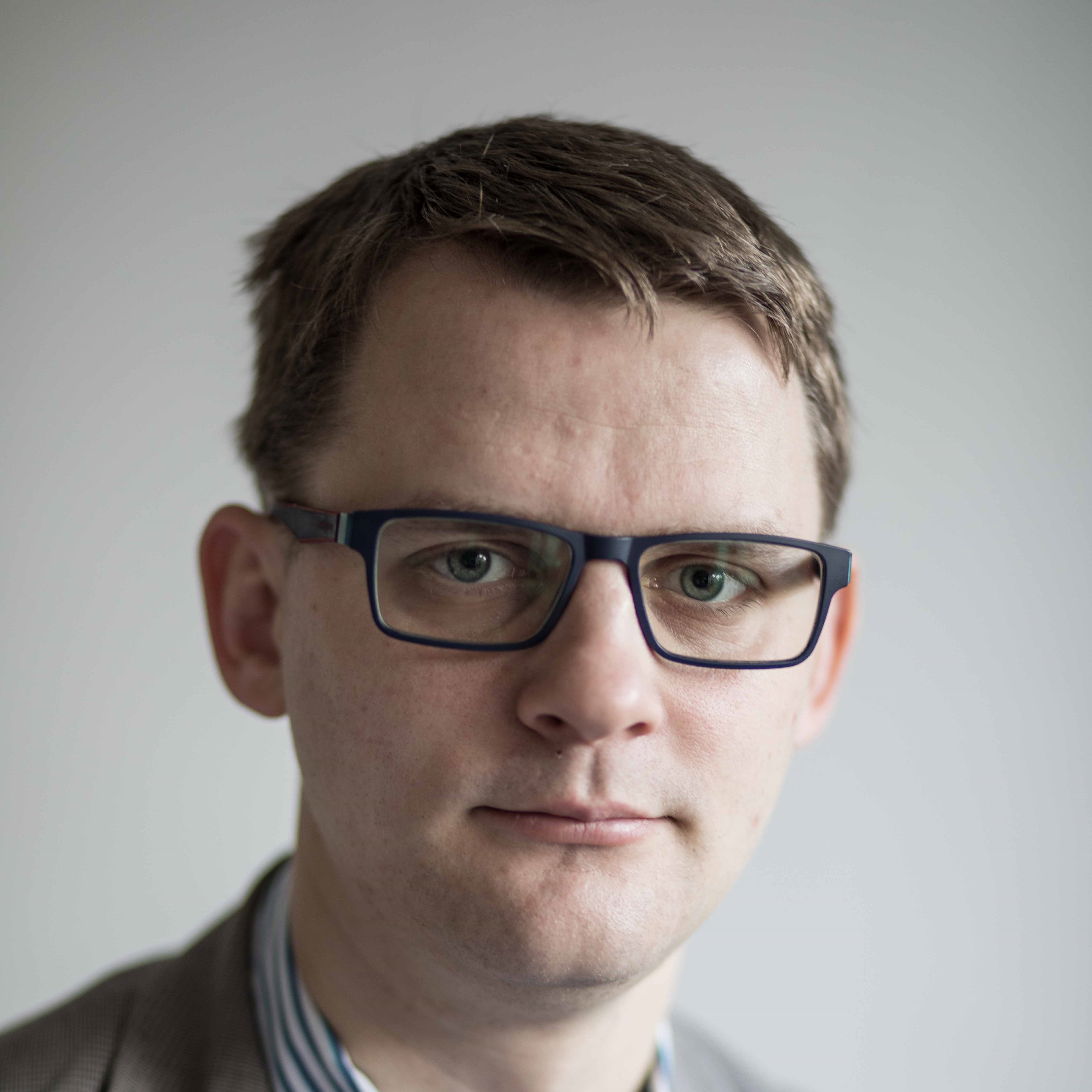
Contact
Personal website
Phone: +49 (0)234 3224187Email: ulf[dot]apfel[at]rub[dot]deAbstract
The research in the Emmy-Noether group at the RUB as well as my ATTRACT group for electrosynthesis at Fraunhofer UMSICHT is devoted to the activation of biologically and industrially relevant small molecules. Among others, especially the electrochemical activation of CO2 and formation of H2 are main topics and projects involve the synthesis of novel materials as mimics for natural enzymes (Carbon monoxide dehydrogenase and Hydrogenases) and their electrochemical evaluation. In addition, we evaluate our electrocatalytic active materials in e.g. custom-made gas diffusion electrodes, high pressure conditions and design our own electrolyzers to achieve the best performance for our materials and to provide prototype solutions for an industrial application. - Prof. Dr. Lars Borchardt
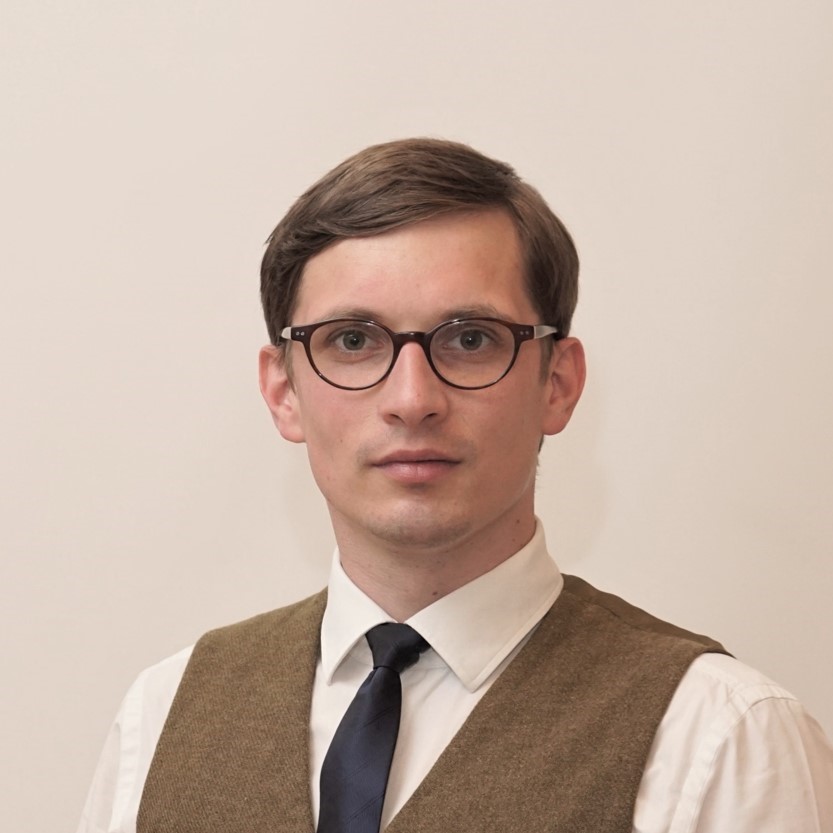
Contact
Personal website
Phone: +49 (234) 3229431Email: lars[dot]borchardt[at]rub[dot]deAbstract
It is a major challenge of our time to develop sustainable chemical processes and to reduce the amount of waste generated by the chemical industry. Particularly solvents, often harmful for the environment, accumulate in many of the chemical processes. Our group develops new synthesis concepts, completely avoiding the use of any solvents. These syntheses are based on mechanochemistry. We utilize mechanical energy, which is brought into the system by ball milling, to initiate chemical reactions, rather than temperature as in conventional thermally-induced reactions. With this, an unconventional chemistry is possible with different reaction mechanism, reaction products, and product selectivities as compared to classical solvent-based syntheses. We are focusing on the mechanochemical synthesis of polymers, ceramics, and nanostructured materials such as porous carbons, polymer frameworks and nanographenes. We are motivated by the fundamental curiosity how ball-milling, commonly utilized to destroy matter, can be applied to construct fragile and defined materials. - Dr. Rebecca Janisch
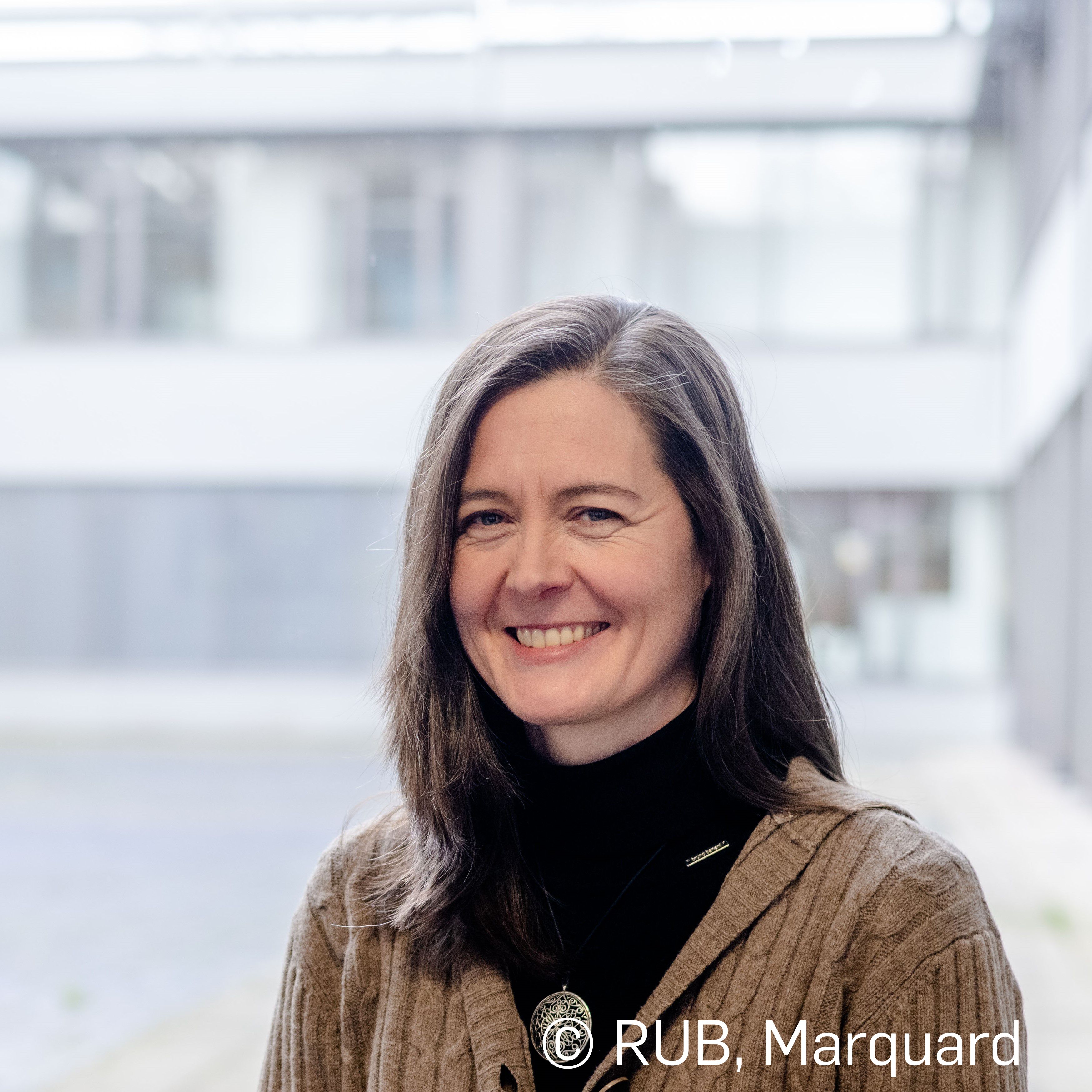
Contact
Personal website
Phone: +49 32 29304Email: rebecca[dot]janisch[at]rub[dot]deAbstract
Rebecca Janisch is the head of the working group Mechanical Properties of Interfaces at the Interdisciplinary Centre for Advanced Materials Simulation (ICAMS) and private lecturer at the Faculty of Mechanical Engineering. Rebecca wants to understand the mechanical properties of materials microstructures "from the bottom up", where the bottom can be the behaviour of defects, atoms, or even electrons in the microstructure. She works on models and relationships which relate this behaviour to properties like structure, stiffness and strength and can serve as constitutive relationships for multiscale mechanical modeling. Rebecca obtained her Ph.D. at the Max-Planck-Institute for metals research and the University of Stuttgart. Before starting at ICAMS she worked at the University of Erlangen-Nürnberg, the Technical University Chemnitz and the University of California Santa Barbara. - Prof. Dr. Andrea Kirsch
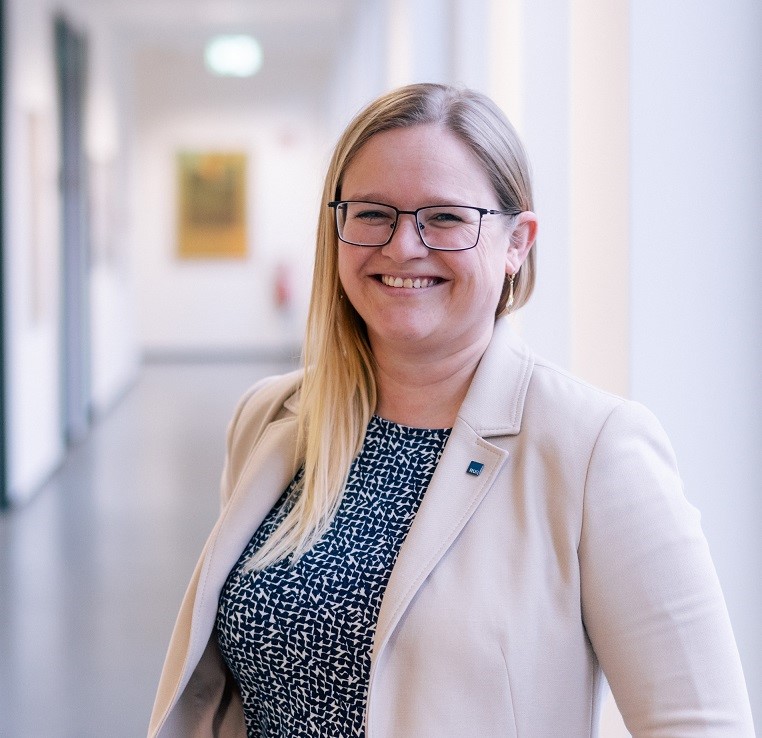
Contact
Phone: +49 234 32 18402Email: a[dot]kirsch[at]ruhr-uni-bochum[dot]deAbstract
Andrea Kirsch leads the Oxidic Functional Materials Group in RC FEMS and is a Tenure-Track Assistant Professor at the Faculty of Chemistry and Biochemistry at the Ruhr University Bochum. Positioned at the intersection of chemistry, physics, and materials science, her group aims to develop advanced materials for future energy applications. One of the foci is the development of innovative strategies for material design by unraveling how atomic, electronic, and microstructural features evolve during synthesis or under external stimuli. To achieve this, we use cutting-edge characterization techniques at large-scale facilities such as synchrotrons, allowing us to study these dynamic processes in real time. One material class in focus are high-entropy oxides, which represent compositionally complex solid solutions. They break with traditional design concepts by incorporating multiple elements in nearly equal proportions within a single crystalline structure. This novel approach offers remarkable flexibility for tailoring material properties, opening new avenues for functionality and performance. By establishing synthesis-structure-performance relationships and guiding design principles, our research aims at developing the next generation of materials that could drive advances in catalysis, energy storage, and sustainable technologies. - Prof. Dr. Bastian Mei
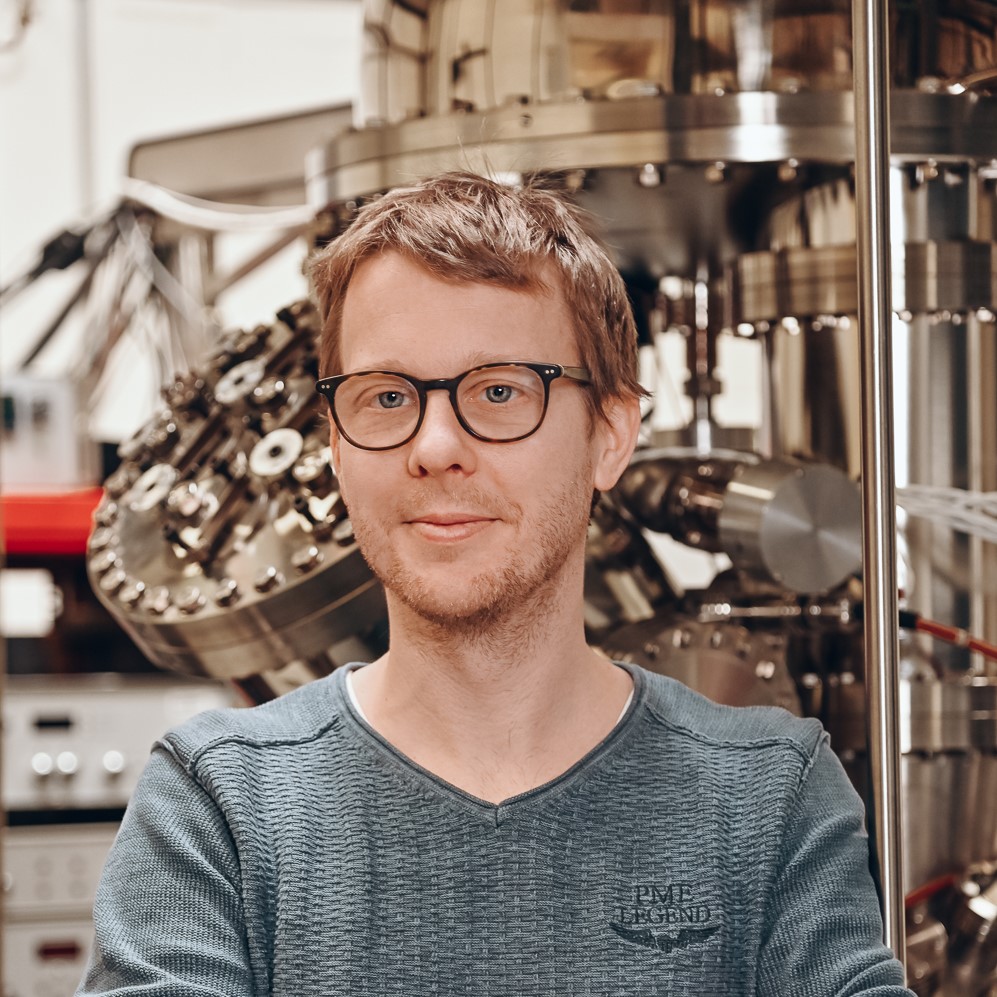
Contact
Personal website
Email: bastian[dot]mei[at]rub[dot]deAbstract
We combine our knowledge in physical chemistry and engineering to study complex multiphase (solid/gas/liquid) catalytic reaction systems stimulated by (solar) light or electrical energy. Moreover, we integrate thermal energy or other stimuli to synergistically improve catalytic performances. Reactions of interest include water oxidation, production of oxidizing chemicals, hydrogen generation, selective alcohol oxidation, oxidative decarboxylation of carboxylic acids and purification of (industrial) waste streams using metal oxides and carbon based compounds. - Prof. Dr. Wolfgang Schuhmann
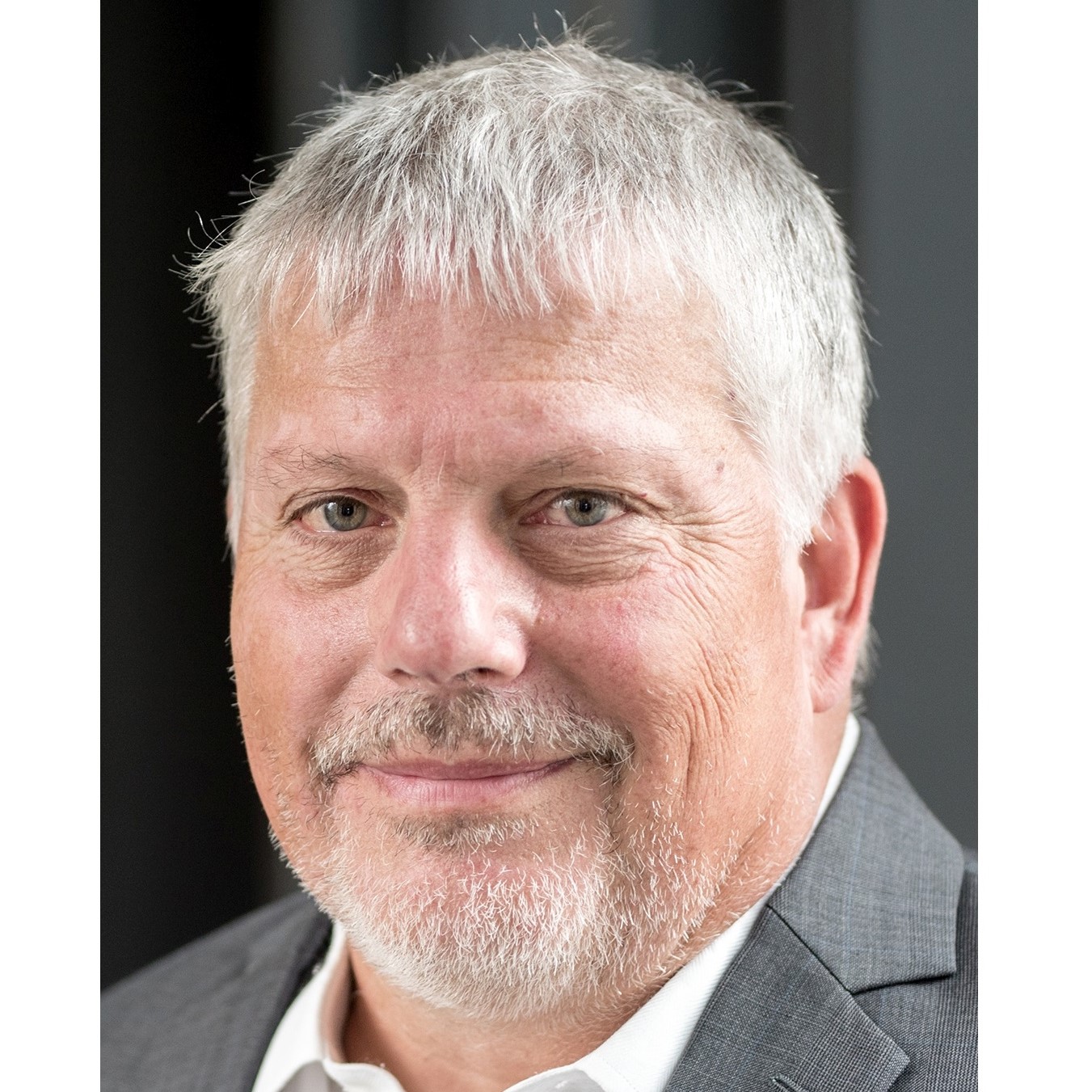
Contact
Personal website
Phone: +492343226200Email: wolfgang[dot]schuhmann[at]rub[dot]deAbstract
The research at the Chair of Analytical Chemistry - Center for Electrochemical Sciences (CES) focuses on a broad spectrum of research fields from bioelectrochemistry to materials for energy conversion. Specifically we design electrocatalysts for important reactions for energy conversion e.g. for the hydrogen evolution reaction, the oxygen reduction reaction, the oxygen evolution reaction and the CO2 reduction reaction among others. The catalysts are evaluated using nanoelectrochemical techniques, high resolution local electrochemistry and hyphenated techniques combining electrochemistry with spectroscopy. Finally, we evalaute the reactions in model electrolyzers under close to industrial conditions. Main focus is on the elucidation of reaction mechanisms, structure-activity-stability relations and the design of improved catalysts. - Prof. Dr. Ferdi Schüth
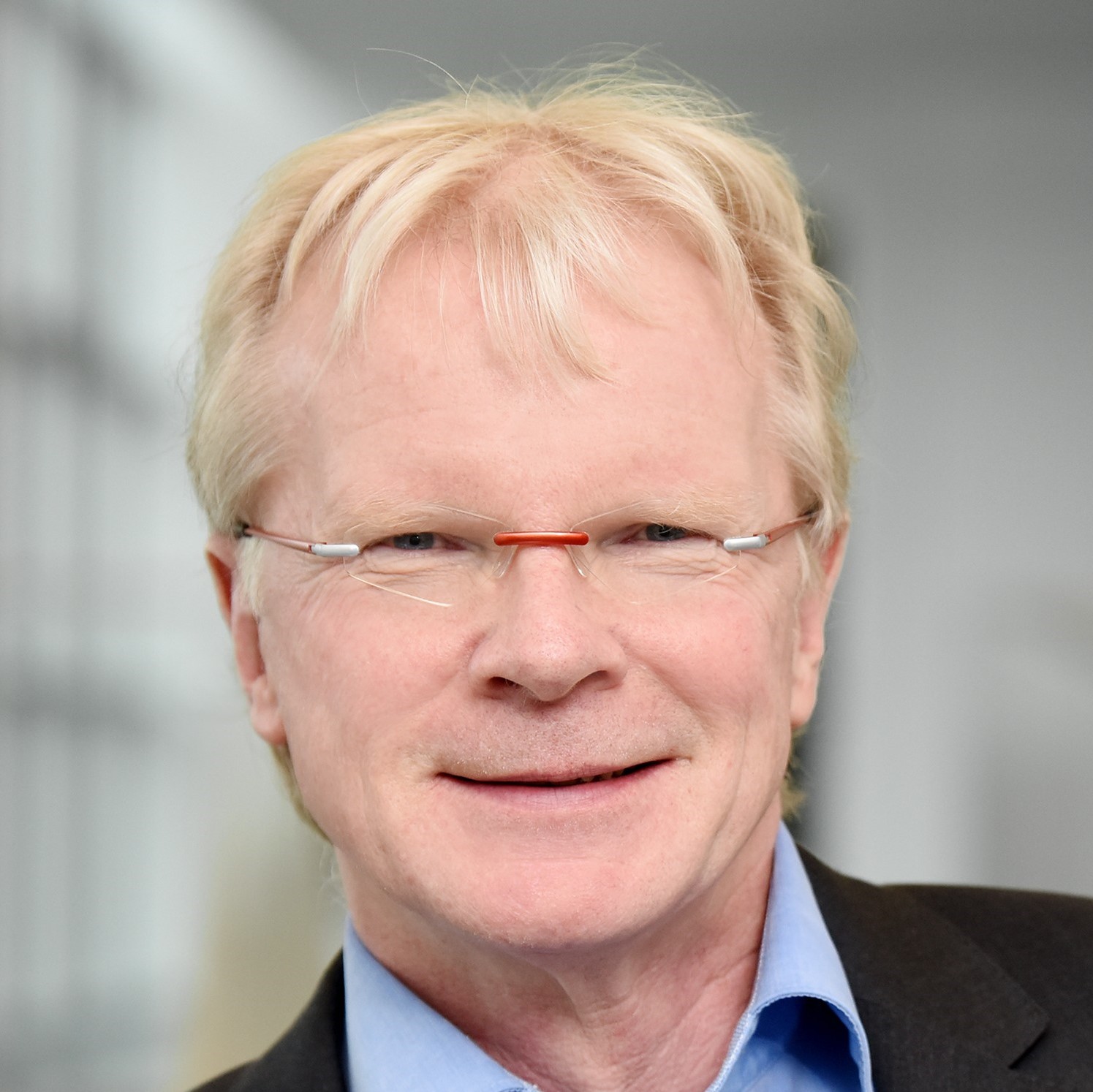
Contact
Personal website
Phone: +49 208 306-2373Email: schueth[at]kofo[dot]mpg[dot]deAbstract
I was born in 1960 in Warstein. I’m married and father of two daughters. I studied Chemistry at the Westfälische Wilhelms-Universität (Münster), where I received my doctorate in 1988. Additionally, in 1989, I passed the First State Exam in Law. After 5 years as scientific assistant at the Johannes-Gutenberg-Universität (Mainz) I became Professor in Chemistry in 1995. From 1995 till 1998 I worked as Professor for Inorganic Chemistry at the Johann-Wolfgang-Goethe-Universität (Frankfurt). Since 1998 I’m Director at the Max-Planck-Institut für Kohlenforschung (Mülheim an der Ruhr) and since 2014 Vice-President of the Max-Planck-Gesellschaft (Munich). My research field comprises: energy, biomass conversion, crystallization processes, synthesis of catalyst materials, catalysis, zeolites, ordered mesoporous materials and hydrogen storage materials. - Prof. Dr. Marialore Sulpizi

Contact
Personal website
Phone: +49 234 32 23737Email: marialore[dot]sulpizi[at]rub[dot]deAbstract
My research aims to understand the structure, dynamics and reactivity of solid-liquid interfaces using a multiscale approach that includes ab initio and atomistic molecular dynamics simulations. Our group pays special attention to electrified interfaces. Knowledge of the molecular structure of water and electrolyte solutions in the vicinity of a charged substrate is a prerequisite for the fundamental understanding of natural phenomena, such as transport and signal transmission at biomembranes, but also key to the further development of energy conversion and storage devices, such as in photocatalysis for water splitting. - Prof. Dr. Kristina Tschulik

Contact
Personal website
Phone: +49 0234 3229433Email: kristina[dot]tschulik[at]rub[dot]deAbstract
Kristina Tschulik heads the chair for Analytical Chemistry II “Electrocatalysis and Nanoscale Materials“at the Faculty of Chemistry and Biochemistry at RUB since 2018. Her research focusses on characterizing and tuning the physical properties of functional nanomaterials under application conditions and linking the properties of these materials to their intrinsic chemical (re-)activity for renewable energy technologies and sensing. To this end she develops and utilizes single entity electrochemistry and spectro-electrochemical methods. The latter combine electrochemistry with in situ or operando techniques, including mass spectrometry (DEMS), hyperspectral imaging dark field microscopy (EC HSI DFM), atomic force microscopy (EC-AFM) and surface enhanced IR and Raman Spectroscopy (SERS and SEIRAS). Driven by the transfer-supportive academic environment she had experienced as a postdoc at the University of Oxford, Kristina also initiated the chemistry-specific incubator “Start4Chem” at RUB.. - Dr. Ilia Tumkin
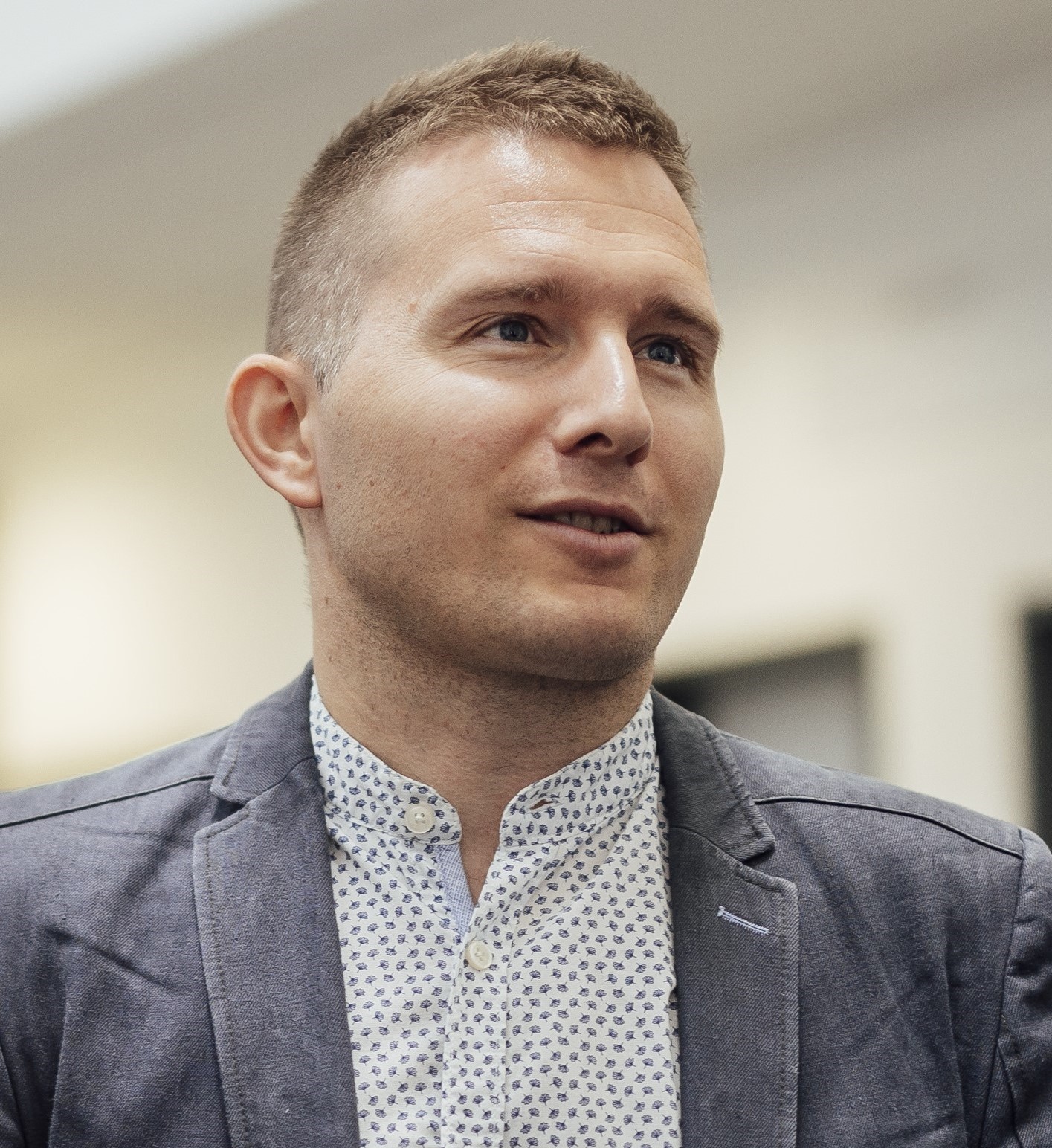
Abstract
Ilya Tumkin is a postdoctoral researcher at the Chair of Applied Laser Technologies. His primary research interests include the development of innovative precursors for direct laser writing, which paves the way for the creation of advanced flexible electronic components and other devices . He is also deeply involved in the development and investigation of electrochemical sensory materials, with a particular focus on applications for glucose and neurotransmitter detection, aiming to improve diagnostic tools and health monitoring systems. Collaborating closely with colleagues, Ilya Tumkin investigates the exciting possibilities of direct laser fabrication of metallic and composite micropatterns utilizing precursors based on Deep Eutectic Solvents. This study not only contributes to advancements in materials science but also explores environmentally friendly and efficient manufacturing processes. In addition Ilya has an interest in forensic science. He conducts comprehensive studies on inks and paper documents to enhance forensic analysis techniques (Forensic Document Examination), contributing valuable insights and methodologies for the examination of questioned documents by combining spectroscopic and chromatographic approaches with machine learning techniques. Ilya obtained his Master degree (Chemistry) in 2010 at Saint Petersburg State University, Russia and then obtained his Ph.D. in 2016 at the Peter the Great St.Petersburg Polytechnic University (Russia). Before coming to Bochum he worked at the Saint Petersburg State University as Researcher, Assistant and Associate Professor. - Prof. Dr. Sebastian Weber
Contact
Personal website
Phone: +49 (0)234 32-22410Email: sebastian-ludger[dot]weber[at]ruhr-uni-bochum[dot]deAbstract
Since April 2020, Sebastian Weber is head of the Chair for Materials Technology at RUB. He obtained his PhD at RUB in 2005 and conducted research at MPIE and HZB afterwards, followed by a full professorship at Bergische Universität Wuppertal (BUW) in 2014. At BUW he was responsible for the establishment of a new foundation chair “Novel Manufacturing Technologies and Materials”, related to pronounced transfer activities with a particular emphasis on circular economy and sustainable development. His research is focused on metallic materials, particularly iron-base alloys. A key aspect of his research are processes and materials related to powder metallurgy, including sintering, hot-isostatic pressing and additives manufacturing technologies. In these fields of research, correlations between processing, material and energy consumption, resulting microstructures and properties are addressed by him, always under consideration of technical applications. - Dr. Ridha Zerdoumi
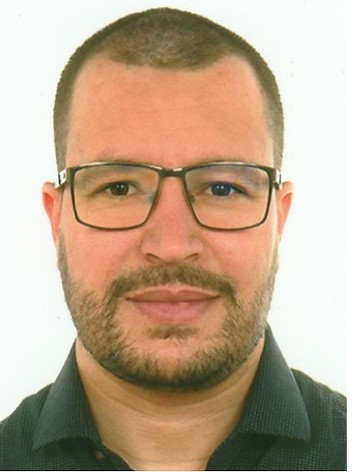
Contact
Email: ridha[dot]zerdoumi[at]rub[dot]deAbstract
Ridha Zerdoumi is a group leader of the “High-Entropy Intermetallics for Electrocatalysis” group at the Institute of Materials at RUB. He studied Physical Chemistry and Materials Science and obtained his doctorate from Chemnitz University of Technology. The group’s research focuses on the design of high-entropy intermetallic compounds (HEIMCs), ranging from conventional binary and ternary intermetallics to multicomponent materials. These materials combine the multifunctionality of high-entropy systems with the ordered structure of intermetallic compounds to enhance electrocatalytic performance. A key aspect of the group’s work is unraveling the role of surface atomic arrangements in governing electronic and geometric effects, which are crucial for optimizing activity, selectivity, and stability in electrocatalysis. Structure-property correlations are established by integrating combinatorial sputtering, high-throughput electrochemical characterization, and computational modeling to accelerate the discovery and optimization of next-generation electrocatalysts for electrochemical energy conversion.
- Prof. Dr.-Ing. Jan Frenzel
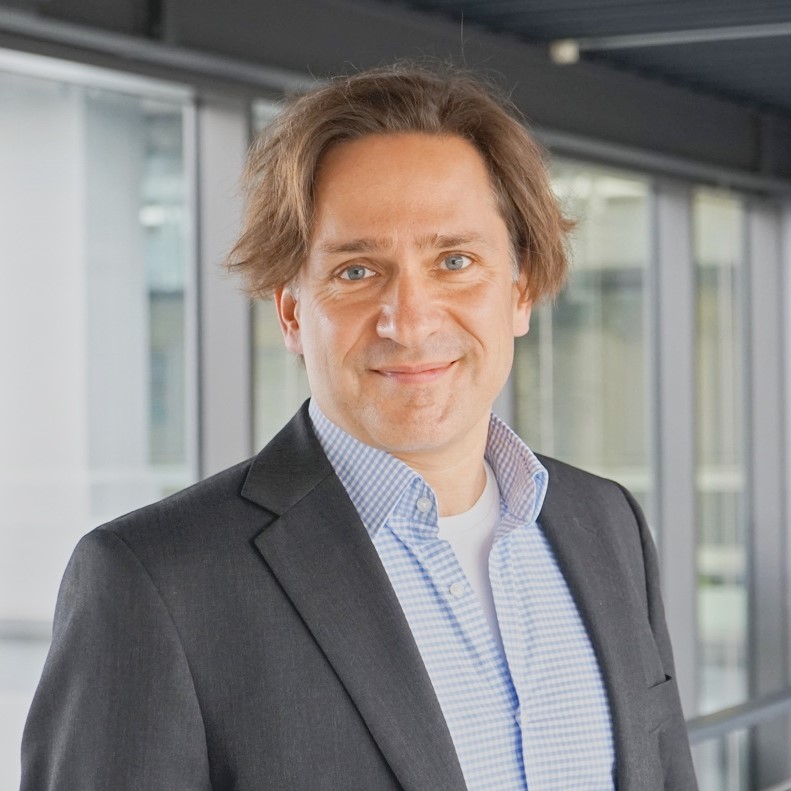
Contact
Personal website
Phone: +492343222547Email: jan[dot]a[dot]frenzel[at]rub[dot]deAbstract
Jan Frenzel is leading the processing group of the Chair for Materials Science and Engineering (RUB). He investigates the relationships between alloy compositions, processing conditions, microstructures and properties of structural and functional engineering materials. The focus is placed on shape memory alloys and nickel base superalloys. In his research he uses different types of processing techniques (e.g. Bridgman melting, advanced heat treatment systems) and state of art characterization techniques, such as high-resolution scanning electron microscopy and cross correlation based EBSD. At the Ruhr-Universität Bochum, he is in charge of the Advanced Study Group Input Data and Validation which links experimental activities to modeling activities of ICAMS. - Prof. Dr.-Ing. Alexander Kauffmann
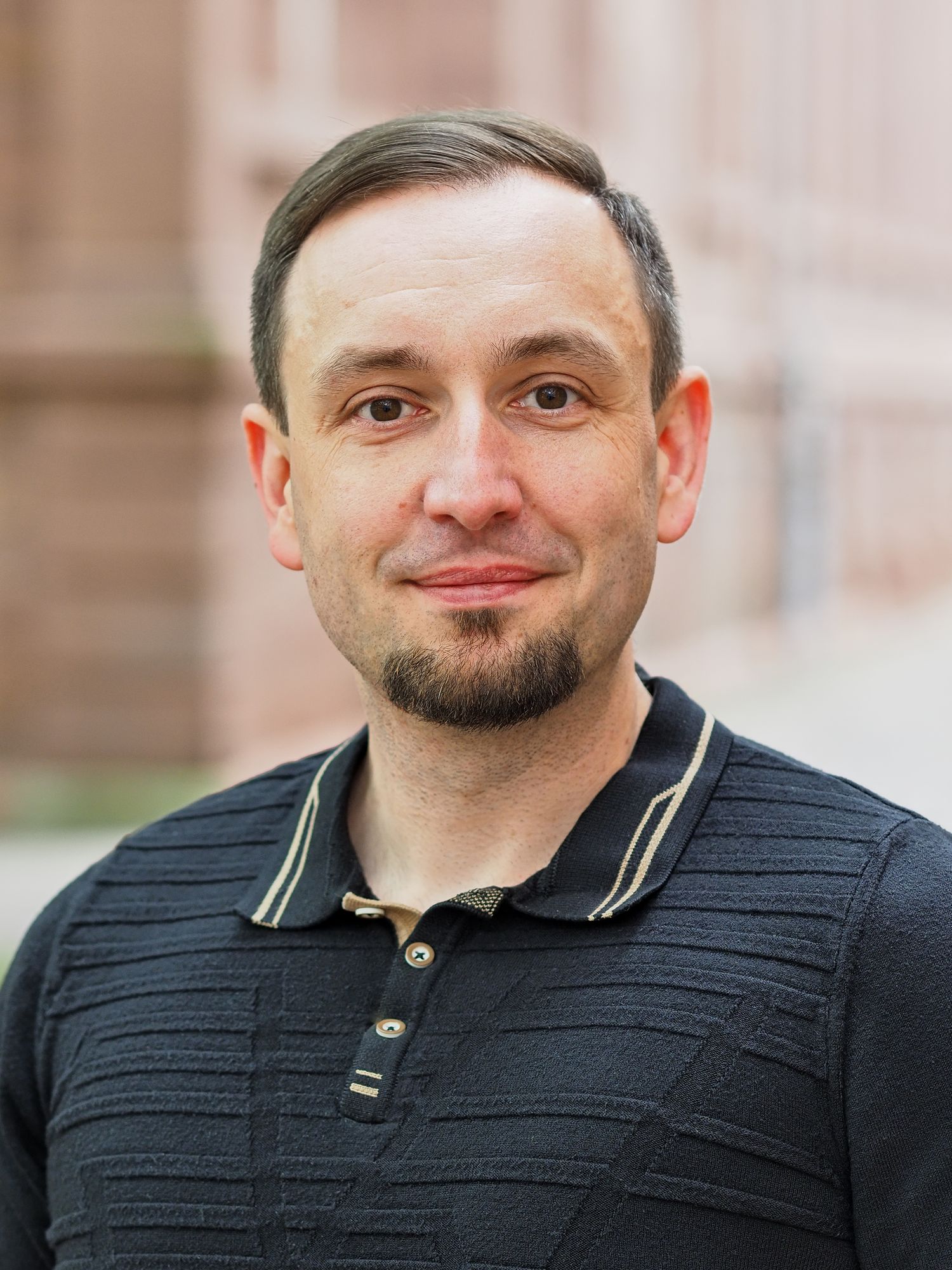
Contact
Phone: +49 234 32 18430Email: alexander[dot]kauffmann[at]rub[dot]deAbstract
Alexander Kauffmann is the head of the Chair Materials Science and Engineering at the Institute of Materials of RUB. He studied materials science and engineering and obtained his doctorate at Dresden University of Technology. As a postdoc, he was the group leader of Physical Metallurgy at the Institute for Applied Materials of Karlsruhe Institute of Technology. The chair’s research focuses on the development and investigation of novel metallic and intermetallic materials, particularly for extreme application conditions. This involves for example high temperature materials under oxidation and creep conditions or the investigation of deformation mechanisms at ultralow temperatures. Furthermore, functional materials like shape memory alloys and polymers are addressed. The research requires the application of cast metallurgical synthesis methods to obtain targeted microstructures. To reveal the origins of microstructure formation to materials’ properties, he applies scale-bridging microstructural characterization methods. - Prof. Dr.-Ing. Arne Röttger

Contact
Personal website
Phone: +49 212 231340110Email: roettger[at]uni-wuppertal[dot]deAbstract
Since 2011 I have been working as a research group leader at the Institute of Materials Technology of the Ruhr University Bochum. My research focusses on the development of new materials containing hard phases with improved mechanical, tribological and chemical properties. Material development takes into account aspects of metallurgy as well as technological constraints such as resource efficiency, cost-effectiveness and processability. For material development I use both computer-based and experimental methods. In principle, I consider the question of the relationship between the chemical composition and the stability of individual phases, the production-related structure formation processes and the associated material properties. - Prof. Dr.-Ing. Jan Sehrt

Contact
Personal website
Phone: +49 234 32 26162Email: jan[dot]sehrt[at]ruhr-uni-bochum[dot]deAbstract
Prof. Dr.-Ing. Jan T. Sehrt started his research activities in the field of additive manufacturing in 2003. He and his employees at the chair Hybrid Additive Manufacturing (HAM) – which was established at RUB in 2018 – offer an extensive expertise along the complete process chain of additive manufacturing. The chair deals with material modifications and investigations and has a high level of expertise in beam-matter interaction within the additive manufacturing process. Furthermore, the process qualification of new materials, the improvement of mechanical properties by influencing the material structure on the one hand and optimization of the surface structure on the other hand as well as hybrid part concepts and their qualification are within the R&D scope of HAM. Additionally research activities implement additive part design (e.g. optimization of topology, lightweight structures and integration of functionalities) and quality control within the additive manufacturing process as well as applied to the produced parts. Prof. Dr.-Ing. Jan T. Sehrt also implements into standardization work such as the VDI Technical Committee Additive Manufacturing (FA105), or as a German expert in other standardization committees for Additive Manufacturing such as ISO/TC 261 AM and NA 145-04-01 AA (DIN). - Prof. Dr. Sebastian Weber
Contact
Personal website
Phone: +49 (0)234 32-22410Email: sebastian-ludger[dot]weber[at]ruhr-uni-bochum[dot]deAbstract
Since April 2020, Sebastian Weber is head of the Chair for Materials Technology at RUB. He obtained his PhD at RUB in 2005 and conducted research at MPIE and HZB afterwards, followed by a full professorship at Bergische Universität Wuppertal (BUW) in 2014. At BUW he was responsible for the establishment of a new foundation chair “Novel Manufacturing Technologies and Materials”, related to pronounced transfer activities with a particular emphasis on circular economy and sustainable development. His research is focused on metallic materials, particularly iron-base alloys. A key aspect of his research are processes and materials related to powder metallurgy, including sintering, hot-isostatic pressing and additives manufacturing technologies. In these fields of research, correlations between processing, material and energy consumption, resulting microstructures and properties are addressed by him, always under consideration of technical applications. - Dr. Ridha Zerdoumi

Contact
Email: ridha[dot]zerdoumi[at]rub[dot]deAbstract
Ridha Zerdoumi is a group leader of the “High-Entropy Intermetallics for Electrocatalysis” group at the Institute of Materials at RUB. He studied Physical Chemistry and Materials Science and obtained his doctorate from Chemnitz University of Technology. The group’s research focuses on the design of high-entropy intermetallic compounds (HEIMCs), ranging from conventional binary and ternary intermetallics to multicomponent materials. These materials combine the multifunctionality of high-entropy systems with the ordered structure of intermetallic compounds to enhance electrocatalytic performance. A key aspect of the group’s work is unraveling the role of surface atomic arrangements in governing electronic and geometric effects, which are crucial for optimizing activity, selectivity, and stability in electrocatalysis. Structure-property correlations are established by integrating combinatorial sputtering, high-throughput electrochemical characterization, and computational modeling to accelerate the discovery and optimization of next-generation electrocatalysts for electrochemical energy conversion.
- Prof. Dr.-Ing. Marion Bartsch
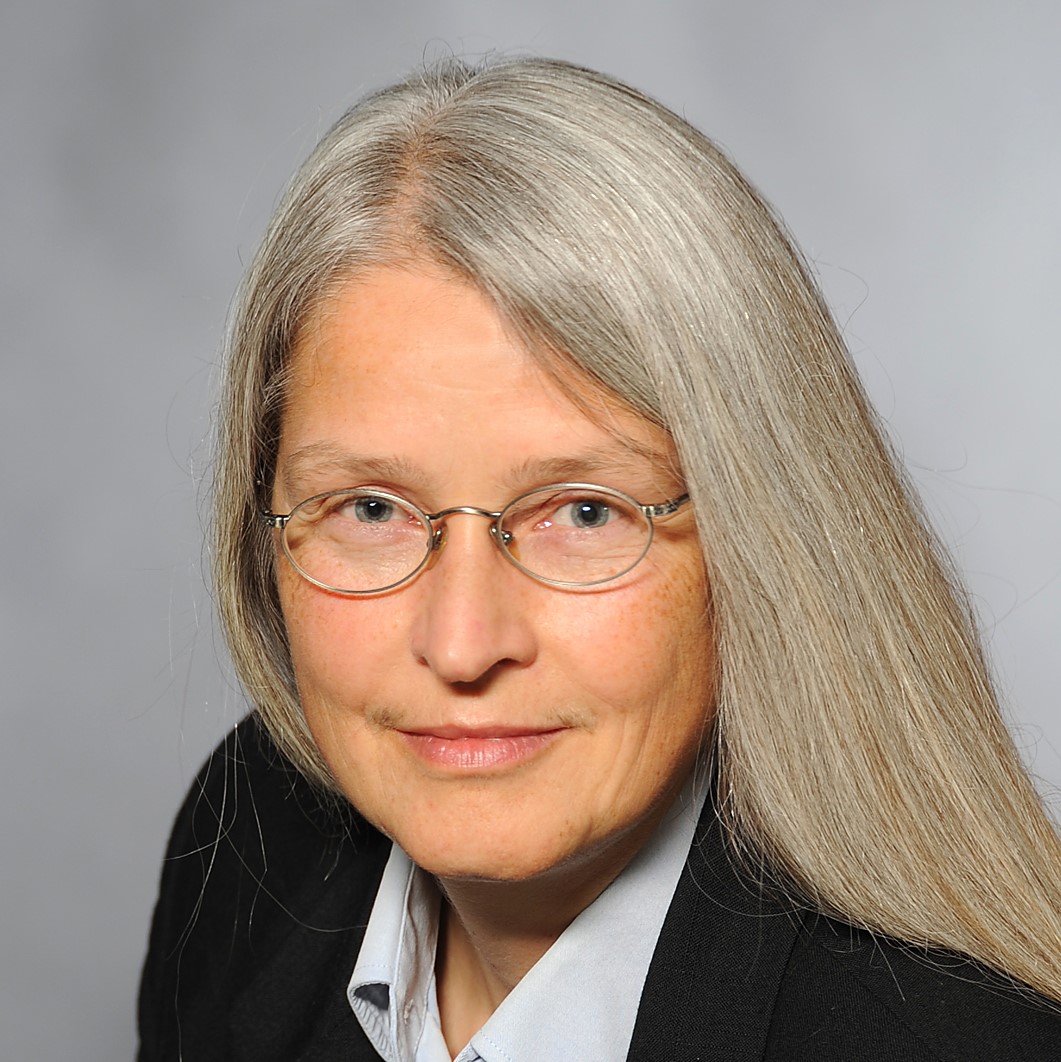
Contact
Personal website
Phone: 02203-601-2436Email: marion[dot]bartsch[at]dlr[dot]deAbstract
I am researcher at the German Aerospace Center in Cologne and head of the department 'Experimental and Numerical Methods' in the Institute of Materials Research and also Professor for 'Aerospace Materials', Faculty of Mechanical Engineering at the Ruhr- Universität Bochum. My research interests are mechanical properties and microstructure of materials and the respective characterization methods. In my team experimental research goes together with microstructure based numerical modelling. My main research subjects are high temperature behavior of metals, ceramics and coating systems with a focus on fatigue and fracture. We are collaborating with national and international academic and industrial partners. Please feel free to contact me. - Dr.-Ing. Santiago Benito
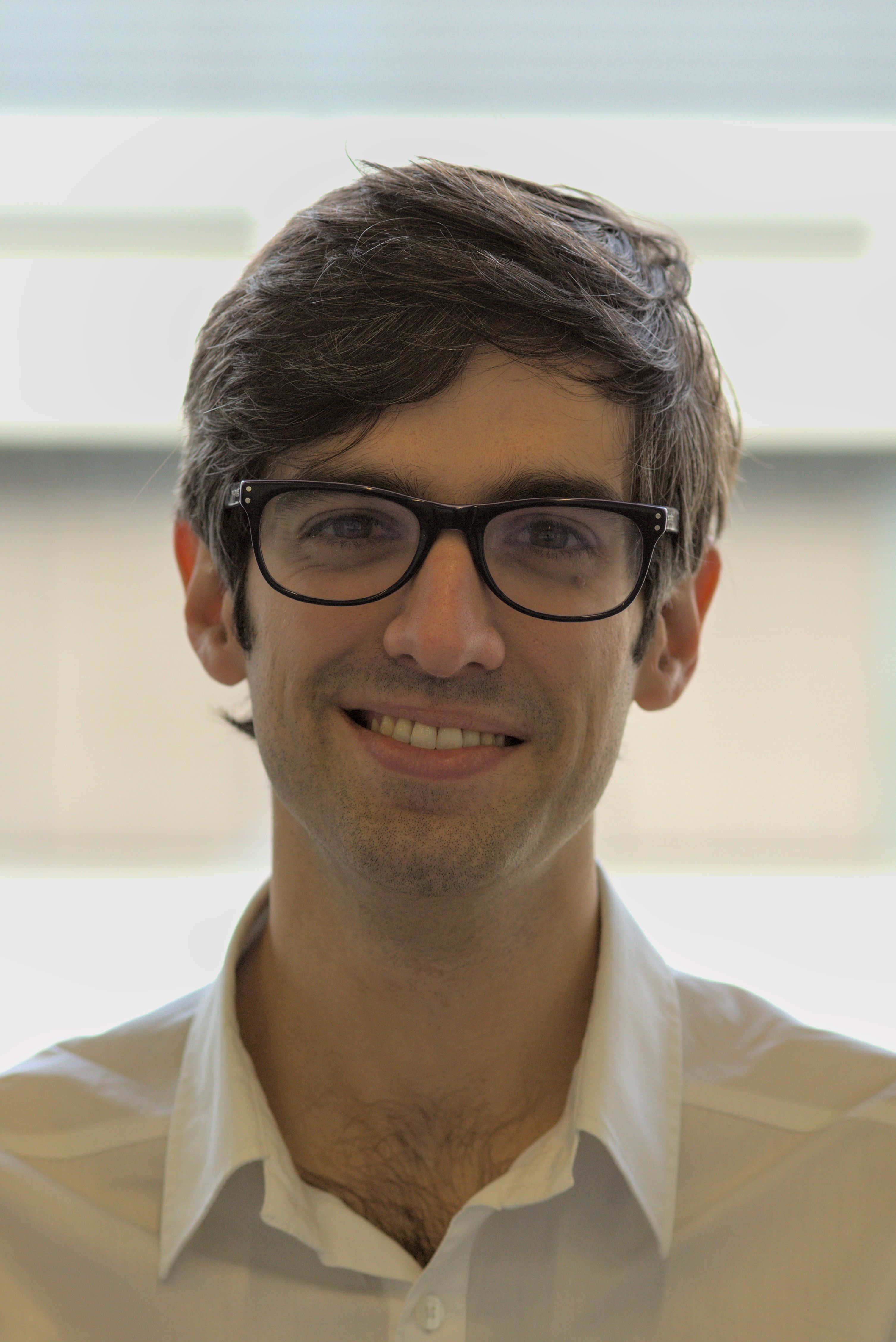
Contact
Personal website
Phone: (0) 234 32-27233Email: benito[at]wtech[dot]rub[dot]deAbstract
Santiago Benito is a postdoc researcher and group leader in Materials Characterization and Design at the Chair of Materials Technology of the RUB. Coming from a background in microstructure analysis, he applies state-of-the-art statistical and computational methods to describe and understand microstructures and thus explore and exploit correlations between processing and properties. Within his group, these activities are complemented with thermophysical and thermomechanical testing and coupled with thermodynamic and kinetic modeling. Metallic materials are the focus of the research, particularly iron-base alloys. He specializes in powder metallurgy techniques such as powder bed fusion and hot isostatic pressing. - Prof. Iurie Curoșu

Abstract
Iurie Curoșu is professor and holder of the Chair of Construction Materials at the Faculty of Civil and Environmental Engineering of the Ruhr-Universität Bochum. His professional background is civil engineering with the scientific path in the field of construction materials. His research interests relate mainly to the durability and resilience of the built infrastructure. Understanding and enhancing the load-bearing properties and durability issues based on material composition and exposure, as well as developing appropriate structural repair, strengthening and protection solutions shapes his core research areas. Various concretes and mineral-bonded composites with discrete or continuous reinforcement are investigated within context. The research aims at achieving a profound understanding of the connection between their performance and decisive features at different scales of observation. Thus, the strong emphasis on the experimental material characterization is supported by a scale-linking approach (from micro- to macro), which is achieved by tailored testing methods, destructive and non-destructive analytical investigations, and numerical simulations. Finally, besides the durability and performance aspects, the investigation of sustainable material compositions, automatized application processes and recycling or reuse potential of such composites are as well a matter of interest. - Prof. Dr. Gerhard Dehm
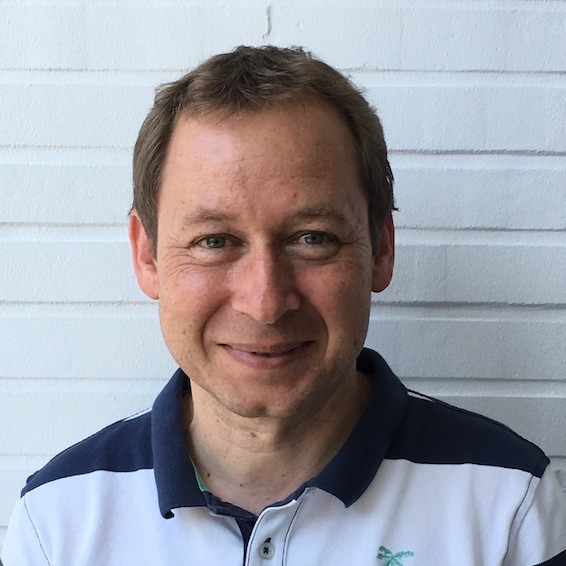
Contact
Personal website
Phone: 02116792217Email: dehm[at]mpie[dot]deAbstract
I am director at the Max-Planck-Institut für Eisenforschung GmbH in Düsseldorf and Professor at the Ruhr-Universität-Bochum. In my research team we mainly use advanced electron microscopy methods including aberration corrected scanning transmission electron microscopy, electron spectroscopy and X-ray diffraction/synchrotron radiation to study the microstructure of materials down to the atomic level. Small scale experimental testing methods are developed and applied to probe material properties with high spatial resolution and often under specific environmental conditions. Our micro-/nanomechanical experiments are combined with electron microscopy and/or diffraction to resolve the interplay of microstructure and properties and to use this knowledge for materials design. The materials portfolio stretches from thin films and coatings to alloys, steels and intermetallic phases. We have a global network of scientific partners and industrial cooperations across Europe. - Prof. Dr.-Ing. Gunther Eggeler
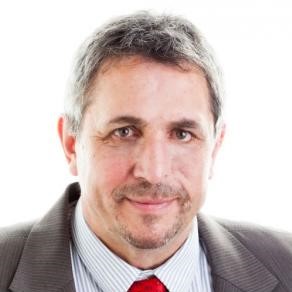
Contact
Personal website
Phone: 0234 32 23022Email: gunther[dot]eggeler[at]rub[dot]deAbstract
The Chair for Materials Science and Engineering performs research and teaching on the processing, microstructure and mechanical properties of materials. The main research areas are shape memory alloys and high temperature superalloys. The Chair for Materials Science and Engineering collaborates with partners from industry in research and development projects. Please do not hesitate to contact us if you have any questions. - Prof. Dr.-Ing. Jan Frenzel

Contact
Personal website
Phone: +492343222547Email: jan[dot]a[dot]frenzel[at]rub[dot]deAbstract
Jan Frenzel is leading the processing group of the Chair for Materials Science and Engineering (RUB). He investigates the relationships between alloy compositions, processing conditions, microstructures and properties of structural and functional engineering materials. The focus is placed on shape memory alloys and nickel base superalloys. In his research he uses different types of processing techniques (e.g. Bridgman melting, advanced heat treatment systems) and state of art characterization techniques, such as high-resolution scanning electron microscopy and cross correlation based EBSD. At the Ruhr-Universität Bochum, he is in charge of the Advanced Study Group Input Data and Validation which links experimental activities to modeling activities of ICAMS. - Prof. Dr.-Ing. Martin Hoffmann

Contact
Personal website
Phone: +49 234 32 27700Email: martin[dot]hoffmann-mst[at]rub[dot]deAbstract
Martin Hoffmann is head of the Chair for Microsystems Technology at RUB. His key research is focused on silicon-based MEMS, contributing materials such as AlN and other thin films and on 2D materials for mechanical as well as electronic application. He coordinates the BMBF-funded “Forschungslabor Mikroelektronik Bochum für 2D-Elektroniksysteme“. Research in this field includes the extension from single 2D materials into complex applications. The core technology is based on a process-integrating cluster tool with five chambers for ALD, ALE, RIE and PECVD and thus fully automated 2D material integration on substrates up to 200 mm (silicon, glass, polymers). A further research topic is the structuring of complex glasses (earth-alkali alumosilicate glasses and glass ceramics such as Zerodur) by dry etching in fluorine-based plasmas. The research is mostly linked to application-specific process research. - Prof. Dr.-Ing. Alexander Kauffmann

Contact
Phone: +49 234 32 18430Email: alexander[dot]kauffmann[at]rub[dot]deAbstract
Alexander Kauffmann is the head of the Chair Materials Science and Engineering at the Institute of Materials of RUB. He studied materials science and engineering and obtained his doctorate at Dresden University of Technology. As a postdoc, he was the group leader of Physical Metallurgy at the Institute for Applied Materials of Karlsruhe Institute of Technology. The chair’s research focuses on the development and investigation of novel metallic and intermetallic materials, particularly for extreme application conditions. This involves for example high temperature materials under oxidation and creep conditions or the investigation of deformation mechanisms at ultralow temperatures. Furthermore, functional materials like shape memory alloys and polymers are addressed. The research requires the application of cast metallurgical synthesis methods to obtain targeted microstructures. To reveal the origins of microstructure formation to materials’ properties, he applies scale-bridging microstructural characterization methods. - Prof. Dr. Andrea Kirsch

Contact
Phone: +49 234 32 18402Email: a[dot]kirsch[at]ruhr-uni-bochum[dot]deAbstract
Andrea Kirsch leads the Oxidic Functional Materials Group in RC FEMS and is a Tenure-Track Assistant Professor at the Faculty of Chemistry and Biochemistry at the Ruhr University Bochum. Positioned at the intersection of chemistry, physics, and materials science, her group aims to develop advanced materials for future energy applications. One of the foci is the development of innovative strategies for material design by unraveling how atomic, electronic, and microstructural features evolve during synthesis or under external stimuli. To achieve this, we use cutting-edge characterization techniques at large-scale facilities such as synchrotrons, allowing us to study these dynamic processes in real time. One material class in focus are high-entropy oxides, which represent compositionally complex solid solutions. They break with traditional design concepts by incorporating multiple elements in nearly equal proportions within a single crystalline structure. This novel approach offers remarkable flexibility for tailoring material properties, opening new avenues for functionality and performance. By establishing synthesis-structure-performance relationships and guiding design principles, our research aims at developing the next generation of materials that could drive advances in catalysis, energy storage, and sustainable technologies. - Dr. Aleksander Kostka
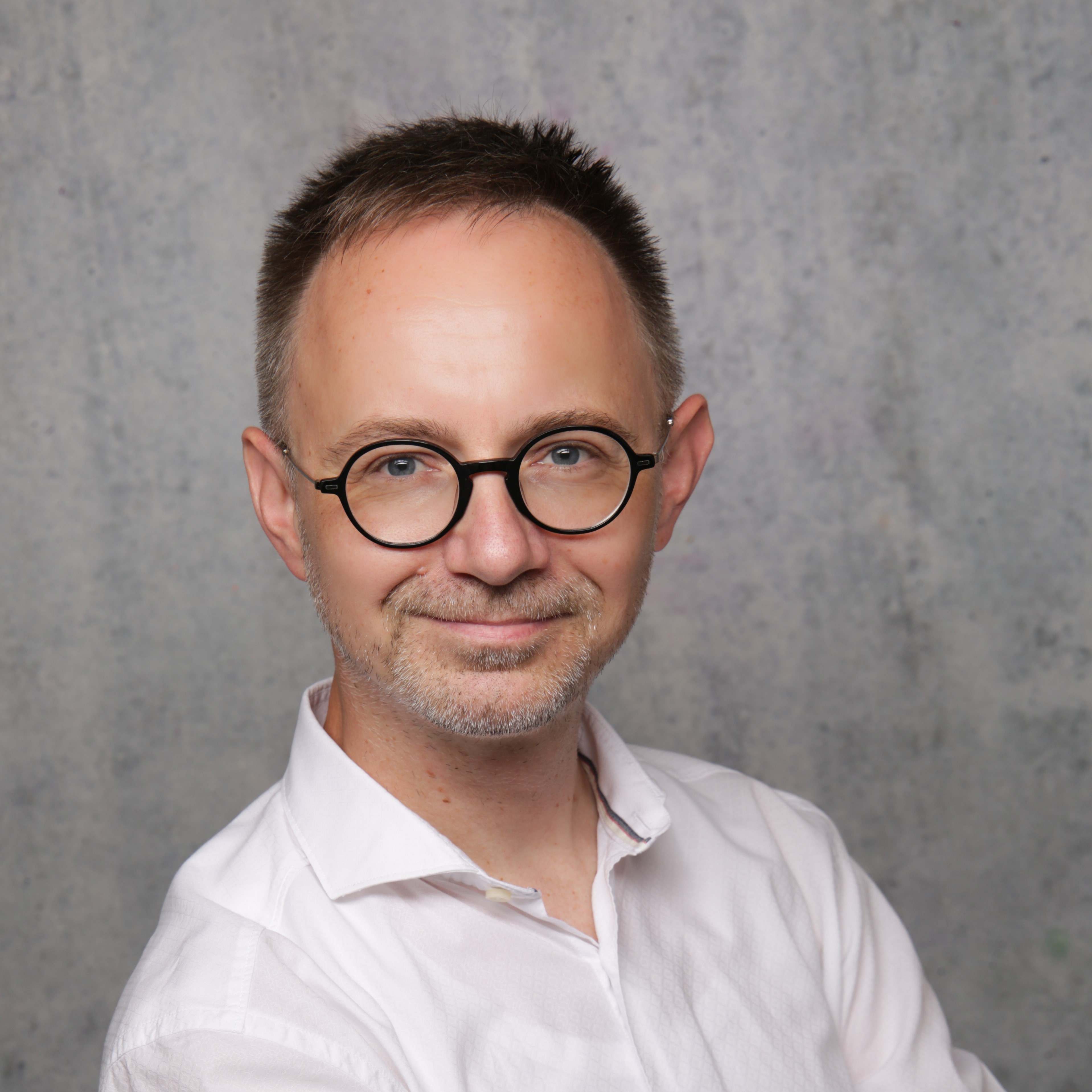
Contact
Personal website
Phone: +49 234 32-28982Email: aleksander[dot]kostka[at]ruhr-uni-bochum[dot]deAbstract
My research activity covers different fields of materials science and engineering, leading to the understanding of microstructure formation and evolution during processing, creep and welding. I am interested in: - Relations between processing (joining, thermo-mechanical treatment) of engineering metallic materials, their microstructure, and mechanical properties - Bonding mechanisms, interface formation and interfacial reactions, phase transformation, precipitation, crystal plasticity, defects interaction; I have experience in a wide range of sample preparation and characterization techniques of electron microscopy; e.g. SEM, TEM, EDX, EBSD, ECCI, TKD, CBED, PED, 3-D TEM, Cut&Slice, In-situ TEM. - Jun.-Prof. Dr. Guillaume Laplanche
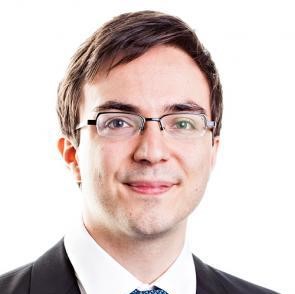
Contact
Personal website
Phone: +49 234 32-25912Email: guillaume[dot]laplanche[at]rub[dot]deAbstract
I’ve completed my PhD in Materials Science at the P’ Institute (Insitut Polytechnique de Poitiers, France) in 2011. After a brief time as a Humboldt fellow at the Ruhr-University Bochum during which I've worked on small-scale mechanical behavior of shape memory alloys, I was appointed in 2016 as a Junior-professor. My main research activities cover investigations on the relationship between processing parameters, microstructures and mechanical properties of metallic and intermetallic materials. Currently the main focus of my research group “Microstructure of materials” is on High-entropy alloys. In particular I study the effect of the chemical composition on mechanical properties as well as phase stability and precipitation kinetics. - Dr. Yujiao Li
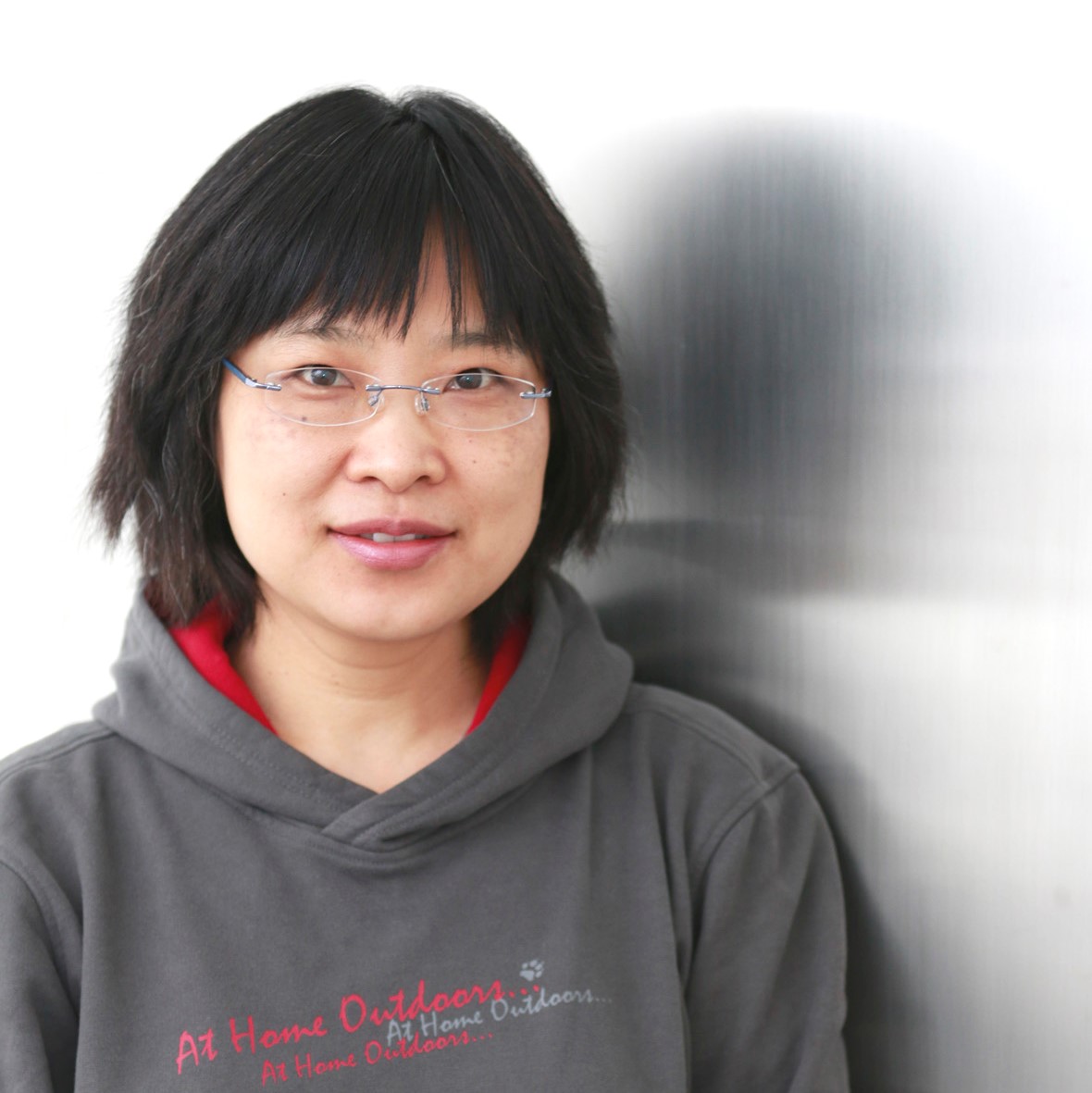
Contact
Personal website
Email: yujiao[dot]li[at]rub[dot]deAbstract
I am a scientific staff at the ZGH (Zentrum für Grenzflächendominierte Höchstleistungswerkstoffe) at Ruhr-Universität Bochum, where I am in charge of several core facilities including Local Electrode Atom Probe, Dual-Beam (FIB/SEM) microscope and 3D X-Ray Tomography. My research areas include mechanical behavior of nanostructured metals and alloys, phase transformation, interface segregation and alloy design. - Prof. Dr. Tong Li
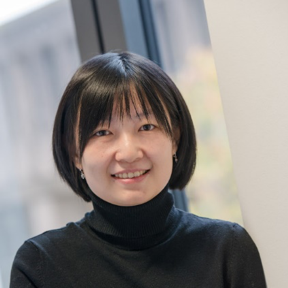
Contact
Personal website
Phone: +492343226099Email: tong[dot]li[at]ruhr-uni-bochum[dot]deAbstract
I am a junior professor for “characterisation of high-performance materials at the atomic scale” in the Institute for Materials, and a research group leader in ZGH at Ruhr University Bochum. I obtained my D.Phil degree at University of Oxford in 2011, followed by a Post-Doctoral position at the University of Sydney, and a Humboldt fellowship at Max Planck Institute for Iron Research (MPIE). I lead a research group that focuses on the application of advanced materials characterisation techniques (including atom probe tomography and electron microscopy) for the development of new functional and structural materials. I am currently investigating a wide range of materials such as high-strength titanium alloys for aerospace applications, and catalyst materials for water splitting. - Prof. Dr. Miguel Marques

Contact
Personal website
Phone: +49 234 32 26370Email: miguel[dot]marques[at]rub[dot]deAbstract
Our group works in the development and application of state-of-the-art ab-initio methods to systems of both fundamental and technological interest. - Prof. Dr. Bastian Mei

Contact
Personal website
Email: bastian[dot]mei[at]rub[dot]deAbstract
We combine our knowledge in physical chemistry and engineering to study complex multiphase (solid/gas/liquid) catalytic reaction systems stimulated by (solar) light or electrical energy. Moreover, we integrate thermal energy or other stimuli to synergistically improve catalytic performances. Reactions of interest include water oxidation, production of oxidizing chemicals, hydrogen generation, selective alcohol oxidation, oxidative decarboxylation of carboxylic acids and purification of (industrial) waste streams using metal oxides and carbon based compounds. - Dr.-Ing. Janine Pfetzing-Micklich
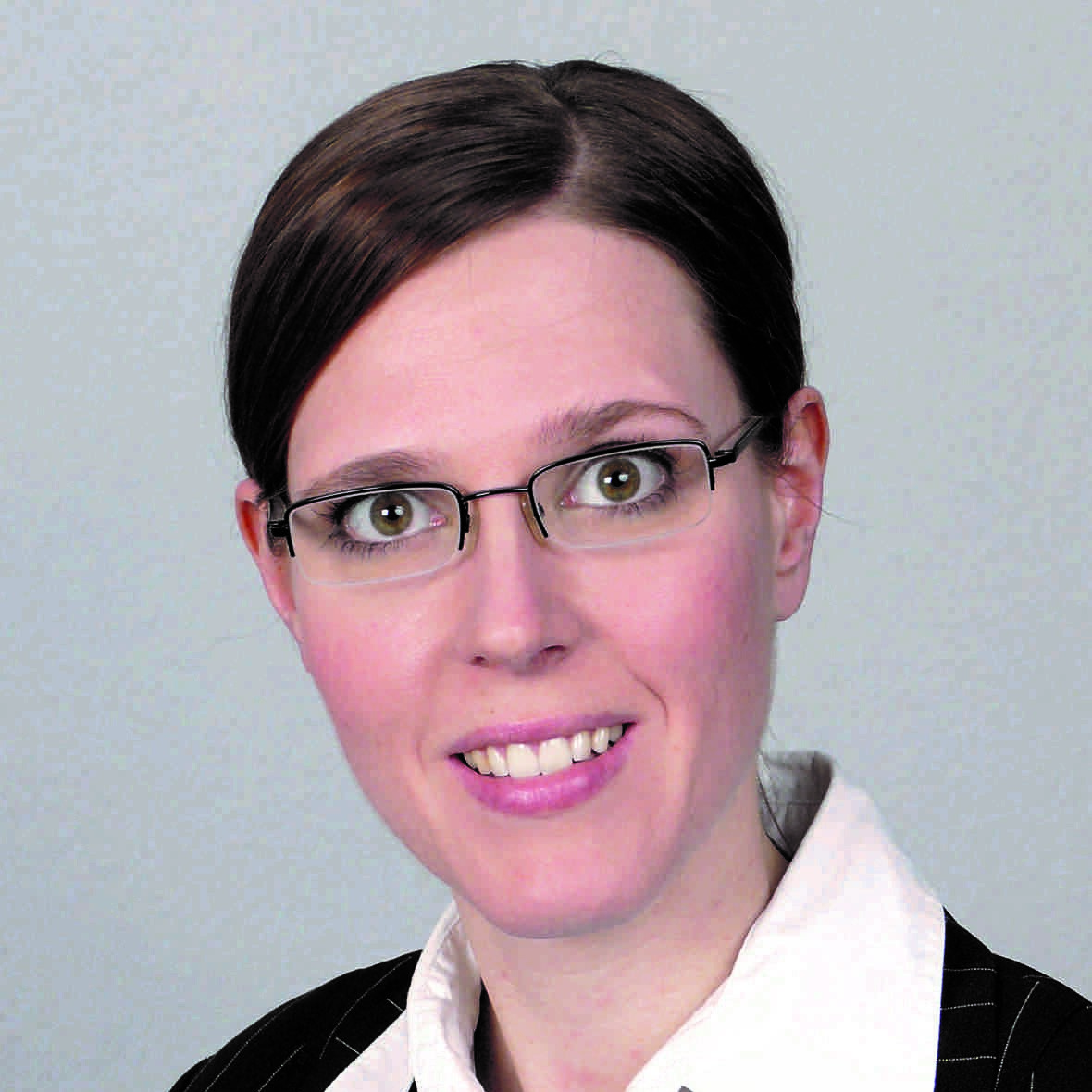
Contact
Personal website
Phone: +49 234 32 25934Email: janine[dot]pfetzing[at]rub[dot]deAbstract
Janine Pfetzing is the manager of the new research building Interface dominated high performance materials (Zentrum für Grenzflächendominierte Höchstleistungswerkstoffe, ZGH) at Ruhr-Universität Bochum (zgh.rub.de). The research focus of the ZGH is on the development of new high performance materials. Therefore experiments and simulations are performed from atomic scale over mesoscopic to component dimensions to gain a comprehensive understanding of materials interfaces and their properties. Janine Pfetzings own research interests are on local mechanical properties and deformation mechanisms of materials. Therefore she uses different nanoindentation systems (ex-situ and in-situ) to perform micromechanical experiments. - Prof. Dr. Dierk Raabe
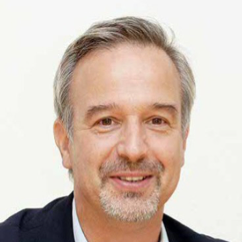
Contact
Personal website
Email: d[dot]raabe[at]mpie[dot]deAbstract
I studied music, metallurgy and metal physics. After my doctorate and habilitation at RWTH Aachen I worked at Carnegie Mellon University and joined the Max Planck Society as a director in 1999. My current interests lie in four main fields: 1) Design of advanced metallic alloys; 2) Structure-property relations for materials with complex microstructures and compositions; 3) Correlative atom probe tomography; 4) Computational Materials Science. - Prof. Dr.-Ing. Ilona Rolfes

Contact
Personal website
Phone: +49 234 32 27383Email: ilona[dot]rolfes[at]rub[dot]deAbstract
The research topics at the Institute of Microwave Systems are ranging from the investigation of high precision microwave measurement systems for the characterization of materials and components as well as radar-based imaging to compact solutions for microwave sensors. For this purpose, extensive numeric simulations and measurements are done. The investigated concepts are verified in prototype systems. Since 2017, we are part of the collaborative research center SFB/TRR 196 MARIE "Mobile Material characterization and Localization by Electromagnetic Sensing". Please do not hesitate to contact us if you have any questions. - Prof. Dr.-Ing. Arne Röttger

Contact
Personal website
Phone: +49 212 231340110Email: roettger[at]uni-wuppertal[dot]deAbstract
Since 2011 I have been working as a research group leader at the Institute of Materials Technology of the Ruhr University Bochum. My research focusses on the development of new materials containing hard phases with improved mechanical, tribological and chemical properties. Material development takes into account aspects of metallurgy as well as technological constraints such as resource efficiency, cost-effectiveness and processability. For material development I use both computer-based and experimental methods. In principle, I consider the question of the relationship between the chemical composition and the stability of individual phases, the production-related structure formation processes and the associated material properties. - Prof. Dr. Jürgen Schreuer

Contact
Personal website
Phone: +49 234 3224381Email: schreuer[at]rub[dot]deAbstract
Jürgen Schreuer is head of the Crystallography Group at the Institute of Geology, Mineralogy and Geophysics. He obtained his Ph.D. at the University of Cologne. After 11 years at the ETH Zürich and the University of Frankfurt he came to Bochum in 2006. His research focuses to the exploration of structure/property relationships in crystalline materials. In particular, elasticity is used as a highly sensitive probe, since it reflects the anisotropy and stability of a crystal’s bonding system macroscopically like no other property. For this purpose, the innovative method of resonant ultrasound spectroscopy is used and further developed. Structural characterization is performed using a wide range of spectroscopic methods and diffraction techniques, complemented by thermoanalytical methods. - Dr. Christoph Somsen
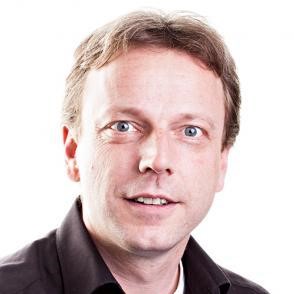
Contact
Personal website
Phone: +49 234 32 26041Email: christoph[dot]somsen[at]rub[dot]deAbstract
Christoph Somsen is in charge of the transmission electron microscopy and X-ray diffraction activities at the Chair for Materials Science and Engineering. He runs a research group, which focuses on elementary deformation and transformation processes in structural and functional engineering materials. - Dr.-Ing. Pascal Thome
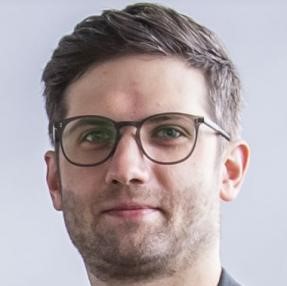
Contact
Personal website
Phone: +49 (0)234 32-25902Email: pascal[dot]thome[at]rub[dot]deAbstract
Pascal Thome develops new software algorithms to characterize specific microstructural features by electron backscatter electron diffraction (EBSD) in the scanning electron microscope (SEM). He investigates fundamental crystallographic principles and reveals special morphological features after martensitic phase transformations in iron based alloys. He moreover developed a high resolution EBSD method, which allows to precisely describe crystal mosaicity in single crystal Ni-base superalloys. This part of the work is embedded into the collaborative research center SFB/TR 103. The new method is based on a cross-correlation procedure and provides an improved high angular resolution. In parallel and as another feature of his new method, Pascal Thome applies new ways of visualizing different types of orientation differences, which allow an intuitive appreciation of crystallographic microstructural features. He also picked up research concerning the automatic charecterization of micrographs by applying machine learning techniques and artificial intelligence. - Prof. Dr.-Ing. Heinz Voggenreiter

Contact
Personal website
Phone: +49 (0)711 68 62 444Email: heinz[dot]voggenreiter[at]dlr[dot]deAbstract
Professor Heinz Voggenreiter joined the German Aerospace Center (DLR) in 2005. He heads the Institute of Materials Research in Cologne and the Institute of Structures and Design in Stuttgart and Augsburg. The research portfolio spreads across the fields of metallic, ceramic and hybrid structures and materials, aerogels and aerogel-composites, thermoelectric systems and high-temperature and functional coatings. The development of numerical methods to simulate the behavior of materials and components completes these competencies. Beforehand, Voggenreiter worked for Airbus Group, formerly EADS, and Daimler AG. As founding member and vice chairman of the youth research center AEROSPACE LAB in Herrenberg, he actively promotes young pupils and students. Since 2005 Voggenreiter is a Professor at the University of Stuttgart for Lightweight Design in Aeronautics. In 2018 he became honorary member at the School of Engineering at the University of British Columbia in Kelowna (Canada). - Prof. Dr. Sebastian Weber
Contact
Personal website
Phone: +49 (0)234 32-22410Email: sebastian-ludger[dot]weber[at]ruhr-uni-bochum[dot]deAbstract
Since April 2020, Sebastian Weber is head of the Chair for Materials Technology at RUB. He obtained his PhD at RUB in 2005 and conducted research at MPIE and HZB afterwards, followed by a full professorship at Bergische Universität Wuppertal (BUW) in 2014. At BUW he was responsible for the establishment of a new foundation chair “Novel Manufacturing Technologies and Materials”, related to pronounced transfer activities with a particular emphasis on circular economy and sustainable development. His research is focused on metallic materials, particularly iron-base alloys. A key aspect of his research are processes and materials related to powder metallurgy, including sintering, hot-isostatic pressing and additives manufacturing technologies. In these fields of research, correlations between processing, material and energy consumption, resulting microstructures and properties are addressed by him, always under consideration of technical applications.
- Prof. Dr. Jörg Behler
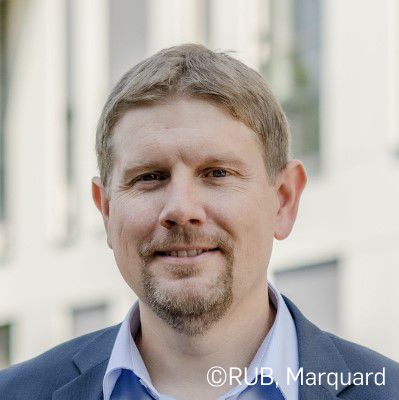
Contact
Personal website
Phone: +49 234 32 19780Email: joerg[dot]behler[at]rub[dot]deAbstract
Our main research topics are chemical processes at interfaces, topics in materials science and properties of aqueous solutions. We employ a variety of simulation techniques like molecular dynamics, metadynamics and Monte Carlo to study these processes. The reliability of the results obtained in atomistic simulations strongly depends on the accuracy of the underlying potentials describing the atomic interactions. Due to the large system size required to address many interesting questions, density-functional theory is the most important electronic structure methods in our studies. Still, long simulations of large systems can be very time-consuming or even prohibitively demanding, if they are based directly on density-functional theory. A central topic of our group is therefore the development of methods to represent potential-energy surfaces using machine learning methods, in particular artificial Neural Networks. - Dr.-Ing. Santiago Benito

Contact
Personal website
Phone: (0) 234 32-27233Email: benito[at]wtech[dot]rub[dot]deAbstract
Santiago Benito is a postdoc researcher and group leader in Materials Characterization and Design at the Chair of Materials Technology of the RUB. Coming from a background in microstructure analysis, he applies state-of-the-art statistical and computational methods to describe and understand microstructures and thus explore and exploit correlations between processing and properties. Within his group, these activities are complemented with thermophysical and thermomechanical testing and coupled with thermodynamic and kinetic modeling. Metallic materials are the focus of the research, particularly iron-base alloys. He specializes in powder metallurgy techniques such as powder bed fusion and hot isostatic pressing. - Prof. Dr. Silvana Botti

Contact
Personal website
Phone: +49 234 32 28773Email: silvana[dot]botti[at]rub[dot]deAbstract
I am an expert in the first-principles simulation of electronic excitations and optical properties of complex materials. My team works in close collaboration with experimental groups on groundbreaking topics in condensed matter physics and optics, but we also engage in the development of theories, methods and scientific software. We use computational material modelling to search for improved electronic and quantum materials and to understand how they can be combined to create heterostructures, alloys, doped crystals or simply new compounds. My studies contribute to the exciting research field of computational materials design, an emerging multidisciplinary topic that brings together innovative work from condensed matter physics, materials chemistry and computer science. My main research efforts are currently focused on the design of functional interfaces and high-throughput engineering of dopants and alloys for energy generation, storage and saving. - Dr.-Ing. Tobias Brink

Contact
Personal website
Email: t[dot]brink[at]mpie[dot]deAbstract
Tobias Brink is the group leader for Atomistic Modelling of Material Interfaces at the Max Planck Institute for Sustainable Materials (Düsseldorf). He obtained his PhD from the Technische Universität Darmstadt working on molecular dynamics simulations of heterogeneous metallic glasses. After a postdoc at the École polytechnique fédérale de Lausanne spent on atomistic and continuum simulations of surface roughness for tribology, he is currently most interested in structure–property relations at grain boundaries. These interfaces have their own thermodynamics of structural transitions and segregation, where atomistic computer simulations can provide unique insights, especially when combined with experimental atomic-resolution imaging. - Dr. Victor Dudarev

Contact
Personal website
Phone: +49 (0) 234-32-19079Email: victor[dot]dudarev[at]ruhr-uni-bochum[dot]deAbstract
Victor Dudarev is a specialist in the development of materials science databases and the application of information technology in materials science, including the use of machine learning techniques to predict the properties of substances. He is currently working as a Postdoc at the Materials Discovery and Interfaces department since 2022, where his main responsibility is the development of an extensible Research Data Management System to support materials science research in geographically distributed SFB projects (CRC 247, CRC 1625). He is the author of more than a hundred scientific publications and holds 4 software patents. - Dr. Thomas Hammerschmidt
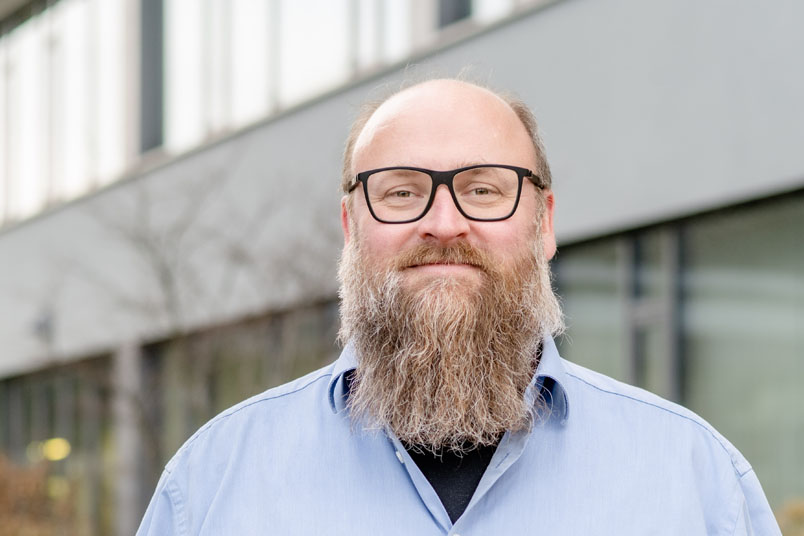
Contact
Personal website
Email: thomas[dot]hammerschmidt[at]rub[dot]deAbstract
Thomas Hammerschmidt is leader of the research group Atomistic Simulation of Structural and Phase Stability in the Department Atomistic Modelling and Simulation of Prof. Dr. Ralf Drautz at the Interdisciplinary Centre for Advanced Materials Simulation (ICAMS). Thomas develops and applies data-driven and atomistic methods in order to join correlative classical data science with causative physical models as the key to predictive computational materials science. To this end he combines modern machine learning techniques with a hierarchy of atomistic simulation methods that range from density-functional theory to coarse-grained representations of the interatomic interaction in steels, superalloys and batteries. Thomas obtained his Ph.D. at the Fritz-Haber-Institute of the Max-Planck-Society and the Technical University Berlin. Before coming to Bochum Thomas worked at the University of Oxford as postdoctoral research assistant. - Prof. Dr. Alexander Hartmaier
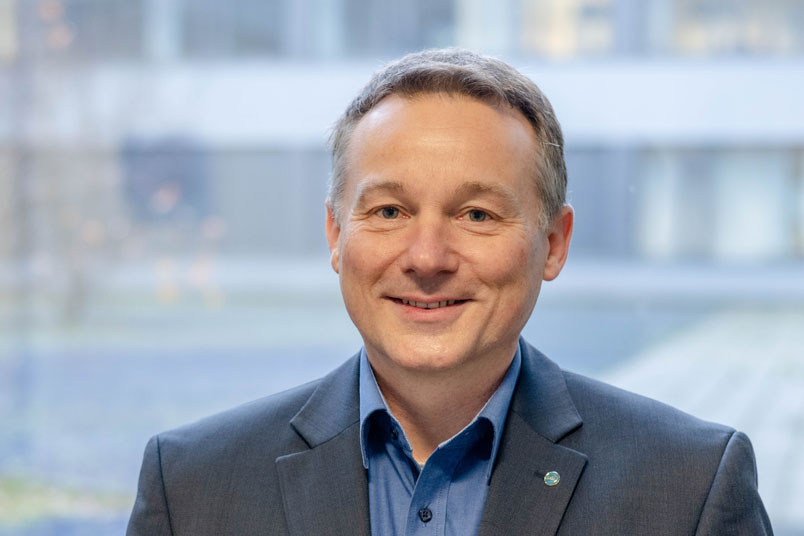
Contact
Personal website
Phone: +49 234 32-29314Email: alexander[dot]hartmaier[at]rub[dot]deAbstract
Alexander Hartmaier is head of the chair for Mechanics of Materials at RUB and Director of the department Micromechanical and Macroscopic Modelling at ICAMS. Since 2016 he is also guest professor at the Harbin Institute of Technology/China, initially as Jang Chiang Scholar. Before that, he has been Professor of Materials Science at Friedrich-Alexander-Universität Erlangen-Nürnberg. He obtained his PhD, which has been awarded the Otto-Hahn-Medal of the Max Planck Society, at the Max Planck Institute for Metals Research in Stuttgart/Germany in 2000. Besides his academic activities, Dr. Hartmaier served the Deutsche Gesellschaft für Materialkunde (DGM) as chairman in the term 2017/18, as board member from 2013 to 2018, and as speaker of the program for young scientists from 2011 to 2014. His main research focus lies on scalebridging materials modeling with the aim to reveal the fundamental mechanisms of plastic deformation and failure of materials. - Dr. Yury Lysogorskiy
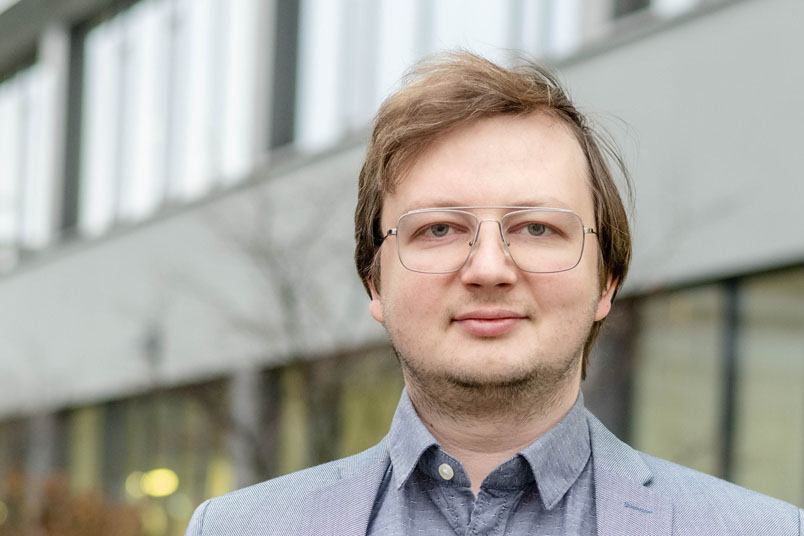
Contact
Personal website
Phone: +49 (0) 234 322 9300Email: yury[dot]lysogorskiy[at]rub[dot]deAbstract
Yury Lysogorskiy leads the “Data-driven methods for atomistic simulations” group in the Department for Atomistic Modelling and Simulation at the Interdisciplinary Centre for Advanced Materials Simulation (ICAMS). He works on application of data-driven methods in materials science with a particular focus on the atomic scale, which also includes the development of the computational methods and tools for the interatomic potentials development and validation. Another point of his interest is the application of advanced machine learning methods, such as deep generative models, to the data-driven materials design. Yury obtained his master degree at ISMANS, Le Mans, France and Ph.D. at the Kazan Federal University, Russia. - Prof. Dr. Markus Stricker
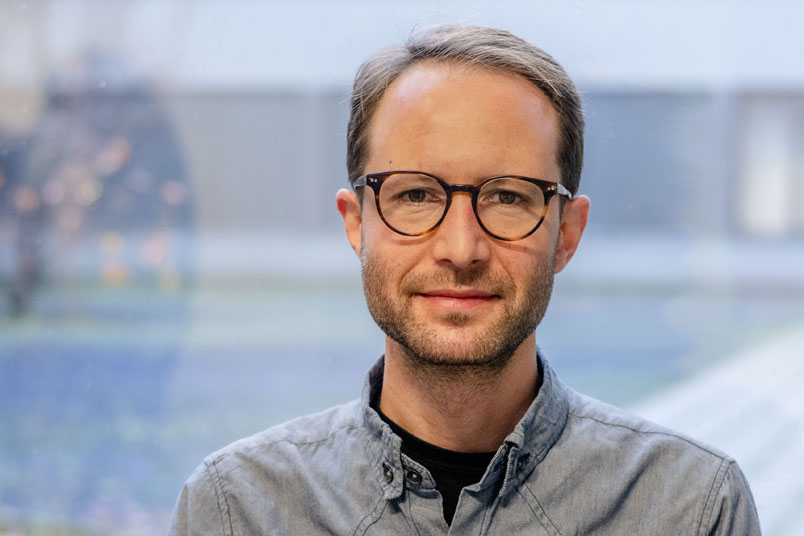
Contact
Personal website
Phone: +49 234 32 29377Email: markus[dot]stricker[at]ruhr-uni-bochum[dot]deAbstract
Markus Stricker is the head of the group Materials Informatics and Data Science at the Interdisciplinary Centre for Advanced Materials Simulation (ICAMS). Markus obtained his Ph.D. at the Institute for Applied Materials at Karlsruhe Institute of Technology. Before his appointment in Bochum Markus worked as a Postdoc at the École Polytechnique Fédérale de Lausanne, Switzerland. Markus develops and applies algorithms and methods from data sciences and machine learning to materials science problems. His background is in Computational Materials Science. Current applications are data fusion from simulation and experiment to improve interpretability, the development of interatomic potentials based on neural networks for alloys, and data mining in large defect simulations to improve the understanding of their collective behavior in order to inform coarse-grained models. - Dr.-Ing. Pascal Thome

Contact
Personal website
Phone: +49 (0)234 32-25902Email: pascal[dot]thome[at]rub[dot]deAbstract
Pascal Thome develops new software algorithms to characterize specific microstructural features by electron backscatter electron diffraction (EBSD) in the scanning electron microscope (SEM). He investigates fundamental crystallographic principles and reveals special morphological features after martensitic phase transformations in iron based alloys. He moreover developed a high resolution EBSD method, which allows to precisely describe crystal mosaicity in single crystal Ni-base superalloys. This part of the work is embedded into the collaborative research center SFB/TR 103. The new method is based on a cross-correlation procedure and provides an improved high angular resolution. In parallel and as another feature of his new method, Pascal Thome applies new ways of visualizing different types of orientation differences, which allow an intuitive appreciation of crystallographic microstructural features. He also picked up research concerning the automatic charecterization of micrographs by applying machine learning techniques and artificial intelligence. - Prof. Dr. Sebastian Weber
Contact
Personal website
Phone: +49 (0)234 32-22410Email: sebastian-ludger[dot]weber[at]ruhr-uni-bochum[dot]deAbstract
Since April 2020, Sebastian Weber is head of the Chair for Materials Technology at RUB. He obtained his PhD at RUB in 2005 and conducted research at MPIE and HZB afterwards, followed by a full professorship at Bergische Universität Wuppertal (BUW) in 2014. At BUW he was responsible for the establishment of a new foundation chair “Novel Manufacturing Technologies and Materials”, related to pronounced transfer activities with a particular emphasis on circular economy and sustainable development. His research is focused on metallic materials, particularly iron-base alloys. A key aspect of his research are processes and materials related to powder metallurgy, including sintering, hot-isostatic pressing and additives manufacturing technologies. In these fields of research, correlations between processing, material and energy consumption, resulting microstructures and properties are addressed by him, always under consideration of technical applications.
- Prof. Dr.-Ing. Daniel Balzani
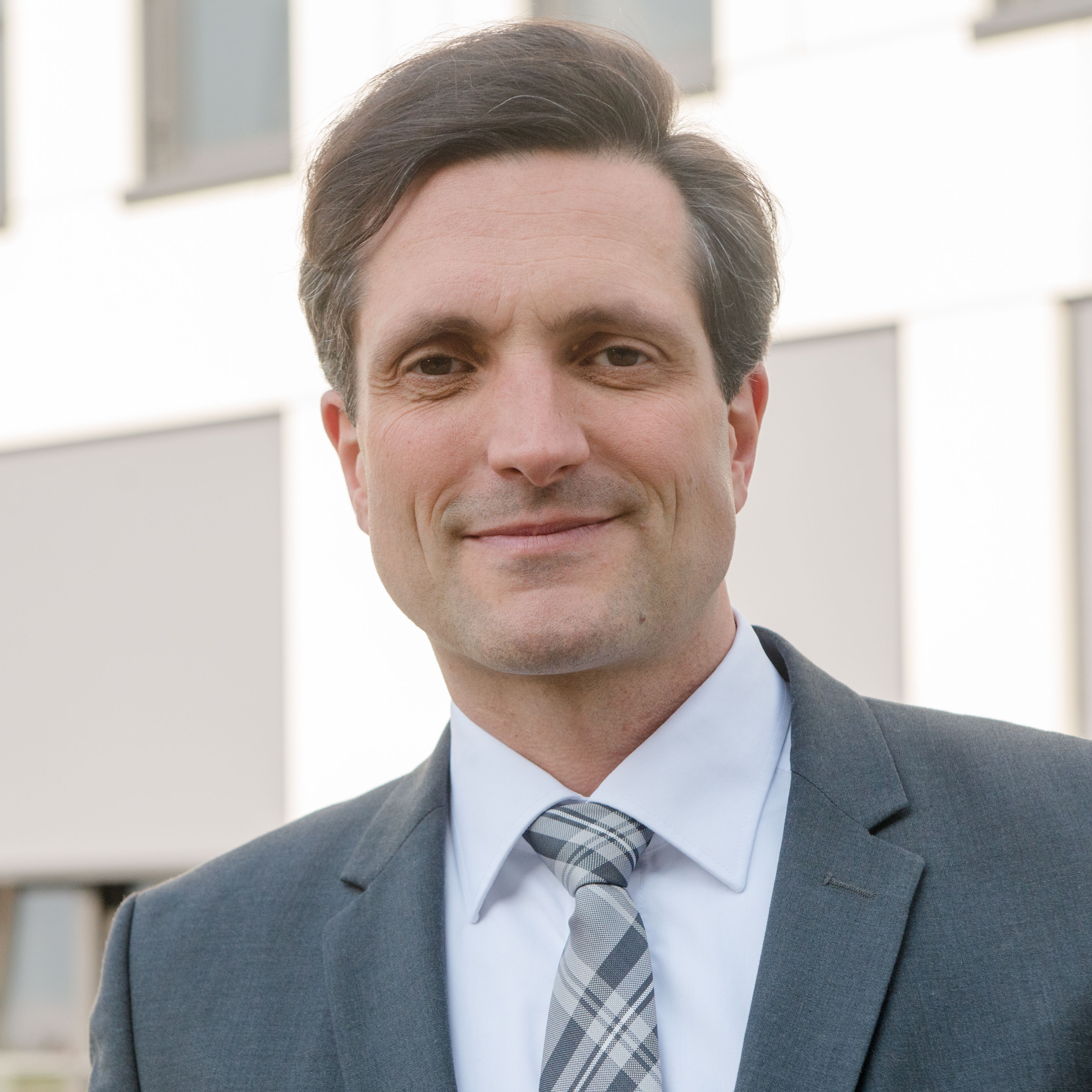
Contact
Personal website
Phone: +49 234 32 23080Email: daniel[dot]balzani[at]rub[dot]deAbstract
In my group we develop methods for the continuum mechanical modeling and simulation of complex materials. Focus is on the development of scale-coupling numerical methods as well as new material models which enable the simulation of materials such as multiphase steels, textile membranes, soft biological tissues, fiber-concrete composites, or hardmetal composites, also by incorporating uncertainties at different scales. Increasingly, we are also interested in the experimental characterization of nonlinear material properties as well as the unique identification of material parameters. Based thereon, we develop for instance new diagnostic tools for medical applications as well as methods for the measurement of microscopic material properties. - Prof. Dr.-Ing. Marion Bartsch

Contact
Personal website
Phone: 02203-601-2436Email: marion[dot]bartsch[at]dlr[dot]deAbstract
I am researcher at the German Aerospace Center in Cologne and head of the department 'Experimental and Numerical Methods' in the Institute of Materials Research and also Professor for 'Aerospace Materials', Faculty of Mechanical Engineering at the Ruhr- Universität Bochum. My research interests are mechanical properties and microstructure of materials and the respective characterization methods. In my team experimental research goes together with microstructure based numerical modelling. My main research subjects are high temperature behavior of metals, ceramics and coating systems with a focus on fatigue and fracture. We are collaborating with national and international academic and industrial partners. Please feel free to contact me. - Prof. Dr. Jörg Behler

Contact
Personal website
Phone: +49 234 32 19780Email: joerg[dot]behler[at]rub[dot]deAbstract
Our main research topics are chemical processes at interfaces, topics in materials science and properties of aqueous solutions. We employ a variety of simulation techniques like molecular dynamics, metadynamics and Monte Carlo to study these processes. The reliability of the results obtained in atomistic simulations strongly depends on the accuracy of the underlying potentials describing the atomic interactions. Due to the large system size required to address many interesting questions, density-functional theory is the most important electronic structure methods in our studies. Still, long simulations of large systems can be very time-consuming or even prohibitively demanding, if they are based directly on density-functional theory. A central topic of our group is therefore the development of methods to represent potential-energy surfaces using machine learning methods, in particular artificial Neural Networks. - Dr.-Ing. Tobias Brink

Contact
Personal website
Email: t[dot]brink[at]mpie[dot]deAbstract
Tobias Brink is the group leader for Atomistic Modelling of Material Interfaces at the Max Planck Institute for Sustainable Materials (Düsseldorf). He obtained his PhD from the Technische Universität Darmstadt working on molecular dynamics simulations of heterogeneous metallic glasses. After a postdoc at the École polytechnique fédérale de Lausanne spent on atomistic and continuum simulations of surface roughness for tribology, he is currently most interested in structure–property relations at grain boundaries. These interfaces have their own thermodynamics of structural transitions and segregation, where atomistic computer simulations can provide unique insights, especially when combined with experimental atomic-resolution imaging. - Prof. Dr. Holger Dette
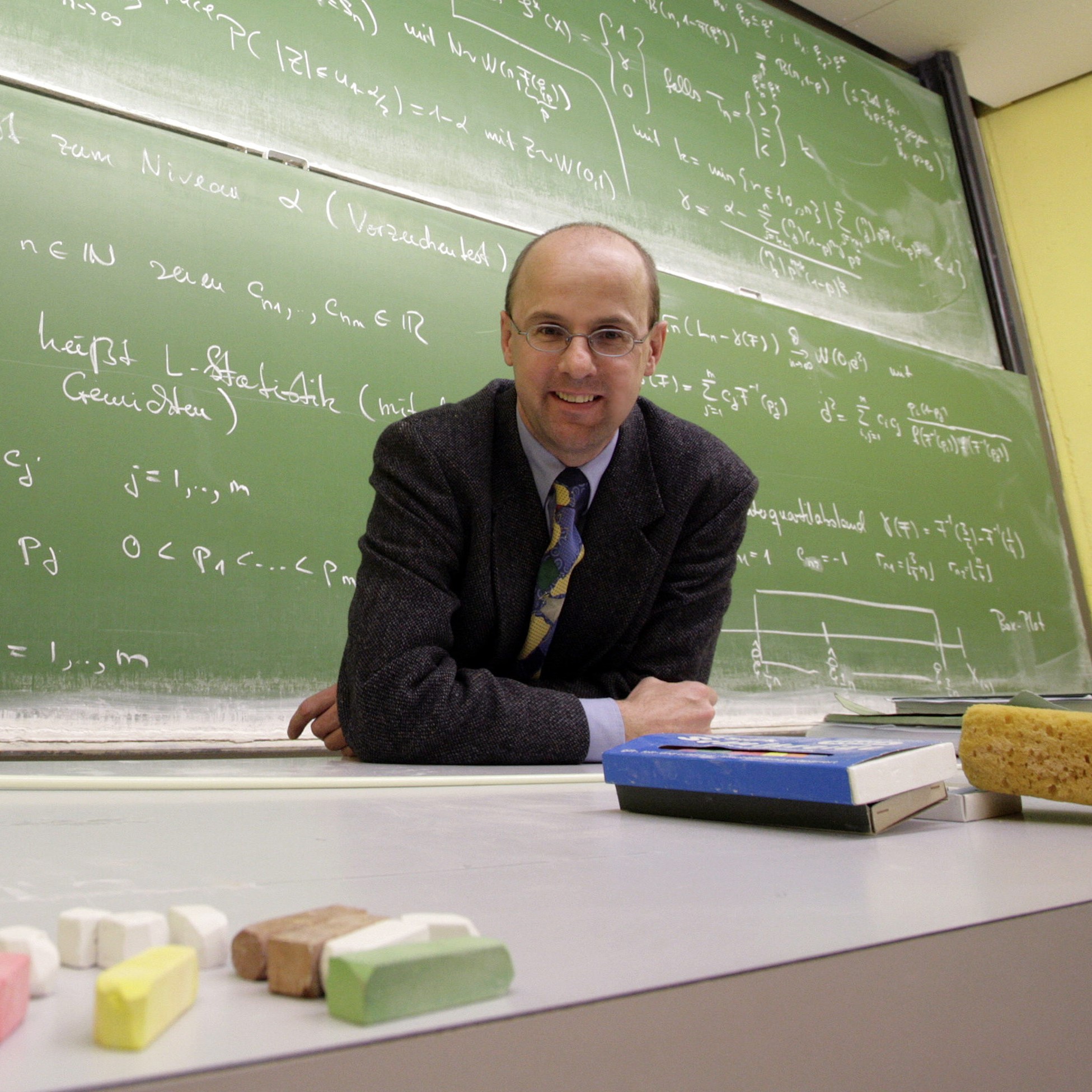
Contact
Personal website
Phone: +492343228284Email: holger[dot]dette[at]rub[dot]deAbstract
I am professor of mathematics at the Ruhr-Universität Bochum. My main interests are in statistics and modelling, in particular design of experiments, time series and goodness-of-fit tests. - Prof. Dr. Ralf Drautz
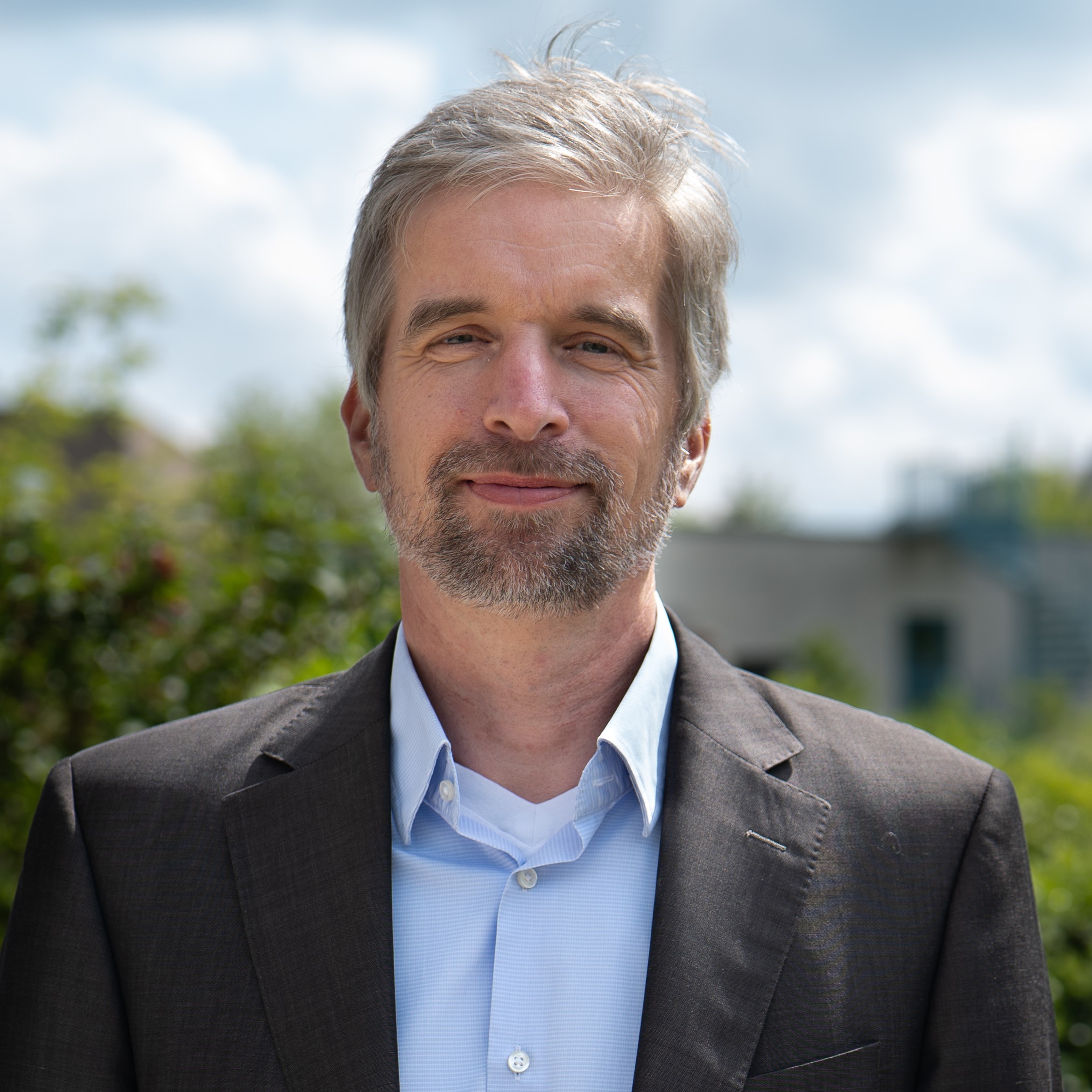
Contact
Personal website
Phone: +49 234 3229308Email: ralf[dot]drautz[at]rub[dot]deAbstract
Ralf Drautz is the director of the Department for Atomistic Modelling and Simulation at the Interdisciplinary Centre for Advanced Materials Simulation (ICAMS) and a professor in the Department for Physics and Astronomy at RUB. Ralf develops quantum-accurate interatomic potentials that are derived from density functional theory. The potentials are employed in atomistic simulations for predicting structural stability and mechanical, kinetic and thermodynamic properties of materials. Automated workflows together with high-throughput density functional theory calculations are used to explore chemical phase space, which in combination with statistical machine learning forms the basis for computational materials design. Ralf obtained his Ph.D. at the Max-Planck-Institute for metals research and the University of Stuttgart. Before coming to Bochum Ralf worked at the University of Oxford, where he still contributes to teaching as a visiting professor. - Dr. Victor Dudarev

Contact
Personal website
Phone: +49 (0) 234-32-19079Email: victor[dot]dudarev[at]ruhr-uni-bochum[dot]deAbstract
Victor Dudarev is a specialist in the development of materials science databases and the application of information technology in materials science, including the use of machine learning techniques to predict the properties of substances. He is currently working as a Postdoc at the Materials Discovery and Interfaces department since 2022, where his main responsibility is the development of an extensible Research Data Management System to support materials science research in geographically distributed SFB projects (CRC 247, CRC 1625). He is the author of more than a hundred scientific publications and holds 4 software patents. - Prof. Dr. Ilya Eremin

Contact
Personal website
Phone: +49 0234 32 26604Email: ilya[dot]eremin[at]rub[dot]deAbstract
My group research activity lie in general field of quantum many-body theory and its application in condensed matter and related systems. Our particular interests are related to the investigation of strongly correlated low-dimensional electronic and magnetic systems, unconventional superconductivity, non-equilibrium phenomena, topological field theories in topological insulators and novel states of matter forming at the interfaces. - Dr. Suzana Fries
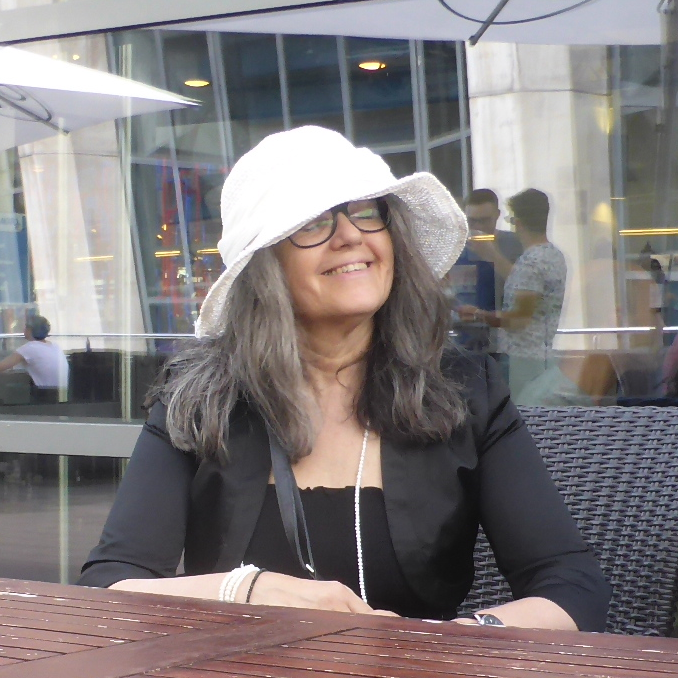
Contact
Personal website
Phone: +49 234 32 26464Email: suzana[dot]g[dot]fries[at]rub[dot]deAbstract
Suzana G. Fries is an independent scientist, dedicated to combine experimental and first-principle data for the design of alloys that are applied and sustainable. She received her Doctor in Science title from the Physics Institute at the Universidade Federal de Rio Grande do Sul, UFRS, Brazil, in 1985. Following professorships and research in several universities, she retired in Germany after working 10 years as researcher at ICAMS, Ruhr University Bochum (RUB). She participated in COST 507, on light metal alloys, when in Max-Planck Institute in Stuttgart; COST 535, on alloyed aluminides; COST 531, on lead free solders; MP0602, on high temperature soft solders when in RWTH/ACCESS e.V in Aachen. She took part in SFB/TR 103, 12 years project on superalloys single-crystals in RUB, Bochum. Following that, she is affiliated to the Materials Research Department. With co-authors she wrote the book Computational Thermodynamics-CALPHAD Method. She is recipient of the Kroll Medal and Hume Rothery Prize,IOM3, UK. In 2022 she received the honorary doctorate at KTH, Stockholm. She promotes open source codes (Opencalphad), envisaging education. - Prof. Dr. Anna Grünebohm

Contact
Personal website
Phone: +49 234 32 29377Email: anna[dot]gruenebohm[at]rub[dot]deAbstract
Anna Grünebohm is head of the group Scale-bridging Simulation of Functional Composites at the Interdisciplinary Centre for Advanced Materials Simulation (ICAMS) and a junior professor in the Departments for Mechanical Engineering and Physics and Astronomy at RUB. Currently, she is member of the MRD board and course director of the graduate school Scale-bridging Materials Modelling. Her work focuses on the computer aided design of functional ferroelectric materials for energy technology. In particular she is interested in the coupling between microstructure, phase transitions and the magnitude and reversibility of functional responses. Anna obtained her Ph.D. at the Faculty of Physics at the University of Duisburg-Essen and before coming to Bochum she worked in the priory program Ferroic cooling. - Prof. Dr. Klaus Hackl
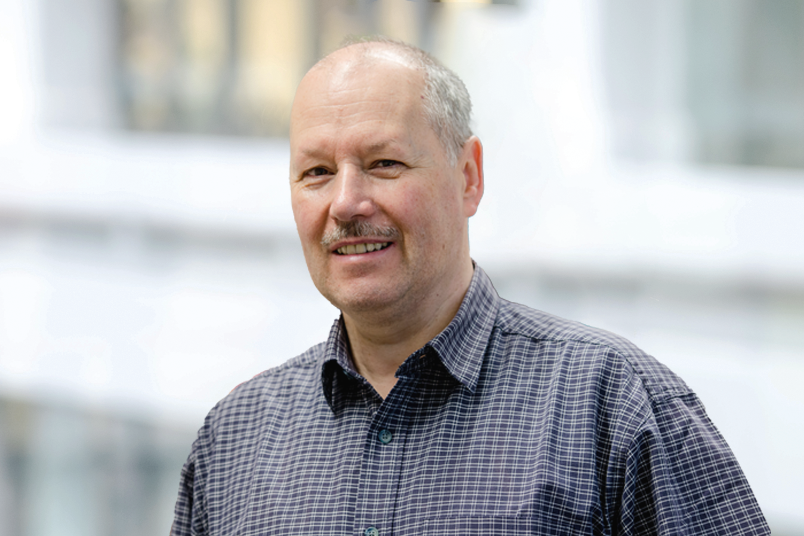
Contact
Personal website
Email: klaus[dot]hackl[at]rub[dot]deAbstract
Klaus Hackl is head of the Chair of Mechanics of Materials at RUB. He obtained his PhD at the RWTH Aachen, spent three years as PostDoc at the University of Delaware and seven years at the Technical University Graz, where he obtained his habilitation. At RUB, he was speaker of a DFG Research Group on Analysis and Computation of Microstructures in Finite Plasticity (2007-2015). His research interests comprise the development of models for materials with internal structure and complex behavior and numerical schemes for these. Special emphasis is laid on closely accounting for the physical processes involved and thus reducing the number of phenomenological parameters to a minimum. The material classes studied include poly- and single-crystalline metals, specifically shape-memory alloys, and various bio- and geomaterials. The processes considered include plasticity, recrystallization, growth of biological tissues, damage, diffusion, phase-transformation and formation of microstructure. - Dr. Thomas Hammerschmidt

Contact
Personal website
Email: thomas[dot]hammerschmidt[at]rub[dot]deAbstract
Thomas Hammerschmidt is leader of the research group Atomistic Simulation of Structural and Phase Stability in the Department Atomistic Modelling and Simulation of Prof. Dr. Ralf Drautz at the Interdisciplinary Centre for Advanced Materials Simulation (ICAMS). Thomas develops and applies data-driven and atomistic methods in order to join correlative classical data science with causative physical models as the key to predictive computational materials science. To this end he combines modern machine learning techniques with a hierarchy of atomistic simulation methods that range from density-functional theory to coarse-grained representations of the interatomic interaction in steels, superalloys and batteries. Thomas obtained his Ph.D. at the Fritz-Haber-Institute of the Max-Planck-Society and the Technical University Berlin. Before coming to Bochum Thomas worked at the University of Oxford as postdoctoral research assistant. - Prof. Dr. Alexander Hartmaier

Contact
Personal website
Phone: +49 234 32-29314Email: alexander[dot]hartmaier[at]rub[dot]deAbstract
Alexander Hartmaier is head of the chair for Mechanics of Materials at RUB and Director of the department Micromechanical and Macroscopic Modelling at ICAMS. Since 2016 he is also guest professor at the Harbin Institute of Technology/China, initially as Jang Chiang Scholar. Before that, he has been Professor of Materials Science at Friedrich-Alexander-Universität Erlangen-Nürnberg. He obtained his PhD, which has been awarded the Otto-Hahn-Medal of the Max Planck Society, at the Max Planck Institute for Metals Research in Stuttgart/Germany in 2000. Besides his academic activities, Dr. Hartmaier served the Deutsche Gesellschaft für Materialkunde (DGM) as chairman in the term 2017/18, as board member from 2013 to 2018, and as speaker of the program for young scientists from 2011 to 2014. His main research focus lies on scalebridging materials modeling with the aim to reveal the fundamental mechanisms of plastic deformation and failure of materials. - Dr. Tilmann Hickel

Contact
Personal website
Phone: +211-6792575Email: hickel[at]mpie[dot]deAbstract
Dr. Tilmann Hickel leads the group for Computational Phase studies at the Research Department Computational Materials Design at Max-Planck-Institut für Eisenforschung in Düsseldorf. The research in the group is focused on the development and application of state-of-the-art ab initio techniques employing density functional theory (DFT). - Dr. Rebecca Janisch

Contact
Personal website
Phone: +49 32 29304Email: rebecca[dot]janisch[at]rub[dot]deAbstract
Rebecca Janisch is the head of the working group Mechanical Properties of Interfaces at the Interdisciplinary Centre for Advanced Materials Simulation (ICAMS) and private lecturer at the Faculty of Mechanical Engineering. Rebecca wants to understand the mechanical properties of materials microstructures "from the bottom up", where the bottom can be the behaviour of defects, atoms, or even electrons in the microstructure. She works on models and relationships which relate this behaviour to properties like structure, stiffness and strength and can serve as constitutive relationships for multiscale mechanical modeling. Rebecca obtained her Ph.D. at the Max-Planck-Institute for metals research and the University of Stuttgart. Before starting at ICAMS she worked at the University of Erlangen-Nürnberg, the Technical University Chemnitz and the University of California Santa Barbara. - Dr.-Ing. Philipp Junker

Contact
Personal website
Phone: +492343226026Email: philipp[dot]junker[at]rub[dot]de - Dr. Arne Ludwig

Contact
Personal website
Phone: +49 234 32 25864Email: arne[dot]ludwig[at]rub[dot]deAbstract
I am responsible for the epitaxial growth of gallium arsenide based semiconductor heterostructures for different types of electronic and optoelectronic research activities. A particular highlight is the growth of ultrahigh quality self-assembled quantum dots; Few nanometer sized crystalline inclusions in a matrix material that can emit indistinguishable single photons. I am interested in studying diverse electronic, photonic and phononic quantum phenomena in these solid state materials for fundamental research and possible future applications. - Dr. Yury Lysogorskiy

Contact
Personal website
Phone: +49 (0) 234 322 9300Email: yury[dot]lysogorskiy[at]rub[dot]deAbstract
Yury Lysogorskiy leads the “Data-driven methods for atomistic simulations” group in the Department for Atomistic Modelling and Simulation at the Interdisciplinary Centre for Advanced Materials Simulation (ICAMS). He works on application of data-driven methods in materials science with a particular focus on the atomic scale, which also includes the development of the computational methods and tools for the interatomic potentials development and validation. Another point of his interest is the application of advanced machine learning methods, such as deep generative models, to the data-driven materials design. Yury obtained his master degree at ISMANS, Le Mans, France and Ph.D. at the Kazan Federal University, Russia. - Prof. Dr. Miguel Marques

Contact
Personal website
Phone: +49 234 32 26370Email: miguel[dot]marques[at]rub[dot]deAbstract
Our group works in the development and application of state-of-the-art ab-initio methods to systems of both fundamental and technological interest. - Prof. Dr. Günther Meschke
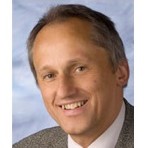
Contact
Personal website
Phone: +49 2343229051Email: guenther[dot]meschke[at]rub[dot]deAbstract
Materials research at the institute for structural mechanics focusses on model-based characterization of the behaviour of cementitious materials, geomaterials and structures at multiple length at time scales. We investigate in particular properties and processes such as material and structural durability under combined multi-physical loadings, damage tolerance under cyclic loadings, excavation processes, additive manufacturing and design of functional materials using a wide range of models and methods such as micromechanics, element-erosion, interface-element models, peridynamics, particle FEM and multi-phase finite element models. - Prof. Dr. Simon Moser

Contact
Email: simon[dot]moser[at]ruhr-uni-bochum[dot]deAbstract
My research aims to develop a fundamental understanding of the electronic structure of complex transition-metal oxides and topological materials—systems that underpin both exciting quantum phenomena and emerging technological applications. I primarily investigate these materials using synchrotron-based spectroscopies such as angle-resolved photoemission (ARPES), for which I also develop intuitive yet predictive theoretical models and analysis methodologies. Currently, my work focuses on electron correlation and altermagnetism in the non-symmorphic Dirac semimetals RuO₂ and IrO₂, as well as the topological properties of atomic monolayers grown on SiC. These efforts span the full materials pipeline, from epitaxial synthesis to the exploration of surface electronic and catalytic properties. - Dr. Matous Mrovec
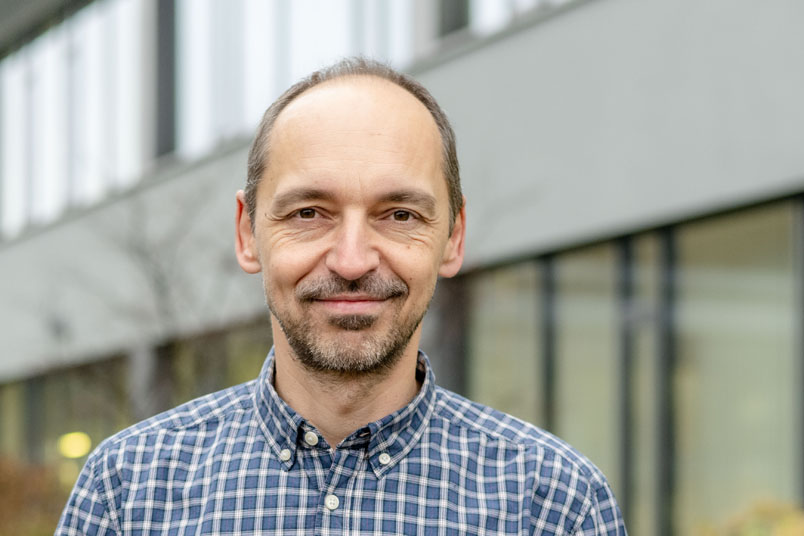
Contact
Personal website
Phone: +49 234 32 29313Email: matous[dot]mrovec[at]ruhr-uni-bochum[dot]deAbstract
Matous Mrovec heads the group Atomistic Simulation of Mechanical Behavior in the Department for Atomistic Modelling and Simulation at the Interdisciplinary Centre for Advanced Materials Simulation (ICAMS) at RUB. The primary research goal is to uncover the relationship between phenomena occurring on the atomic scale and macroscopic mechanical behavior with a particular focus on the role of crystal imperfections. The materials we are interested in include transition metals and their compounds, intermetallics, complex alloys, perovskite oxides and carbon based systems. The methods and models we employ span the whole atomistic modelling hierarchy from accurate first-principles methods through approximate electronic structure approaches to machine learning interatomic potentials. Matous obtained his Ph.D. at the University of Pennsylvania. Before coming to Bochum he worked at the Karlsruhe Institute of Technology and Fraunhofer Institute for Mechanics of Materials. - Prof. Dr.-Ing. Thomas Mussenbrock

Contact
Personal website
Phone: +49 234 32 22488Email: thomas[dot]mussenbrock[at]rub[dot]deAbstract
I am a full professor of electrical engineering in the Department of Electrical Engineering and Information Sciences at Ruhr University Bochum, Germany. I hold the Chair of Applied Electrodynamics and Plasma Technology (AEPT). My research interests are in the area of modeling and simulation of low-temperature plasmas and plasma processes. I am also interested in transport phenomena at the nanoscale, in particular in nanoelectronic and nanoionic resistive switching devices. I received both the PhD and the venia legendi from Ruhr University Bochum, Germany. Prior to my current position (2016-2020), I was a full professor at Brandenburg University of Technology where I held the Chair of Electrodynamics and Physical Electronics in the Faculty of Mathematics, Computer Science, Physics and Electrical Engineering. - Prof. Dr. Jörg Neugebauer

Contact
Personal website
Email: neugebauer[at]mpie[dot]de - Prof. Dr. Dierk Raabe

Contact
Personal website
Email: d[dot]raabe[at]mpie[dot]deAbstract
I studied music, metallurgy and metal physics. After my doctorate and habilitation at RWTH Aachen I worked at Carnegie Mellon University and joined the Max Planck Society as a director in 1999. My current interests lie in four main fields: 1) Design of advanced metallic alloys; 2) Structure-property relations for materials with complex microstructures and compositions; 3) Correlative atom probe tomography; 4) Computational Materials Science. - Prof. Dr. Michael Scherer

Contact
Email: michael[dot]scherer-u7e[at]ruhr-uni-bochum[dot]deAbstract
The research of my group is focused on the exploration of emergent phenomena and correlated behavior of quantum matter and quantum materials. We develop and employ modern quantum field theoretical methods to understand and predict novel effects in a broad field ranging from condensed matter to particle physics - Prof. Dr.-Ing. Viktor Scherer

Contact
Personal website
Phone: +49 (0)234 / 32-26328Email: viktor[dot]scherer[at]ruhr-uni-bochum[dot]deAbstract
Viktor Scherer is head of the chair Energy Plant Technology. He obtained his PhD at KIT, Karlsruhe. After 10 years in the power plant industry he joined RUB. At RUB he is vice-spokesperson of the Collaborative Research Centre (CRC) Oxyflame (SFB/TR129) and the spokesperson of the CRC SFB/TR 287 Bulk-Reaction which focuses on reacting and moving granular assemblies with gas flow. He is an elected member of the DFG Review Board Fluid Mechanics, Technical Thermodynamics and Thermal Energy Engineering. His research interest is focused on the optimization of industrial high temperature processes including processes for material treatment such as blast furnace, lime shaft kilns or rotary kilns. He uses the combined Computational Fluid Dynamics – Discrete Element approach (DEM/CFD) to describe these reactors and to predict the properties of the materials treated. - Prof. Dr. Rochus Schmid

Contact
Personal website
Phone: +49 (0)234/32 24166Email: rochus[dot]schmid[at]rub[dot]deAbstract
Rochus Schmid leads the Computational Materials Chemistry (CMC) group at the Chair of Inorganic Chemistry 2. He works on the development and application of multiscale simulation methods for materials chemistry systems. One of his main fields of interest is the development of accurate force field models for flexible crystalline porous networks like metal-organic frameworks (MOFs) and related hybrid materials. Structural transformations of such systems by external stimuli can only be understood by efficient atomistic simulation models and protocols that allow to bridge length and time scales. He obtained his Ph.D. at the Technical University Munich and worked as a post-doctoral researcher at the University of Calgary in Canada before his Habilitation at the Ruhr-University Bochum. - Dr. Oleg Shchyglo
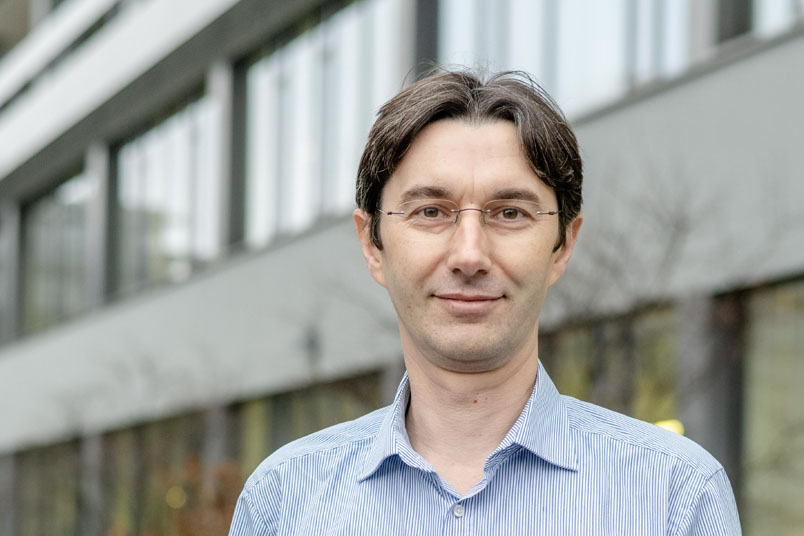
Contact
Personal website
Phone: +49 234 32 26761Email: oleg[dot]shchyglo[at]rub[dot]de - Prof. Dr. Ingo Steinbach

Contact
Personal website
Email: ingo[dot]steinbach[at]rub[dot]deAbstract
Ingo Steinbach is director of the Department for “Scale-bridging Thermodynamic and Kinetic Simulation (STKS)” at the Interdisciplinary Centre for Advanced Materials Simulation (ICAMS), professor in the Department of Mechanical Engineering and associated for Physics and Astronomy at RUB. He is one of the pioneers in “Phase-Field Modelling and Simulation”, an advance technique to simulate microstructure evolution and phase-transformations at the mesoscopic scale. Based on a solid ground in thermodynamically consistent continuum models, it uses accurate numerics for solving the moving boundary problem of evolving interfaces coupled to transport phenomea in the bulk phases, such as multicomponent diffusion, elastic and plastic interaction in solid and fluid flow in liquid and gas. Also electrical and magnetic effects are accessible by the method. Mostly focusing on metallic systems, also minerals and polymers are investigated in close collaboration with experimental groups. - Prof. Dr. Markus Stricker

Contact
Personal website
Phone: +49 234 32 29377Email: markus[dot]stricker[at]ruhr-uni-bochum[dot]deAbstract
Markus Stricker is the head of the group Materials Informatics and Data Science at the Interdisciplinary Centre for Advanced Materials Simulation (ICAMS). Markus obtained his Ph.D. at the Institute for Applied Materials at Karlsruhe Institute of Technology. Before his appointment in Bochum Markus worked as a Postdoc at the École Polytechnique Fédérale de Lausanne, Switzerland. Markus develops and applies algorithms and methods from data sciences and machine learning to materials science problems. His background is in Computational Materials Science. Current applications are data fusion from simulation and experiment to improve interpretability, the development of interatomic potentials based on neural networks for alloys, and data mining in large defect simulations to improve the understanding of their collective behavior in order to inform coarse-grained models. - Prof. Dr. Marialore Sulpizi

Contact
Personal website
Phone: +49 234 32 23737Email: marialore[dot]sulpizi[at]rub[dot]deAbstract
My research aims to understand the structure, dynamics and reactivity of solid-liquid interfaces using a multiscale approach that includes ab initio and atomistic molecular dynamics simulations. Our group pays special attention to electrified interfaces. Knowledge of the molecular structure of water and electrolyte solutions in the vicinity of a charged substrate is a prerequisite for the fundamental understanding of natural phenomena, such as transport and signal transmission at biomembranes, but also key to the further development of energy conversion and storage devices, such as in photocatalysis for water splitting. - Prof. Dr. Godehard Sutmann

Contact
Personal website
Phone: +49 2461 61-6746Email: g[dot]sutmann[at]fz-juelich[dot]deAbstract
Godehard Sutmann is head of the research group “High Performance Computing” at ICAMS and a professor at Ruhr-University Bochum. He is also a member of the Jülich Supercomputing Centre at Forschungszentrum Jülich, where he is head of the Simulation and Data Laboratory Molecular Systems. In addition he is director of the Jülich CECAM node, which is part of the European network organization CECAM. Research is focused on method and algorithm development for particle based simulations, e.g. molecular dynamics, material point method, adaptive resolution or fast electrostatics solvers. A focus is given on the development of parallel algorithms, including load balancing methods for the work distribution of simulations on large parallel partitions. He obtained his Phd at TU Munich in physics and spent a postdoc period at University of Trento. He had research stays, e.g., at University of California Santa Barbara, UNAM Mexico City and the NIH in Washington. - Dr.-Ing. Napat Vajragupta
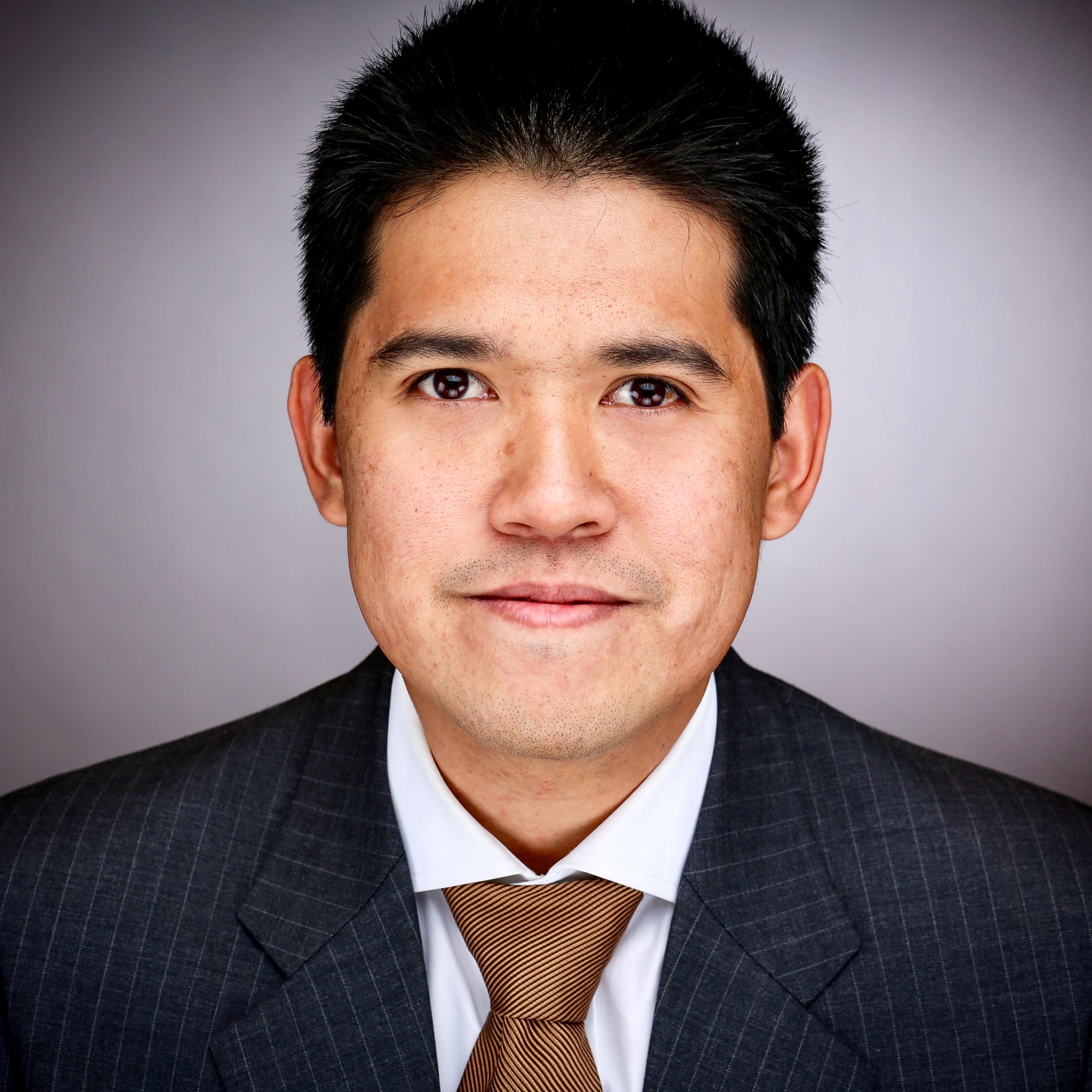
Contact
Personal website
Phone: +49 234 32-22417Email: napat[dot]vajragupta[at]rub[dot]deAbstract
I am a group leader of the research group “Micromechanics of Large Deformations”, which is part of the Department of Microscopic and Macroscopic Modelling (MMM) at the Interdisciplinary Centre for Advanced Materials Simulation (ICAMS), Ruhr-University Bochum. Prior to this position, I completed my doctoral degree from the Steel Institute (IEHK), RWTH Aachen University in 2015. Currently, my research focusses on development of a micromechanical modelling strategy to consider the influence of important microstructural features on mechanical response of materials at both micro- and macroscopic scales. With this goal in mind, three active research activities can be highlighted, which are: microstructure digitalization; crystal plasticity models and parameterization; and in-depth analysis of microstructure deformation. - Dr. Fathollah Varnik
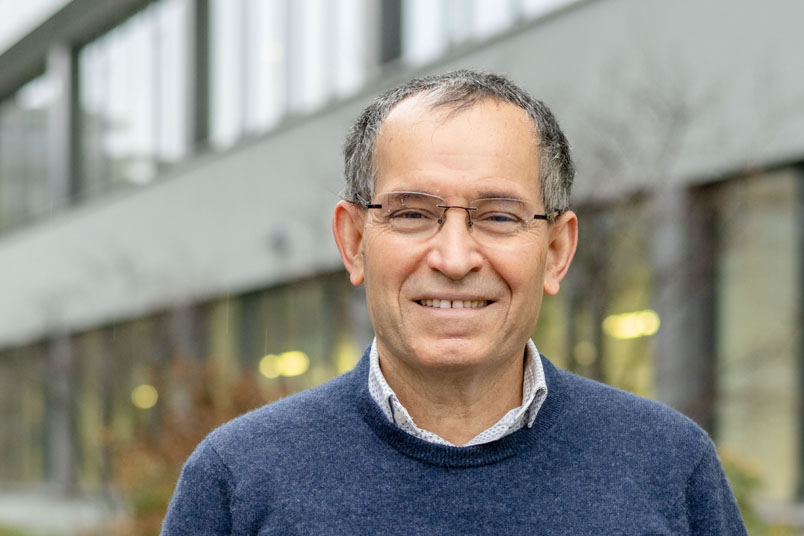
Contact
Personal website
Phone: +4923432194Email: fathollah[dot]varnik[at]rub[dot]deAbstract
Fathollah Varnik is the head of the Complex Fluids group at the Interdisciplinary Centre for Advanced Materials Simulation (ICAMS). After his PhD, he spent three years in France, four years at the MPIE Düsseldorf and then joined ICAMS (2008). In the early years of the past decade, his research unit made major contributions to further development of the lattice Boltzmann method to study nano-fluidic phenomena such as wetting, jetting and droplet spreading on nano-scale (Fluctuating LBM for Non-Ideal Fluids). Fathollah Varnik’s current research interests cover a broad range, e.g. mechanical properties of metallic glasses, shape memory polymers and hemodynamics. Since 2020, he is a member of the SFB/TRR 287 (Bulk Reaction), which aims at a better understanding and optimization of kinetics of heat and mass transfer in reacting gas flows through particle assemblies. - Prof. Dr.-Ing. Heinz Voggenreiter

Contact
Personal website
Phone: +49 (0)711 68 62 444Email: heinz[dot]voggenreiter[at]dlr[dot]deAbstract
Professor Heinz Voggenreiter joined the German Aerospace Center (DLR) in 2005. He heads the Institute of Materials Research in Cologne and the Institute of Structures and Design in Stuttgart and Augsburg. The research portfolio spreads across the fields of metallic, ceramic and hybrid structures and materials, aerogels and aerogel-composites, thermoelectric systems and high-temperature and functional coatings. The development of numerical methods to simulate the behavior of materials and components completes these competencies. Beforehand, Voggenreiter worked for Airbus Group, formerly EADS, and Daimler AG. As founding member and vice chairman of the youth research center AEROSPACE LAB in Herrenberg, he actively promotes young pupils and students. Since 2005 Voggenreiter is a Professor at the University of Stuttgart for Lightweight Design in Aeronautics. In 2018 he became honorary member at the School of Engineering at the University of British Columbia in Kelowna (Canada). - Prof. Dr. Sebastian Weber
Contact
Personal website
Phone: +49 (0)234 32-22410Email: sebastian-ludger[dot]weber[at]ruhr-uni-bochum[dot]deAbstract
Since April 2020, Sebastian Weber is head of the Chair for Materials Technology at RUB. He obtained his PhD at RUB in 2005 and conducted research at MPIE and HZB afterwards, followed by a full professorship at Bergische Universität Wuppertal (BUW) in 2014. At BUW he was responsible for the establishment of a new foundation chair “Novel Manufacturing Technologies and Materials”, related to pronounced transfer activities with a particular emphasis on circular economy and sustainable development. His research is focused on metallic materials, particularly iron-base alloys. A key aspect of his research are processes and materials related to powder metallurgy, including sintering, hot-isostatic pressing and additives manufacturing technologies. In these fields of research, correlations between processing, material and energy consumption, resulting microstructures and properties are addressed by him, always under consideration of technical applications.
- Prof. Dr.-Ing. Daniel Balzani

Contact
Personal website
Phone: +49 234 32 23080Email: daniel[dot]balzani[at]rub[dot]deAbstract
In my group we develop methods for the continuum mechanical modeling and simulation of complex materials. Focus is on the development of scale-coupling numerical methods as well as new material models which enable the simulation of materials such as multiphase steels, textile membranes, soft biological tissues, fiber-concrete composites, or hardmetal composites, also by incorporating uncertainties at different scales. Increasingly, we are also interested in the experimental characterization of nonlinear material properties as well as the unique identification of material parameters. Based thereon, we develop for instance new diagnostic tools for medical applications as well as methods for the measurement of microscopic material properties. - Prof. Dr.-Ing. Marion Bartsch

Contact
Personal website
Phone: 02203-601-2436Email: marion[dot]bartsch[at]dlr[dot]deAbstract
I am researcher at the German Aerospace Center in Cologne and head of the department 'Experimental and Numerical Methods' in the Institute of Materials Research and also Professor for 'Aerospace Materials', Faculty of Mechanical Engineering at the Ruhr- Universität Bochum. My research interests are mechanical properties and microstructure of materials and the respective characterization methods. In my team experimental research goes together with microstructure based numerical modelling. My main research subjects are high temperature behavior of metals, ceramics and coating systems with a focus on fatigue and fracture. We are collaborating with national and international academic and industrial partners. Please feel free to contact me. - Prof. Dr. Anna Böhmer

Contact
Personal website
Phone: +49 234 32 23649Email: boehmer[at]physik[dot]ruhr-uni-bochum[dot]deAbstract
I am currently building up a new quantum materials group at the physics department of the Ruhr-University. Our goal is to elucidate the interaction of correlated electronic phases with each other, with the crystal lattice and with the environment by a variety of experimental techniques. We will prepare singly-crystalline samples and study their structural, electrical, thermodynamic and mechanical properties in a wide and cryogenic temperature range and also in high magnetic fields. By manipulating these materials, we aim to discover new physics and interesting functional properties. - Prof. Dr.-Ing. Rolf Breitenbücher

Contact
Personal website
Phone: +49 234 32 22649Email: rolf[dot]breitenbuecher[at]rub[dot]deAbstract
In my function as the head of the Institute for Building Materials at the Ruhr University Bochum, my research interests focus on the experimental investigation of cementitious materials, especially in tunneling and traffic areas, on the durability of concrete at chemical exposure, the effect of high-frequent cyclic stresses in the microstructure as well as shotcrete and fiber-reinforced concrete. In the course of the investigations numerous innovative test procedures and setups have been developed that allow the characterization of the behavior of cementitious materials from a microstructural to a macro level. Being a member of several normative panels it allows me to link the experimental research to the development of current national and international guidelines. - Dr.-Ing. Tobias Brink

Contact
Personal website
Email: t[dot]brink[at]mpie[dot]deAbstract
Tobias Brink is the group leader for Atomistic Modelling of Material Interfaces at the Max Planck Institute for Sustainable Materials (Düsseldorf). He obtained his PhD from the Technische Universität Darmstadt working on molecular dynamics simulations of heterogeneous metallic glasses. After a postdoc at the École polytechnique fédérale de Lausanne spent on atomistic and continuum simulations of surface roughness for tribology, he is currently most interested in structure–property relations at grain boundaries. These interfaces have their own thermodynamics of structural transitions and segregation, where atomistic computer simulations can provide unique insights, especially when combined with experimental atomic-resolution imaging. - Prof. Iurie Curoșu

Abstract
Iurie Curoșu is professor and holder of the Chair of Construction Materials at the Faculty of Civil and Environmental Engineering of the Ruhr-Universität Bochum. His professional background is civil engineering with the scientific path in the field of construction materials. His research interests relate mainly to the durability and resilience of the built infrastructure. Understanding and enhancing the load-bearing properties and durability issues based on material composition and exposure, as well as developing appropriate structural repair, strengthening and protection solutions shapes his core research areas. Various concretes and mineral-bonded composites with discrete or continuous reinforcement are investigated within context. The research aims at achieving a profound understanding of the connection between their performance and decisive features at different scales of observation. Thus, the strong emphasis on the experimental material characterization is supported by a scale-linking approach (from micro- to macro), which is achieved by tailored testing methods, destructive and non-destructive analytical investigations, and numerical simulations. Finally, besides the durability and performance aspects, the investigation of sustainable material compositions, automatized application processes and recycling or reuse potential of such composites are as well a matter of interest. - Prof. Dr. Gerhard Dehm

Contact
Personal website
Phone: 02116792217Email: dehm[at]mpie[dot]deAbstract
I am director at the Max-Planck-Institut für Eisenforschung GmbH in Düsseldorf and Professor at the Ruhr-Universität-Bochum. In my research team we mainly use advanced electron microscopy methods including aberration corrected scanning transmission electron microscopy, electron spectroscopy and X-ray diffraction/synchrotron radiation to study the microstructure of materials down to the atomic level. Small scale experimental testing methods are developed and applied to probe material properties with high spatial resolution and often under specific environmental conditions. Our micro-/nanomechanical experiments are combined with electron microscopy and/or diffraction to resolve the interplay of microstructure and properties and to use this knowledge for materials design. The materials portfolio stretches from thin films and coatings to alloys, steels and intermetallic phases. We have a global network of scientific partners and industrial cooperations across Europe. - Prof. Dr.-Ing. Gunther Eggeler

Contact
Personal website
Phone: 0234 32 23022Email: gunther[dot]eggeler[at]rub[dot]deAbstract
The Chair for Materials Science and Engineering performs research and teaching on the processing, microstructure and mechanical properties of materials. The main research areas are shape memory alloys and high temperature superalloys. The Chair for Materials Science and Engineering collaborates with partners from industry in research and development projects. Please do not hesitate to contact us if you have any questions. - Prof. Dr. Klaus Hackl

Contact
Personal website
Email: klaus[dot]hackl[at]rub[dot]deAbstract
Klaus Hackl is head of the Chair of Mechanics of Materials at RUB. He obtained his PhD at the RWTH Aachen, spent three years as PostDoc at the University of Delaware and seven years at the Technical University Graz, where he obtained his habilitation. At RUB, he was speaker of a DFG Research Group on Analysis and Computation of Microstructures in Finite Plasticity (2007-2015). His research interests comprise the development of models for materials with internal structure and complex behavior and numerical schemes for these. Special emphasis is laid on closely accounting for the physical processes involved and thus reducing the number of phenomenological parameters to a minimum. The material classes studied include poly- and single-crystalline metals, specifically shape-memory alloys, and various bio- and geomaterials. The processes considered include plasticity, recrystallization, growth of biological tissues, damage, diffusion, phase-transformation and formation of microstructure. - Dr. Rebecca Janisch

Contact
Personal website
Phone: +49 32 29304Email: rebecca[dot]janisch[at]rub[dot]deAbstract
Rebecca Janisch is the head of the working group Mechanical Properties of Interfaces at the Interdisciplinary Centre for Advanced Materials Simulation (ICAMS) and private lecturer at the Faculty of Mechanical Engineering. Rebecca wants to understand the mechanical properties of materials microstructures "from the bottom up", where the bottom can be the behaviour of defects, atoms, or even electrons in the microstructure. She works on models and relationships which relate this behaviour to properties like structure, stiffness and strength and can serve as constitutive relationships for multiscale mechanical modeling. Rebecca obtained her Ph.D. at the Max-Planck-Institute for metals research and the University of Stuttgart. Before starting at ICAMS she worked at the University of Erlangen-Nürnberg, the Technical University Chemnitz and the University of California Santa Barbara. - Dr.-Ing. Philipp Junker

Contact
Personal website
Phone: +492343226026Email: philipp[dot]junker[at]rub[dot]de - Prof. Dr.-Ing. Alexander Kauffmann

Contact
Phone: +49 234 32 18430Email: alexander[dot]kauffmann[at]rub[dot]deAbstract
Alexander Kauffmann is the head of the Chair Materials Science and Engineering at the Institute of Materials of RUB. He studied materials science and engineering and obtained his doctorate at Dresden University of Technology. As a postdoc, he was the group leader of Physical Metallurgy at the Institute for Applied Materials of Karlsruhe Institute of Technology. The chair’s research focuses on the development and investigation of novel metallic and intermetallic materials, particularly for extreme application conditions. This involves for example high temperature materials under oxidation and creep conditions or the investigation of deformation mechanisms at ultralow temperatures. Furthermore, functional materials like shape memory alloys and polymers are addressed. The research requires the application of cast metallurgical synthesis methods to obtain targeted microstructures. To reveal the origins of microstructure formation to materials’ properties, he applies scale-bridging microstructural characterization methods. - Dr. Andreas Kreyssig

Contact
Personal website
Phone: +49 (0) 234 32 - 23648Email: andreas[dot]kreyssig[at]rub[dot]de - Jun.-Prof. Dr. Guillaume Laplanche

Contact
Personal website
Phone: +49 234 32-25912Email: guillaume[dot]laplanche[at]rub[dot]deAbstract
I’ve completed my PhD in Materials Science at the P’ Institute (Insitut Polytechnique de Poitiers, France) in 2011. After a brief time as a Humboldt fellow at the Ruhr-University Bochum during which I've worked on small-scale mechanical behavior of shape memory alloys, I was appointed in 2016 as a Junior-professor. My main research activities cover investigations on the relationship between processing parameters, microstructures and mechanical properties of metallic and intermetallic materials. Currently the main focus of my research group “Microstructure of materials” is on High-entropy alloys. In particular I study the effect of the chemical composition on mechanical properties as well as phase stability and precipitation kinetics. - Dr.-Ing. Jonathan Lentz

Contact
Personal website
Phone: +49 234 32-25967Email: lentz[at]wtech[dot]rub[dot]de - Prof. Dr. Günther Meschke

Contact
Personal website
Phone: +49 2343229051Email: guenther[dot]meschke[at]rub[dot]deAbstract
Materials research at the institute for structural mechanics focusses on model-based characterization of the behaviour of cementitious materials, geomaterials and structures at multiple length at time scales. We investigate in particular properties and processes such as material and structural durability under combined multi-physical loadings, damage tolerance under cyclic loadings, excavation processes, additive manufacturing and design of functional materials using a wide range of models and methods such as micromechanics, element-erosion, interface-element models, peridynamics, particle FEM and multi-phase finite element models. - Dr. Matous Mrovec

Contact
Personal website
Phone: +49 234 32 29313Email: matous[dot]mrovec[at]ruhr-uni-bochum[dot]deAbstract
Matous Mrovec heads the group Atomistic Simulation of Mechanical Behavior in the Department for Atomistic Modelling and Simulation at the Interdisciplinary Centre for Advanced Materials Simulation (ICAMS) at RUB. The primary research goal is to uncover the relationship between phenomena occurring on the atomic scale and macroscopic mechanical behavior with a particular focus on the role of crystal imperfections. The materials we are interested in include transition metals and their compounds, intermetallics, complex alloys, perovskite oxides and carbon based systems. The methods and models we employ span the whole atomistic modelling hierarchy from accurate first-principles methods through approximate electronic structure approaches to machine learning interatomic potentials. Matous obtained his Ph.D. at the University of Pennsylvania. Before coming to Bochum he worked at the Karlsruhe Institute of Technology and Fraunhofer Institute for Mechanics of Materials. - Prof. Dr.-Ing. Tamara Nestorovic

Contact
Personal website
Phone: +49 0234 32 25883Email: tamara[dot]nestorovic[at]rub[dot]deAbstract
Tamara Nestorović is head of the Chair for Mechanics of Adaptive Systems and of the Institute for Computational Engineering at RUB. She obtained her PhD at Otto-von-Guericke University Magdeburg, where she also worked as project leader at the Fraunhofer Institute for Factory Operation and Automation IFF before coming to Bochum for the professorship. She develops and implements active control systems for the vibration suppression based on multifunctional piezoelectric materials and researches on vibration phenomena and their broad manifestations with the goal of exploiting the vibration features for artificial intelligence (AI) based structural health monitoring (SHM). In the field of mechanized tunnelling she develops the reconnaissance methods based on the full wave form inversion to find the obstacles ahead of the tunnel front. Research is supported by the ultrasonic wave excitation and acquisition, also with the goal of damage detection in concrete materials. - Dr.-Ing. Janine Pfetzing-Micklich

Contact
Personal website
Phone: +49 234 32 25934Email: janine[dot]pfetzing[at]rub[dot]deAbstract
Janine Pfetzing is the manager of the new research building Interface dominated high performance materials (Zentrum für Grenzflächendominierte Höchstleistungswerkstoffe, ZGH) at Ruhr-Universität Bochum (zgh.rub.de). The research focus of the ZGH is on the development of new high performance materials. Therefore experiments and simulations are performed from atomic scale over mesoscopic to component dimensions to gain a comprehensive understanding of materials interfaces and their properties. Janine Pfetzings own research interests are on local mechanical properties and deformation mechanisms of materials. Therefore she uses different nanoindentation systems (ex-situ and in-situ) to perform micromechanical experiments. - Prof. Dr.-Ing. Arne Röttger

Contact
Personal website
Phone: +49 212 231340110Email: roettger[at]uni-wuppertal[dot]deAbstract
Since 2011 I have been working as a research group leader at the Institute of Materials Technology of the Ruhr University Bochum. My research focusses on the development of new materials containing hard phases with improved mechanical, tribological and chemical properties. Material development takes into account aspects of metallurgy as well as technological constraints such as resource efficiency, cost-effectiveness and processability. For material development I use both computer-based and experimental methods. In principle, I consider the question of the relationship between the chemical composition and the stability of individual phases, the production-related structure formation processes and the associated material properties. - Prof. Dr.-Ing. Jan Sehrt

Contact
Personal website
Phone: +49 234 32 26162Email: jan[dot]sehrt[at]ruhr-uni-bochum[dot]deAbstract
Prof. Dr.-Ing. Jan T. Sehrt started his research activities in the field of additive manufacturing in 2003. He and his employees at the chair Hybrid Additive Manufacturing (HAM) – which was established at RUB in 2018 – offer an extensive expertise along the complete process chain of additive manufacturing. The chair deals with material modifications and investigations and has a high level of expertise in beam-matter interaction within the additive manufacturing process. Furthermore, the process qualification of new materials, the improvement of mechanical properties by influencing the material structure on the one hand and optimization of the surface structure on the other hand as well as hybrid part concepts and their qualification are within the R&D scope of HAM. Additionally research activities implement additive part design (e.g. optimization of topology, lightweight structures and integration of functionalities) and quality control within the additive manufacturing process as well as applied to the produced parts. Prof. Dr.-Ing. Jan T. Sehrt also implements into standardization work such as the VDI Technical Committee Additive Manufacturing (FA105), or as a German expert in other standardization committees for Additive Manufacturing such as ISO/TC 261 AM and NA 145-04-01 AA (DIN). - Dr.-Ing. Napat Vajragupta

Contact
Personal website
Phone: +49 234 32-22417Email: napat[dot]vajragupta[at]rub[dot]deAbstract
I am a group leader of the research group “Micromechanics of Large Deformations”, which is part of the Department of Microscopic and Macroscopic Modelling (MMM) at the Interdisciplinary Centre for Advanced Materials Simulation (ICAMS), Ruhr-University Bochum. Prior to this position, I completed my doctoral degree from the Steel Institute (IEHK), RWTH Aachen University in 2015. Currently, my research focusses on development of a micromechanical modelling strategy to consider the influence of important microstructural features on mechanical response of materials at both micro- and macroscopic scales. With this goal in mind, three active research activities can be highlighted, which are: microstructure digitalization; crystal plasticity models and parameterization; and in-depth analysis of microstructure deformation. - Dr. Fathollah Varnik

Contact
Personal website
Phone: +4923432194Email: fathollah[dot]varnik[at]rub[dot]deAbstract
Fathollah Varnik is the head of the Complex Fluids group at the Interdisciplinary Centre for Advanced Materials Simulation (ICAMS). After his PhD, he spent three years in France, four years at the MPIE Düsseldorf and then joined ICAMS (2008). In the early years of the past decade, his research unit made major contributions to further development of the lattice Boltzmann method to study nano-fluidic phenomena such as wetting, jetting and droplet spreading on nano-scale (Fluctuating LBM for Non-Ideal Fluids). Fathollah Varnik’s current research interests cover a broad range, e.g. mechanical properties of metallic glasses, shape memory polymers and hemodynamics. Since 2020, he is a member of the SFB/TRR 287 (Bulk Reaction), which aims at a better understanding and optimization of kinetics of heat and mass transfer in reacting gas flows through particle assemblies. - Prof. Dr.-Ing. Heinz Voggenreiter

Contact
Personal website
Phone: +49 (0)711 68 62 444Email: heinz[dot]voggenreiter[at]dlr[dot]deAbstract
Professor Heinz Voggenreiter joined the German Aerospace Center (DLR) in 2005. He heads the Institute of Materials Research in Cologne and the Institute of Structures and Design in Stuttgart and Augsburg. The research portfolio spreads across the fields of metallic, ceramic and hybrid structures and materials, aerogels and aerogel-composites, thermoelectric systems and high-temperature and functional coatings. The development of numerical methods to simulate the behavior of materials and components completes these competencies. Beforehand, Voggenreiter worked for Airbus Group, formerly EADS, and Daimler AG. As founding member and vice chairman of the youth research center AEROSPACE LAB in Herrenberg, he actively promotes young pupils and students. Since 2005 Voggenreiter is a Professor at the University of Stuttgart for Lightweight Design in Aeronautics. In 2018 he became honorary member at the School of Engineering at the University of British Columbia in Kelowna (Canada). - Prof. Dr. Sebastian Weber
Contact
Personal website
Phone: +49 (0)234 32-22410Email: sebastian-ludger[dot]weber[at]ruhr-uni-bochum[dot]deAbstract
Since April 2020, Sebastian Weber is head of the Chair for Materials Technology at RUB. He obtained his PhD at RUB in 2005 and conducted research at MPIE and HZB afterwards, followed by a full professorship at Bergische Universität Wuppertal (BUW) in 2014. At BUW he was responsible for the establishment of a new foundation chair “Novel Manufacturing Technologies and Materials”, related to pronounced transfer activities with a particular emphasis on circular economy and sustainable development. His research is focused on metallic materials, particularly iron-base alloys. A key aspect of his research are processes and materials related to powder metallurgy, including sintering, hot-isostatic pressing and additives manufacturing technologies. In these fields of research, correlations between processing, material and energy consumption, resulting microstructures and properties are addressed by him, always under consideration of technical applications. - Dr. Kirill Yusenko

Contact
Personal website
Email: kirill[dot]yusenko[at]rub[dot]de
- Dr.-Ing. Claudia Bock

Contact
Personal website
Phone: +492343223072Email: claudia[dot]bock[at]rub[dot]deAbstract
Within the chair of microsystems technology my research focuses on the electrical properties of new semiconductor materials (e.g. graphene, MoS2, solution processed metal oxides) for next generation electronics. Devices are prepared, characterized and optimized in terms of electrical performance, long-term stability, high scalability and functional reliability via interface modification, suitable choice of the materials and process conditions. I am interested in new device concepts, state-of-the-art semiconductor technology and flexible, transparent electronics. - Prof. Dr. Lars Borchardt

Contact
Personal website
Phone: +49 (234) 3229431Email: lars[dot]borchardt[at]rub[dot]deAbstract
It is a major challenge of our time to develop sustainable chemical processes and to reduce the amount of waste generated by the chemical industry. Particularly solvents, often harmful for the environment, accumulate in many of the chemical processes. Our group develops new synthesis concepts, completely avoiding the use of any solvents. These syntheses are based on mechanochemistry. We utilize mechanical energy, which is brought into the system by ball milling, to initiate chemical reactions, rather than temperature as in conventional thermally-induced reactions. With this, an unconventional chemistry is possible with different reaction mechanism, reaction products, and product selectivities as compared to classical solvent-based syntheses. We are focusing on the mechanochemical synthesis of polymers, ceramics, and nanostructured materials such as porous carbons, polymer frameworks and nanographenes. We are motivated by the fundamental curiosity how ball-milling, commonly utilized to destroy matter, can be applied to construct fragile and defined materials. - Prof. Dr. Evgeny Gurevich

Contact
Personal website
Phone: +49 2551 9-62322Email: gurevich[at]fh-muenster[dot]deAbstract
Evgeny Gurevich graduated in plasma physics at the Technical University of St.-Petersburg (Russia) and prepared his PhD in nonlinear Physics at the University of Münster in 2004. After two postdoctoral stays in the Max Planck Institute for Dynamics and Self-Organization in Göttingen and in ISAS - Institute of Analytical Sciences in Dortmund he was appointed as Assistant professor at the Ruhr-Universität Bochum in 2012. His research is focused on interaction between ultrasort laser pulses with solids, laser ablation in liquids and self-organized surface structures. His scientific interests also include generation of nanoparticles by femtosecond laser ablation in liquids and application of such particles in physics and engineering. - Prof. Dr.-Ing. Martin Hoffmann

Contact
Personal website
Phone: +49 234 32 27700Email: martin[dot]hoffmann-mst[at]rub[dot]deAbstract
Martin Hoffmann is head of the Chair for Microsystems Technology at RUB. His key research is focused on silicon-based MEMS, contributing materials such as AlN and other thin films and on 2D materials for mechanical as well as electronic application. He coordinates the BMBF-funded “Forschungslabor Mikroelektronik Bochum für 2D-Elektroniksysteme“. Research in this field includes the extension from single 2D materials into complex applications. The core technology is based on a process-integrating cluster tool with five chambers for ALD, ALE, RIE and PECVD and thus fully automated 2D material integration on substrates up to 200 mm (silicon, glass, polymers). A further research topic is the structuring of complex glasses (earth-alkali alumosilicate glasses and glass ceramics such as Zerodur) by dry etching in fluorine-based plasmas. The research is mostly linked to application-specific process research. - Dr. Rebecca Janisch

Contact
Personal website
Phone: +49 32 29304Email: rebecca[dot]janisch[at]rub[dot]deAbstract
Rebecca Janisch is the head of the working group Mechanical Properties of Interfaces at the Interdisciplinary Centre for Advanced Materials Simulation (ICAMS) and private lecturer at the Faculty of Mechanical Engineering. Rebecca wants to understand the mechanical properties of materials microstructures "from the bottom up", where the bottom can be the behaviour of defects, atoms, or even electrons in the microstructure. She works on models and relationships which relate this behaviour to properties like structure, stiffness and strength and can serve as constitutive relationships for multiscale mechanical modeling. Rebecca obtained her Ph.D. at the Max-Planck-Institute for metals research and the University of Stuttgart. Before starting at ICAMS she worked at the University of Erlangen-Nürnberg, the Technical University Chemnitz and the University of California Santa Barbara. - Prof. Dr.-Ing. Ulrich Kunze

Contact
Personal website
Phone: +49 234 32-22300Email: ulrich[dot]kunze[at]rub[dot]deAbstract
The Research Group Electronic Materials and Nanoelectronics is working on the fabrication of semiconductor-based nano- and microscale structures. One of our goals is to understand fundamental processes like ballistic transport, quantum effects and Coulomb blockade and to exploit these effects for novel device concepts. A second object is low-cost electronics, where we study thin-film transistors based on organic oligomers or metal-oxide layers. - Dr.-Ing. Jonathan Lentz

Contact
Personal website
Phone: +49 234 32-25967Email: lentz[at]wtech[dot]rub[dot]de - Prof. Dr. Christian Liebscher

Contact
Personal website
Email: christian[dot]liebscher[at]rub[dot]de - Dr. Arne Ludwig

Contact
Personal website
Phone: +49 234 32 25864Email: arne[dot]ludwig[at]rub[dot]deAbstract
I am responsible for the epitaxial growth of gallium arsenide based semiconductor heterostructures for different types of electronic and optoelectronic research activities. A particular highlight is the growth of ultrahigh quality self-assembled quantum dots; Few nanometer sized crystalline inclusions in a matrix material that can emit indistinguishable single photons. I am interested in studying diverse electronic, photonic and phononic quantum phenomena in these solid state materials for fundamental research and possible future applications. - Prof. Dr.-Ing. Alfred Ludwig
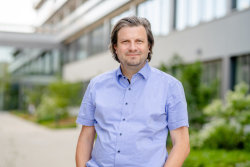
Contact
Personal website
Phone: +49 234 32 27492Email: alfred[dot]ludwig[at]rub[dot]deAbstract
Alfred Ludwig is Professor for Materials Discovery and Interfaces at the Institute for Materials and Scientific Director of the ZGH (Center for interface-dominated high-performance materials) of Ruhr University Bochum (RUB). In 1999 he received his Ph.D. in mechanical engineering from University of Karlsruhe. He then worked at the caesar research center in Bonn and became head of the research group "Combinatorial Materials Science" in 2002. At the same time, he started at RUB as junior professor and became full professor in 2012. His research interests include combinatorial materials science, high-throughput experimentation, material informatics, materials for nano/microsystems, thin films, with a focus on multifunctional materials for future energy systems, e.g. novel electrocatalysts. - Prof. Dr. Bastian Mei

Contact
Personal website
Email: bastian[dot]mei[at]rub[dot]deAbstract
We combine our knowledge in physical chemistry and engineering to study complex multiphase (solid/gas/liquid) catalytic reaction systems stimulated by (solar) light or electrical energy. Moreover, we integrate thermal energy or other stimuli to synergistically improve catalytic performances. Reactions of interest include water oxidation, production of oxidizing chemicals, hydrogen generation, selective alcohol oxidation, oxidative decarboxylation of carboxylic acids and purification of (industrial) waste streams using metal oxides and carbon based compounds. - Prof. Dr.-Ing. Thomas Mussenbrock

Contact
Personal website
Phone: +49 234 32 22488Email: thomas[dot]mussenbrock[at]rub[dot]deAbstract
I am a full professor of electrical engineering in the Department of Electrical Engineering and Information Sciences at Ruhr University Bochum, Germany. I hold the Chair of Applied Electrodynamics and Plasma Technology (AEPT). My research interests are in the area of modeling and simulation of low-temperature plasmas and plasma processes. I am also interested in transport phenomena at the nanoscale, in particular in nanoelectronic and nanoionic resistive switching devices. I received both the PhD and the venia legendi from Ruhr University Bochum, Germany. Prior to my current position (2016-2020), I was a full professor at Brandenburg University of Technology where I held the Chair of Electrodynamics and Physical Electronics in the Faculty of Mathematics, Computer Science, Physics and Electrical Engineering. - Prof. Dr. Ferdi Schüth

Contact
Personal website
Phone: +49 208 306-2373Email: schueth[at]kofo[dot]mpg[dot]deAbstract
I was born in 1960 in Warstein. I’m married and father of two daughters. I studied Chemistry at the Westfälische Wilhelms-Universität (Münster), where I received my doctorate in 1988. Additionally, in 1989, I passed the First State Exam in Law. After 5 years as scientific assistant at the Johannes-Gutenberg-Universität (Mainz) I became Professor in Chemistry in 1995. From 1995 till 1998 I worked as Professor for Inorganic Chemistry at the Johann-Wolfgang-Goethe-Universität (Frankfurt). Since 1998 I’m Director at the Max-Planck-Institut für Kohlenforschung (Mülheim an der Ruhr) and since 2014 Vice-President of the Max-Planck-Gesellschaft (Munich). My research field comprises: energy, biomass conversion, crystallization processes, synthesis of catalyst materials, catalysis, zeolites, ordered mesoporous materials and hydrogen storage materials. - Dr. Ilia Tumkin

Abstract
Ilya Tumkin is a postdoctoral researcher at the Chair of Applied Laser Technologies. His primary research interests include the development of innovative precursors for direct laser writing, which paves the way for the creation of advanced flexible electronic components and other devices . He is also deeply involved in the development and investigation of electrochemical sensory materials, with a particular focus on applications for glucose and neurotransmitter detection, aiming to improve diagnostic tools and health monitoring systems. Collaborating closely with colleagues, Ilya Tumkin investigates the exciting possibilities of direct laser fabrication of metallic and composite micropatterns utilizing precursors based on Deep Eutectic Solvents. This study not only contributes to advancements in materials science but also explores environmentally friendly and efficient manufacturing processes. In addition Ilya has an interest in forensic science. He conducts comprehensive studies on inks and paper documents to enhance forensic analysis techniques (Forensic Document Examination), contributing valuable insights and methodologies for the examination of questioned documents by combining spectroscopic and chromatographic approaches with machine learning techniques. Ilya obtained his Master degree (Chemistry) in 2010 at Saint Petersburg State University, Russia and then obtained his Ph.D. in 2016 at the Peter the Great St.Petersburg Polytechnic University (Russia). Before coming to Bochum he worked at the Saint Petersburg State University as Researcher, Assistant and Associate Professor. - Prof. Dr. Sebastian Weber
Contact
Personal website
Phone: +49 (0)234 32-22410Email: sebastian-ludger[dot]weber[at]ruhr-uni-bochum[dot]deAbstract
Since April 2020, Sebastian Weber is head of the Chair for Materials Technology at RUB. He obtained his PhD at RUB in 2005 and conducted research at MPIE and HZB afterwards, followed by a full professorship at Bergische Universität Wuppertal (BUW) in 2014. At BUW he was responsible for the establishment of a new foundation chair “Novel Manufacturing Technologies and Materials”, related to pronounced transfer activities with a particular emphasis on circular economy and sustainable development. His research is focused on metallic materials, particularly iron-base alloys. A key aspect of his research are processes and materials related to powder metallurgy, including sintering, hot-isostatic pressing and additives manufacturing technologies. In these fields of research, correlations between processing, material and energy consumption, resulting microstructures and properties are addressed by him, always under consideration of technical applications.
- Prof. Dr.-Ing. Peter Awakowicz

Contact
Personal website
Phone: +49 234 32 22487Email: awakowicz[at]aept[dot]rub[dot]deAbstract
A diverse spectrum of research is addressed. It includes atmospheric pressure plasmas combined with catalysts for air and gas purification (e.g., CRC 1316, Carbon2Chem) or atmospheric pressure plasmas for the deposition of light metal oxides. Furthermore, atmospheric pressure plasmas for disinfection and sterilisation, wound healing, cancer treatment (PlasNow) are investigated. Another research focus are low pressure plasmas for deposition of SiO2 layers on plastics for barrier and membrane applications or Low-pressure plasmas for the deposition of metal oxynitrides (SFB-TR 87). Finally, quantitative plasma diagnostics with optical, mass spectrometric and electrical methods realized within the research institute. - Prof. Dr. Lars Borchardt

Contact
Personal website
Phone: +49 (234) 3229431Email: lars[dot]borchardt[at]rub[dot]deAbstract
It is a major challenge of our time to develop sustainable chemical processes and to reduce the amount of waste generated by the chemical industry. Particularly solvents, often harmful for the environment, accumulate in many of the chemical processes. Our group develops new synthesis concepts, completely avoiding the use of any solvents. These syntheses are based on mechanochemistry. We utilize mechanical energy, which is brought into the system by ball milling, to initiate chemical reactions, rather than temperature as in conventional thermally-induced reactions. With this, an unconventional chemistry is possible with different reaction mechanism, reaction products, and product selectivities as compared to classical solvent-based syntheses. We are focusing on the mechanochemical synthesis of polymers, ceramics, and nanostructured materials such as porous carbons, polymer frameworks and nanographenes. We are motivated by the fundamental curiosity how ball-milling, commonly utilized to destroy matter, can be applied to construct fragile and defined materials. - Prof. Dr.-Ing. Martin Hoffmann

Contact
Personal website
Phone: +49 234 32 27700Email: martin[dot]hoffmann-mst[at]rub[dot]deAbstract
Martin Hoffmann is head of the Chair for Microsystems Technology at RUB. His key research is focused on silicon-based MEMS, contributing materials such as AlN and other thin films and on 2D materials for mechanical as well as electronic application. He coordinates the BMBF-funded “Forschungslabor Mikroelektronik Bochum für 2D-Elektroniksysteme“. Research in this field includes the extension from single 2D materials into complex applications. The core technology is based on a process-integrating cluster tool with five chambers for ALD, ALE, RIE and PECVD and thus fully automated 2D material integration on substrates up to 200 mm (silicon, glass, polymers). A further research topic is the structuring of complex glasses (earth-alkali alumosilicate glasses and glass ceramics such as Zerodur) by dry etching in fluorine-based plasmas. The research is mostly linked to application-specific process research. - Prof. Dr. Manfred Köller
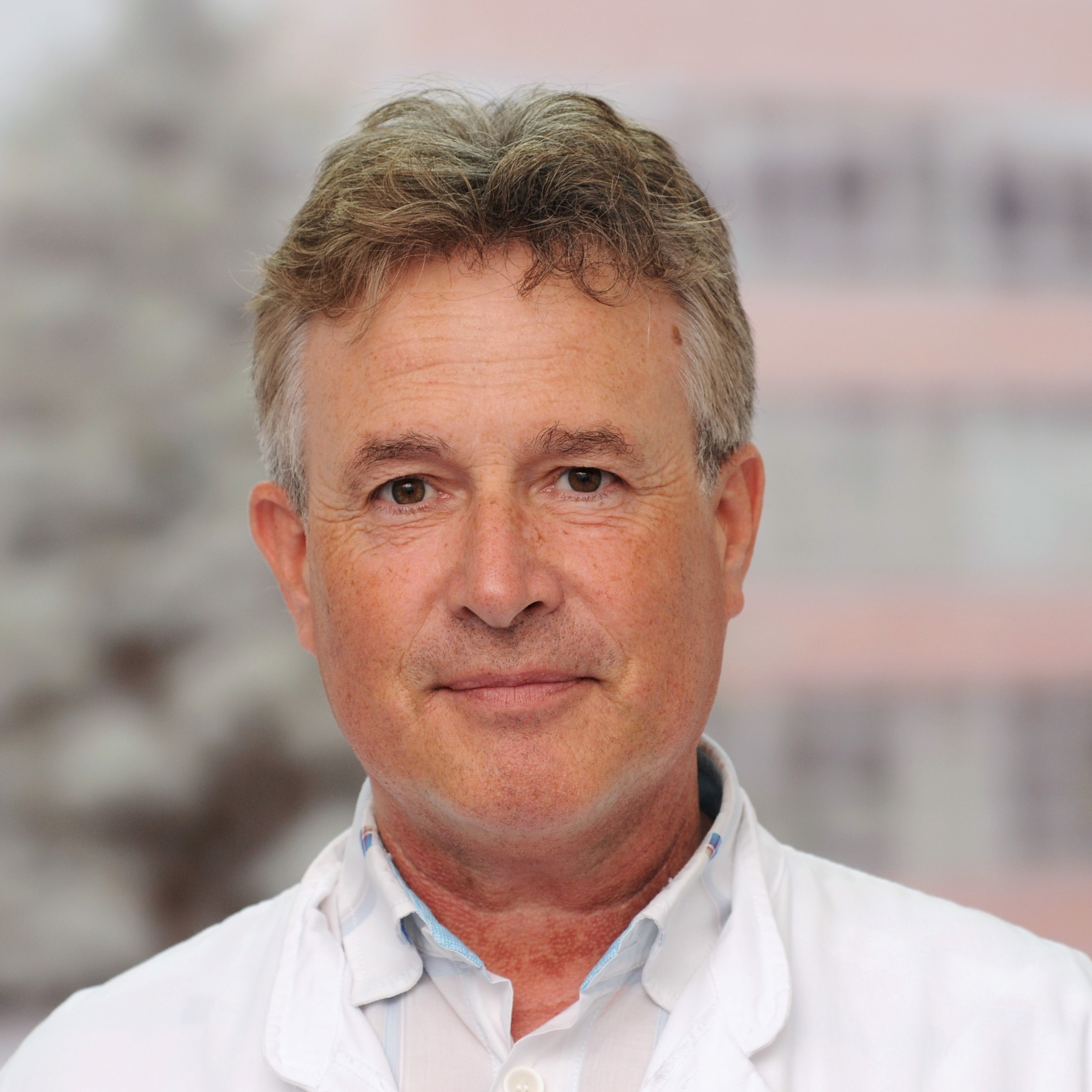
Contact
Personal website
Phone: +49 234 302 4722Email: manfred[dot]koeller[at]rub[dot]deAbstract
Manfred Köller is head of the Surgical Research which represents an integrated section of the Surgical Clinic of the BG University Hospital Bergmannsheil Bochum. He is a natural scientist (biology, microbiology, immunology). Clinically relevant questions are addressed by an interdisci¬plinary team consisting of physicians, biologists, and physicist. Since more than 20 years the research topics range from applied material science for the development and testing of new biomaterials to new possibilities offered by nanotechnology for example to combat bacterial infections and also include the use of adult stem cells for regenerative medicine. Laboratory equipment involve: cell laminar flow working benches, cell culture incubators cul-ture, microscopy (confocal, fluorescence), SEM, RP-HLPC, ELISA, chemilumi¬nescense- fluorescence imager, flow cytometer (FACSCalibur), automated bacterial colony counter. - Dr.-Ing. Jonathan Lentz

Contact
Personal website
Phone: +49 234 32-25967Email: lentz[at]wtech[dot]rub[dot]de - Prof. Dr. Bastian Mei

Contact
Personal website
Email: bastian[dot]mei[at]rub[dot]deAbstract
We combine our knowledge in physical chemistry and engineering to study complex multiphase (solid/gas/liquid) catalytic reaction systems stimulated by (solar) light or electrical energy. Moreover, we integrate thermal energy or other stimuli to synergistically improve catalytic performances. Reactions of interest include water oxidation, production of oxidizing chemicals, hydrogen generation, selective alcohol oxidation, oxidative decarboxylation of carboxylic acids and purification of (industrial) waste streams using metal oxides and carbon based compounds. - Prof. Dr. Simon Moser

Contact
Email: simon[dot]moser[at]ruhr-uni-bochum[dot]deAbstract
My research aims to develop a fundamental understanding of the electronic structure of complex transition-metal oxides and topological materials—systems that underpin both exciting quantum phenomena and emerging technological applications. I primarily investigate these materials using synchrotron-based spectroscopies such as angle-resolved photoemission (ARPES), for which I also develop intuitive yet predictive theoretical models and analysis methodologies. Currently, my work focuses on electron correlation and altermagnetism in the non-symmorphic Dirac semimetals RuO₂ and IrO₂, as well as the topological properties of atomic monolayers grown on SiC. These efforts span the full materials pipeline, from epitaxial synthesis to the exploration of surface electronic and catalytic properties. - Prof. Dr. Martin Muhler
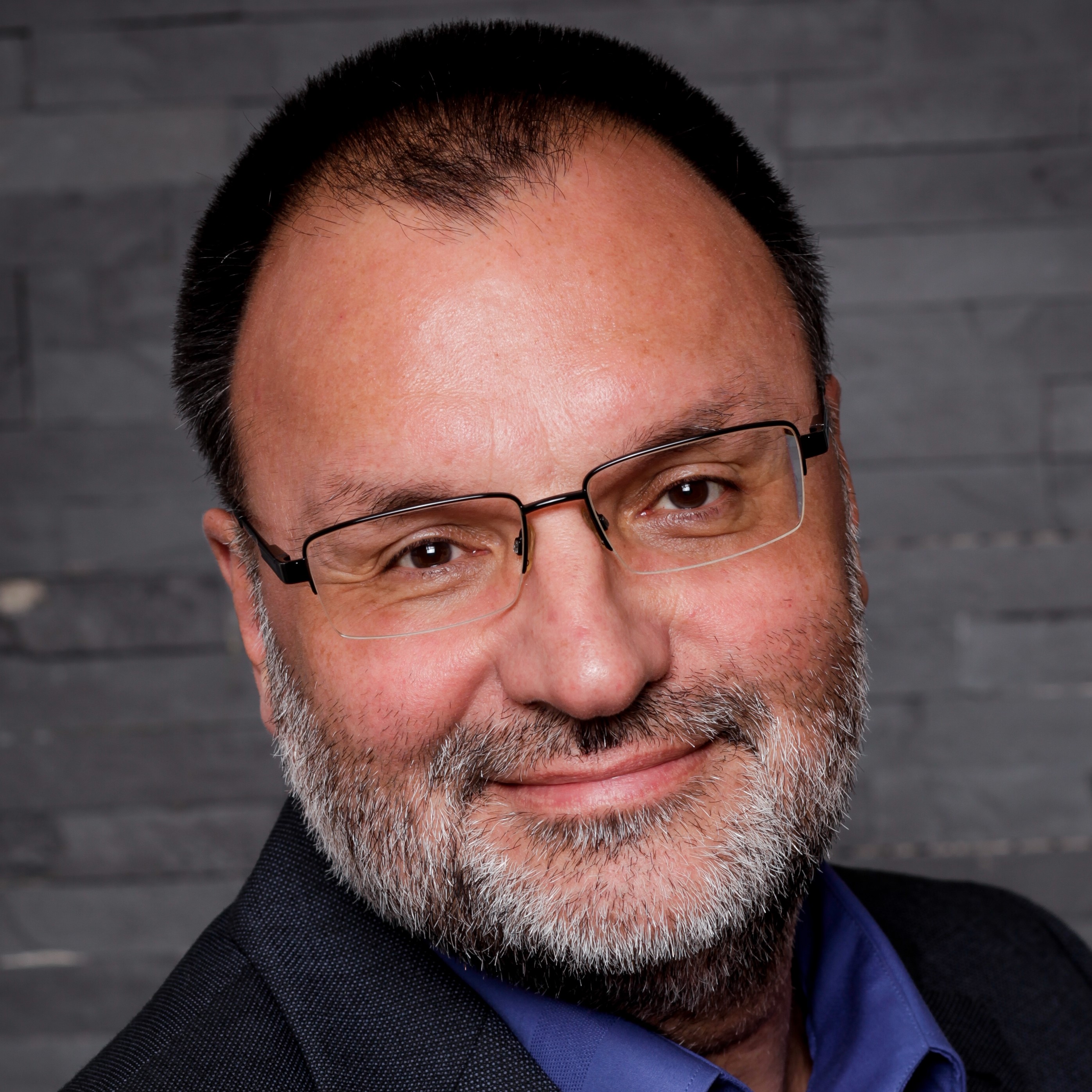
Contact
Personal website
Phone: +49 234 32 28754Email: martin[dot]muhler[at]rub[dot]deAbstract
The research at the Laboratory of Industrial Chemistry focuses on the synthesis and characterization of heterogeneous catalysts, which are essential for processes in chemical industry. We use a variety of synthetic methods such as impregnation, co-precipitation, spray drying or chemical vapor deposition, which are suitable for up-scaling. The catalysts are thoroughly characterized using bulk- and surface-sensitive methods complemented by advanced spectroscopy and transient kinetics. Finally, we analyze the catalytic performance under industrially relevant conditions studying methanol and Fischer-Tropsch synthesis or the synthesis of higher alcohols in the gas phase or selective oxidation and electrocatalysis in the liquid phase. We combine all these results to elucidate reaction mechanisms based on elementary steps and to improve the catalysts by rational design. - Prof. Dr.-Ing. Thomas Mussenbrock

Contact
Personal website
Phone: +49 234 32 22488Email: thomas[dot]mussenbrock[at]rub[dot]deAbstract
I am a full professor of electrical engineering in the Department of Electrical Engineering and Information Sciences at Ruhr University Bochum, Germany. I hold the Chair of Applied Electrodynamics and Plasma Technology (AEPT). My research interests are in the area of modeling and simulation of low-temperature plasmas and plasma processes. I am also interested in transport phenomena at the nanoscale, in particular in nanoelectronic and nanoionic resistive switching devices. I received both the PhD and the venia legendi from Ruhr University Bochum, Germany. Prior to my current position (2016-2020), I was a full professor at Brandenburg University of Technology where I held the Chair of Electrodynamics and Physical Electronics in the Faculty of Mathematics, Computer Science, Physics and Electrical Engineering. - Prof. Dr. Axel Rosenhahn

Contact
Personal website
Phone: +49 234 32-24200Email: axel[dot]rosenhahn[at]rub[dot]deAbstract
Axel Rosenhahn is Professor for Analytical Chemistry at the Ruhr-University Bochum. He received his Ph.D. at the University of Bonn in 2000. After a postdoc in the Materials Sciences Division of the Lawrence Berkeley National Laboratory at the Advanced Light Source, he joined 2002 Heidelberg University to obtain his venia legendi in Physical Chemistry in the area of Biointerfaces and coherent imaging. Between 2009 and 2012 he led a research group at the Institute of Functional Interfaces at the Karlsruhe Institute of Technology. In 2012 he was appointed by the Ruhr-University Bochum as Professor for Analytical Chemistry with a focus on Biointerfaces. His work aims on understanding the interaction of microorganisms and cells with polymer materials and its implication for biofouling and biomedical research. Surface modification and polymer synthesis in conjunction with surface characterization is used to correlate surface properties with biological response for a knowledge driven development of new coating technologies. To gain a deeper insight into the structure and dynamics of surface colonization by microorganisms, microfluidic assays, 3D tracking techniques, and X-ray nanoanalysis are developed and applied in his group. - Prof. Dr. Rochus Schmid

Contact
Personal website
Phone: +49 (0)234/32 24166Email: rochus[dot]schmid[at]rub[dot]deAbstract
Rochus Schmid leads the Computational Materials Chemistry (CMC) group at the Chair of Inorganic Chemistry 2. He works on the development and application of multiscale simulation methods for materials chemistry systems. One of his main fields of interest is the development of accurate force field models for flexible crystalline porous networks like metal-organic frameworks (MOFs) and related hybrid materials. Structural transformations of such systems by external stimuli can only be understood by efficient atomistic simulation models and protocols that allow to bridge length and time scales. He obtained his Ph.D. at the Technical University Munich and worked as a post-doctoral researcher at the University of Calgary in Canada before his Habilitation at the Ruhr-University Bochum. - Prof. Dr. Wolfgang Schuhmann

Contact
Personal website
Phone: +492343226200Email: wolfgang[dot]schuhmann[at]rub[dot]deAbstract
The research at the Chair of Analytical Chemistry - Center for Electrochemical Sciences (CES) focuses on a broad spectrum of research fields from bioelectrochemistry to materials for energy conversion. Specifically we design electrocatalysts for important reactions for energy conversion e.g. for the hydrogen evolution reaction, the oxygen reduction reaction, the oxygen evolution reaction and the CO2 reduction reaction among others. The catalysts are evaluated using nanoelectrochemical techniques, high resolution local electrochemistry and hyphenated techniques combining electrochemistry with spectroscopy. Finally, we evalaute the reactions in model electrolyzers under close to industrial conditions. Main focus is on the elucidation of reaction mechanisms, structure-activity-stability relations and the design of improved catalysts. - Prof. Dr. Ferdi Schüth

Contact
Personal website
Phone: +49 208 306-2373Email: schueth[at]kofo[dot]mpg[dot]deAbstract
I was born in 1960 in Warstein. I’m married and father of two daughters. I studied Chemistry at the Westfälische Wilhelms-Universität (Münster), where I received my doctorate in 1988. Additionally, in 1989, I passed the First State Exam in Law. After 5 years as scientific assistant at the Johannes-Gutenberg-Universität (Mainz) I became Professor in Chemistry in 1995. From 1995 till 1998 I worked as Professor for Inorganic Chemistry at the Johann-Wolfgang-Goethe-Universität (Frankfurt). Since 1998 I’m Director at the Max-Planck-Institut für Kohlenforschung (Mülheim an der Ruhr) and since 2014 Vice-President of the Max-Planck-Gesellschaft (Munich). My research field comprises: energy, biomass conversion, crystallization processes, synthesis of catalyst materials, catalysis, zeolites, ordered mesoporous materials and hydrogen storage materials. - Jun.-Prof. Dr. Christina Sengstock

Contact
Personal website
Phone: +49 234 302 4724Email: christina[dot]sengstock[at]ruhr-uni-bochum[dot]deAbstract
In 2011 I've completed my PhD in Biology and Biotechnology within the DFG SPP1313 „Nano-Bio-Response“ at the Surgical Research (University Hospital Bergmannsheil). After a brief time as Post Doc during which I´ve worked on nanostructured surfaces as anti-infective strategy I was appointed in 2015 as a Junior-professor. My research fields ranges from applied material science for the development and testing of new biomaterials to new possibilities provided by nanotechnology to combat e.g. bacterial infections to the regenerative medicine which includes the use of autologous stem cells for neuroregenerative approaches. In my lab we use a broad spectrum of methods ranging from microbiology, cell biology, confocal laser scanning microscopy to electron microscopy on diverse current projects from stem cell research to neurotraumatology. - Prof. Dr. Marialore Sulpizi

Contact
Personal website
Phone: +49 234 32 23737Email: marialore[dot]sulpizi[at]rub[dot]deAbstract
My research aims to understand the structure, dynamics and reactivity of solid-liquid interfaces using a multiscale approach that includes ab initio and atomistic molecular dynamics simulations. Our group pays special attention to electrified interfaces. Knowledge of the molecular structure of water and electrolyte solutions in the vicinity of a charged substrate is a prerequisite for the fundamental understanding of natural phenomena, such as transport and signal transmission at biomembranes, but also key to the further development of energy conversion and storage devices, such as in photocatalysis for water splitting. - Prof. Dr. Kristina Tschulik

Contact
Personal website
Phone: +49 0234 3229433Email: kristina[dot]tschulik[at]rub[dot]deAbstract
Kristina Tschulik heads the chair for Analytical Chemistry II “Electrocatalysis and Nanoscale Materials“at the Faculty of Chemistry and Biochemistry at RUB since 2018. Her research focusses on characterizing and tuning the physical properties of functional nanomaterials under application conditions and linking the properties of these materials to their intrinsic chemical (re-)activity for renewable energy technologies and sensing. To this end she develops and utilizes single entity electrochemistry and spectro-electrochemical methods. The latter combine electrochemistry with in situ or operando techniques, including mass spectrometry (DEMS), hyperspectral imaging dark field microscopy (EC HSI DFM), atomic force microscopy (EC-AFM) and surface enhanced IR and Raman Spectroscopy (SERS and SEIRAS). Driven by the transfer-supportive academic environment she had experienced as a postdoc at the University of Oxford, Kristina also initiated the chemistry-specific incubator “Start4Chem” at RUB.. - Dr. Ilia Tumkin

Abstract
Ilya Tumkin is a postdoctoral researcher at the Chair of Applied Laser Technologies. His primary research interests include the development of innovative precursors for direct laser writing, which paves the way for the creation of advanced flexible electronic components and other devices . He is also deeply involved in the development and investigation of electrochemical sensory materials, with a particular focus on applications for glucose and neurotransmitter detection, aiming to improve diagnostic tools and health monitoring systems. Collaborating closely with colleagues, Ilya Tumkin investigates the exciting possibilities of direct laser fabrication of metallic and composite micropatterns utilizing precursors based on Deep Eutectic Solvents. This study not only contributes to advancements in materials science but also explores environmentally friendly and efficient manufacturing processes. In addition Ilya has an interest in forensic science. He conducts comprehensive studies on inks and paper documents to enhance forensic analysis techniques (Forensic Document Examination), contributing valuable insights and methodologies for the examination of questioned documents by combining spectroscopic and chromatographic approaches with machine learning techniques. Ilya obtained his Master degree (Chemistry) in 2010 at Saint Petersburg State University, Russia and then obtained his Ph.D. in 2016 at the Peter the Great St.Petersburg Polytechnic University (Russia). Before coming to Bochum he worked at the Saint Petersburg State University as Researcher, Assistant and Associate Professor. - Prof. Dr. Robert Vaßen
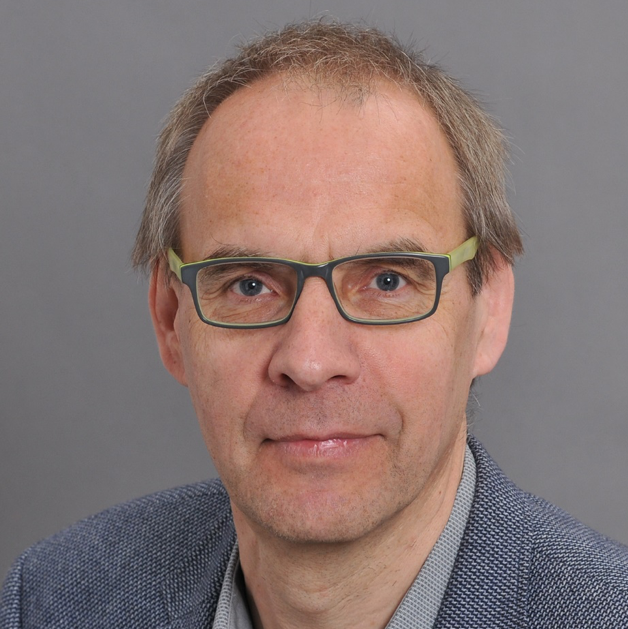
Contact
Personal website
Phone: +49 2461 616108Email: r[dot]vassen[at]fz-juelich[dot]deAbstract
The head of the department Materials for Advanced Power Plants at IEK-1, Forschungszentrum Jülich GmbH, is developing coatings and bulk materials especially for applications in advanced energy conversion systems. Major processing routes are thermal spray techniques used to apply for example oxidation resistant coatings and thermal / environmental barrier coatings on high temperature resistant substrates as superalloys and ceramic matrix composites. Frequent cooperations covering different TRLs exist with different partners from industry. Robert Vaßen has a professorship at the Ruhr University Bochum and gives lectures in engineering ceramics and coating technology. - Prof. Dr.-Ing. Heinz Voggenreiter

Contact
Personal website
Phone: +49 (0)711 68 62 444Email: heinz[dot]voggenreiter[at]dlr[dot]deAbstract
Professor Heinz Voggenreiter joined the German Aerospace Center (DLR) in 2005. He heads the Institute of Materials Research in Cologne and the Institute of Structures and Design in Stuttgart and Augsburg. The research portfolio spreads across the fields of metallic, ceramic and hybrid structures and materials, aerogels and aerogel-composites, thermoelectric systems and high-temperature and functional coatings. The development of numerical methods to simulate the behavior of materials and components completes these competencies. Beforehand, Voggenreiter worked for Airbus Group, formerly EADS, and Daimler AG. As founding member and vice chairman of the youth research center AEROSPACE LAB in Herrenberg, he actively promotes young pupils and students. Since 2005 Voggenreiter is a Professor at the University of Stuttgart for Lightweight Design in Aeronautics. In 2018 he became honorary member at the School of Engineering at the University of British Columbia in Kelowna (Canada). - Prof. Dr. Achim von Keudell
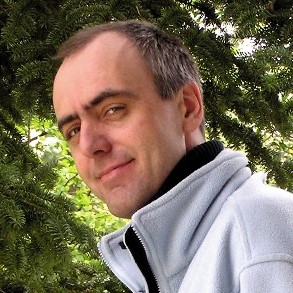
Contact
Personal website
Email: achim[dot]vonkeudell[at]rub[dot]deAbstract
Achim von Keudell is professor on experimental physics at Ruhr-University Bochum. His research focuses on surface processes in reactive plasmas by employing optical in-situ real time diagnostics and quantitative mass spectrometry. His team developed unique particle beam experiments to study heterogeneous surface reactions being relevant to the plasma boundary. His group works now on reactive microplasmas, on reactive high power impulse magnetron sputtering, and on plasma in liquids. He is currently the speaker of SFB 1316 “Transient Atmospheric Pressure Plasmas – from plasma to liquids to solids”. - Prof. Dr. Sebastian Weber
Contact
Personal website
Phone: +49 (0)234 32-22410Email: sebastian-ludger[dot]weber[at]ruhr-uni-bochum[dot]deAbstract
Since April 2020, Sebastian Weber is head of the Chair for Materials Technology at RUB. He obtained his PhD at RUB in 2005 and conducted research at MPIE and HZB afterwards, followed by a full professorship at Bergische Universität Wuppertal (BUW) in 2014. At BUW he was responsible for the establishment of a new foundation chair “Novel Manufacturing Technologies and Materials”, related to pronounced transfer activities with a particular emphasis on circular economy and sustainable development. His research is focused on metallic materials, particularly iron-base alloys. A key aspect of his research are processes and materials related to powder metallurgy, including sintering, hot-isostatic pressing and additives manufacturing technologies. In these fields of research, correlations between processing, material and energy consumption, resulting microstructures and properties are addressed by him, always under consideration of technical applications. - Dr. Wei Xia

Contact
Personal website
Phone: +49 0234 32 23566Email: wei[dot]xia[at]techem[dot]rub[dot]deAbstract
Wei Xia graduated from Tongji University, Shanghai, China and moved to Germany in 2001. After master study in Polymer Science at Martin-Luther University Halle-Wittenberg he moved to Bochum and obtained his PhD in 2006 from the Laboratory of Industrial Chemistry at Ruhr-University, where he has since worked. From 2008 to 2016 he was the group leader of “Carbon materials and electrocatalysis” in the Lab. After a special leave and stay in China for 3 years he has been a senior scientist and scientific manager in the Laboratory of Industrial Chemistry at RUB since 2019. Wei Xia won the second Patent Inventor Prize of the state Northrhine-Westfalia in 2007. He works now on carbon materials and catalysis used for hydrogen production. - Dr. Ridha Zerdoumi

Contact
Email: ridha[dot]zerdoumi[at]rub[dot]deAbstract
Ridha Zerdoumi is a group leader of the “High-Entropy Intermetallics for Electrocatalysis” group at the Institute of Materials at RUB. He studied Physical Chemistry and Materials Science and obtained his doctorate from Chemnitz University of Technology. The group’s research focuses on the design of high-entropy intermetallic compounds (HEIMCs), ranging from conventional binary and ternary intermetallics to multicomponent materials. These materials combine the multifunctionality of high-entropy systems with the ordered structure of intermetallic compounds to enhance electrocatalytic performance. A key aspect of the group’s work is unraveling the role of surface atomic arrangements in governing electronic and geometric effects, which are crucial for optimizing activity, selectivity, and stability in electrocatalysis. Structure-property correlations are established by integrating combinatorial sputtering, high-throughput electrochemical characterization, and computational modeling to accelerate the discovery and optimization of next-generation electrocatalysts for electrochemical energy conversion.
- Dr.-Ing. Santiago Benito

Contact
Personal website
Phone: (0) 234 32-27233Email: benito[at]wtech[dot]rub[dot]deAbstract
Santiago Benito is a postdoc researcher and group leader in Materials Characterization and Design at the Chair of Materials Technology of the RUB. Coming from a background in microstructure analysis, he applies state-of-the-art statistical and computational methods to describe and understand microstructures and thus explore and exploit correlations between processing and properties. Within his group, these activities are complemented with thermophysical and thermomechanical testing and coupled with thermodynamic and kinetic modeling. Metallic materials are the focus of the research, particularly iron-base alloys. He specializes in powder metallurgy techniques such as powder bed fusion and hot isostatic pressing. - Prof. Dr. Anna Böhmer

Contact
Personal website
Phone: +49 234 32 23649Email: boehmer[at]physik[dot]ruhr-uni-bochum[dot]deAbstract
I am currently building up a new quantum materials group at the physics department of the Ruhr-University. Our goal is to elucidate the interaction of correlated electronic phases with each other, with the crystal lattice and with the environment by a variety of experimental techniques. We will prepare singly-crystalline samples and study their structural, electrical, thermodynamic and mechanical properties in a wide and cryogenic temperature range and also in high magnetic fields. By manipulating these materials, we aim to discover new physics and interesting functional properties. - Prof. Dr. Sumit Chakraborty

Contact
Personal website
Phone: +492343224395Email: sumit[dot]chakraborty[at]rub[dot]deAbstract
I studied geosciences at Presidency College and Calcutta University in India and then did a PhD at the Unviersity of Arizona in the USA. This was followed by post-doctoral positions at Bayreuth and Cologne, leading to a habilitation degree at Cologne. After that I became a professor at the Ruhr University at Bochum, and have held visiting positions at the University of California, Berkeley; University College Dublin, Trinity College Dublin, the University of Oviedo, and the IISER-Kolkata in India. I am an associate editor for the journal Earth and Space Chemistry that was recently established by the American Chemical Society, and have held several committee positions in different societies such as the Mineralogical Society of America and American Geophysical Union. I was a distinguished lecturer of the Mineralogical Society of America and was awarded the Dana Medal by them in 2016. The petrology group at Bochum specializes in timescales of geological processes. This is done through the study of diffusion and other kinetic processes in solid and molten material, with an emphasis on silicates and oxides. Specific skills lie in the areas of production of thin films using pulsed laser deposition (PLD), study of point defect thermodynamics and diffusion mechanisms, determination of diffusion coefficients and phase relations at high pressures, and nanoscale chemical analysis (high resolution, FEG-based electron microprobe analyses; RBS, NRA, PIXE etc. at the accelerator facility at RUBION; SIMS analyses at CENIDE in Duisburg within the scope of the Ruhr alliance). Modelling of solid state diffusion-based kinetic processes is another area of expertise. - Prof. Dr. Ilya Eremin

Contact
Personal website
Phone: +49 0234 32 26604Email: ilya[dot]eremin[at]rub[dot]deAbstract
My group research activity lie in general field of quantum many-body theory and its application in condensed matter and related systems. Our particular interests are related to the investigation of strongly correlated low-dimensional electronic and magnetic systems, unconventional superconductivity, non-equilibrium phenomena, topological field theories in topological insulators and novel states of matter forming at the interfaces. - Prof. Dr. Anna Grünebohm

Contact
Personal website
Phone: +49 234 32 29377Email: anna[dot]gruenebohm[at]rub[dot]deAbstract
Anna Grünebohm is head of the group Scale-bridging Simulation of Functional Composites at the Interdisciplinary Centre for Advanced Materials Simulation (ICAMS) and a junior professor in the Departments for Mechanical Engineering and Physics and Astronomy at RUB. Currently, she is member of the MRD board and course director of the graduate school Scale-bridging Materials Modelling. Her work focuses on the computer aided design of functional ferroelectric materials for energy technology. In particular she is interested in the coupling between microstructure, phase transitions and the magnitude and reversibility of functional responses. Anna obtained her Ph.D. at the Faculty of Physics at the University of Duisburg-Essen and before coming to Bochum she worked in the priory program Ferroic cooling. - Dr. Thomas Hammerschmidt

Contact
Personal website
Email: thomas[dot]hammerschmidt[at]rub[dot]deAbstract
Thomas Hammerschmidt is leader of the research group Atomistic Simulation of Structural and Phase Stability in the Department Atomistic Modelling and Simulation of Prof. Dr. Ralf Drautz at the Interdisciplinary Centre for Advanced Materials Simulation (ICAMS). Thomas develops and applies data-driven and atomistic methods in order to join correlative classical data science with causative physical models as the key to predictive computational materials science. To this end he combines modern machine learning techniques with a hierarchy of atomistic simulation methods that range from density-functional theory to coarse-grained representations of the interatomic interaction in steels, superalloys and batteries. Thomas obtained his Ph.D. at the Fritz-Haber-Institute of the Max-Planck-Society and the Technical University Berlin. Before coming to Bochum Thomas worked at the University of Oxford as postdoctoral research assistant. - Dr. Tilmann Hickel

Contact
Personal website
Phone: +211-6792575Email: hickel[at]mpie[dot]deAbstract
Dr. Tilmann Hickel leads the group for Computational Phase studies at the Research Department Computational Materials Design at Max-Planck-Institut für Eisenforschung in Düsseldorf. The research in the group is focused on the development and application of state-of-the-art ab initio techniques employing density functional theory (DFT). - Prof. Dr. Andrea Kirsch

Contact
Phone: +49 234 32 18402Email: a[dot]kirsch[at]ruhr-uni-bochum[dot]deAbstract
Andrea Kirsch leads the Oxidic Functional Materials Group in RC FEMS and is a Tenure-Track Assistant Professor at the Faculty of Chemistry and Biochemistry at the Ruhr University Bochum. Positioned at the intersection of chemistry, physics, and materials science, her group aims to develop advanced materials for future energy applications. One of the foci is the development of innovative strategies for material design by unraveling how atomic, electronic, and microstructural features evolve during synthesis or under external stimuli. To achieve this, we use cutting-edge characterization techniques at large-scale facilities such as synchrotrons, allowing us to study these dynamic processes in real time. One material class in focus are high-entropy oxides, which represent compositionally complex solid solutions. They break with traditional design concepts by incorporating multiple elements in nearly equal proportions within a single crystalline structure. This novel approach offers remarkable flexibility for tailoring material properties, opening new avenues for functionality and performance. By establishing synthesis-structure-performance relationships and guiding design principles, our research aims at developing the next generation of materials that could drive advances in catalysis, energy storage, and sustainable technologies. - Dr. Andreas Kreyssig

Contact
Personal website
Phone: +49 (0) 234 32 - 23648Email: andreas[dot]kreyssig[at]rub[dot]de - Jun.-Prof. Dr. Guillaume Laplanche

Contact
Personal website
Phone: +49 234 32-25912Email: guillaume[dot]laplanche[at]rub[dot]deAbstract
I’ve completed my PhD in Materials Science at the P’ Institute (Insitut Polytechnique de Poitiers, France) in 2011. After a brief time as a Humboldt fellow at the Ruhr-University Bochum during which I've worked on small-scale mechanical behavior of shape memory alloys, I was appointed in 2016 as a Junior-professor. My main research activities cover investigations on the relationship between processing parameters, microstructures and mechanical properties of metallic and intermetallic materials. Currently the main focus of my research group “Microstructure of materials” is on High-entropy alloys. In particular I study the effect of the chemical composition on mechanical properties as well as phase stability and precipitation kinetics. - Prof. Dr.-Ing. Viktor Scherer

Contact
Personal website
Phone: +49 (0)234 / 32-26328Email: viktor[dot]scherer[at]ruhr-uni-bochum[dot]deAbstract
Viktor Scherer is head of the chair Energy Plant Technology. He obtained his PhD at KIT, Karlsruhe. After 10 years in the power plant industry he joined RUB. At RUB he is vice-spokesperson of the Collaborative Research Centre (CRC) Oxyflame (SFB/TR129) and the spokesperson of the CRC SFB/TR 287 Bulk-Reaction which focuses on reacting and moving granular assemblies with gas flow. He is an elected member of the DFG Review Board Fluid Mechanics, Technical Thermodynamics and Thermal Energy Engineering. His research interest is focused on the optimization of industrial high temperature processes including processes for material treatment such as blast furnace, lime shaft kilns or rotary kilns. He uses the combined Computational Fluid Dynamics – Discrete Element approach (DEM/CFD) to describe these reactors and to predict the properties of the materials treated. - Prof. Dr. Ingo Steinbach

Contact
Personal website
Email: ingo[dot]steinbach[at]rub[dot]deAbstract
Ingo Steinbach is director of the Department for “Scale-bridging Thermodynamic and Kinetic Simulation (STKS)” at the Interdisciplinary Centre for Advanced Materials Simulation (ICAMS), professor in the Department of Mechanical Engineering and associated for Physics and Astronomy at RUB. He is one of the pioneers in “Phase-Field Modelling and Simulation”, an advance technique to simulate microstructure evolution and phase-transformations at the mesoscopic scale. Based on a solid ground in thermodynamically consistent continuum models, it uses accurate numerics for solving the moving boundary problem of evolving interfaces coupled to transport phenomea in the bulk phases, such as multicomponent diffusion, elastic and plastic interaction in solid and fluid flow in liquid and gas. Also electrical and magnetic effects are accessible by the method. Mostly focusing on metallic systems, also minerals and polymers are investigated in close collaboration with experimental groups. - Prof. Dr. Sebastian Weber
Contact
Personal website
Phone: +49 (0)234 32-22410Email: sebastian-ludger[dot]weber[at]ruhr-uni-bochum[dot]deAbstract
Since April 2020, Sebastian Weber is head of the Chair for Materials Technology at RUB. He obtained his PhD at RUB in 2005 and conducted research at MPIE and HZB afterwards, followed by a full professorship at Bergische Universität Wuppertal (BUW) in 2014. At BUW he was responsible for the establishment of a new foundation chair “Novel Manufacturing Technologies and Materials”, related to pronounced transfer activities with a particular emphasis on circular economy and sustainable development. His research is focused on metallic materials, particularly iron-base alloys. A key aspect of his research are processes and materials related to powder metallurgy, including sintering, hot-isostatic pressing and additives manufacturing technologies. In these fields of research, correlations between processing, material and energy consumption, resulting microstructures and properties are addressed by him, always under consideration of technical applications.
